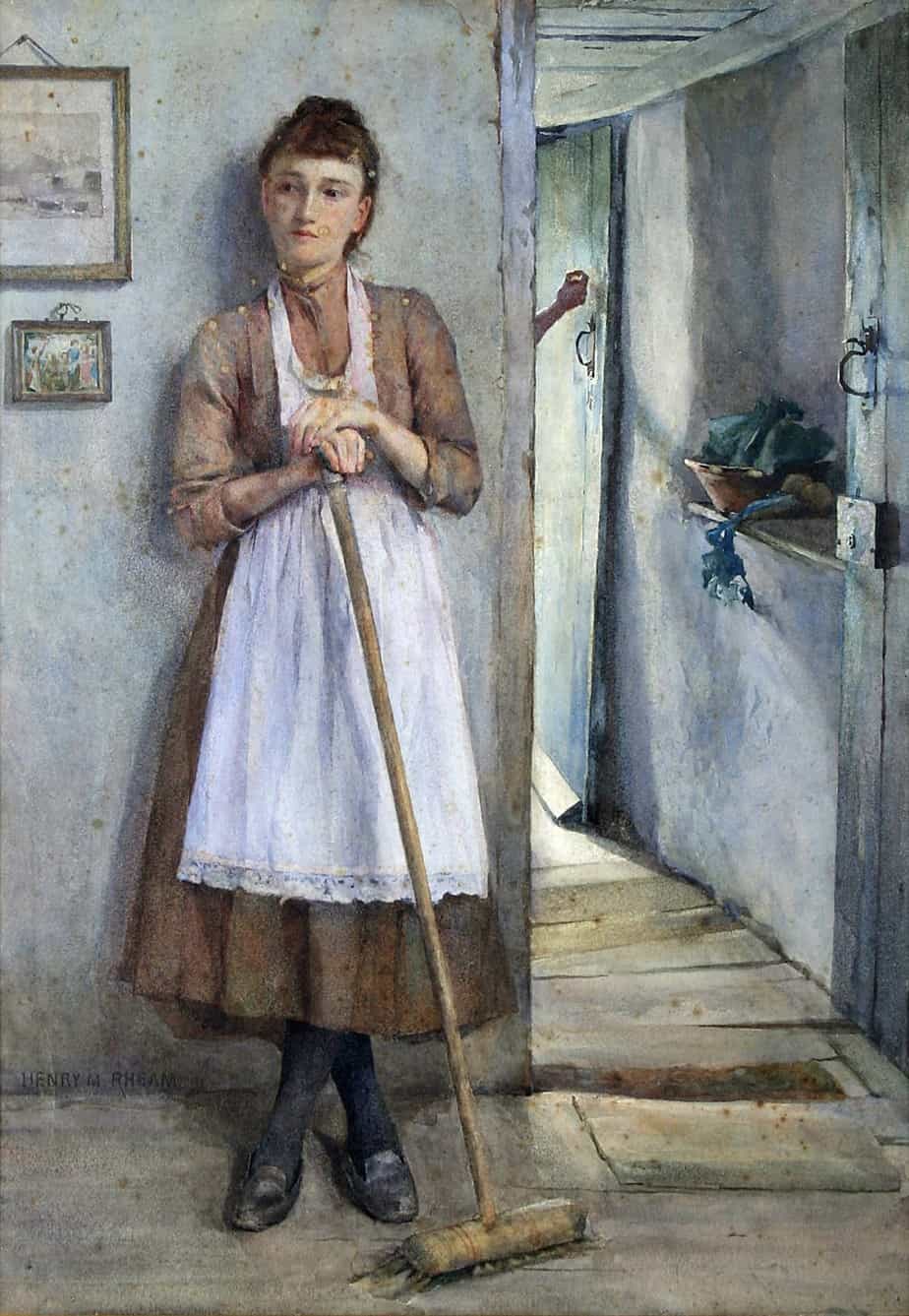Broomsticks are useful storytelling symbols that serve double duty — they are a symbol of female oppression (tied to the house and the drudgery of housework) but also, by leap of imagination, turn into a vehicle by which to escape. Broomsticks may keep a woman housebound, but also afford the imaginative freedom to fly.
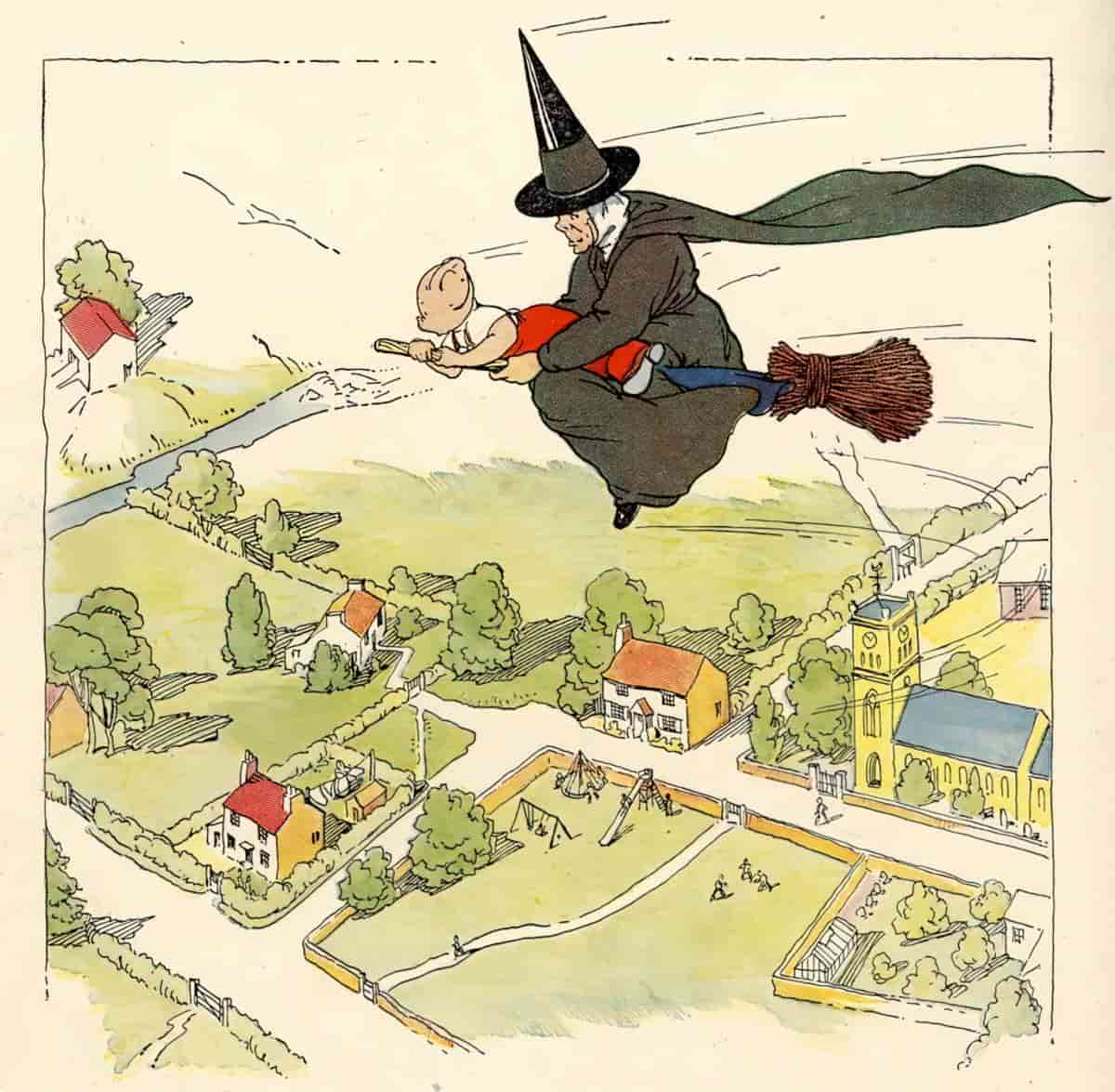
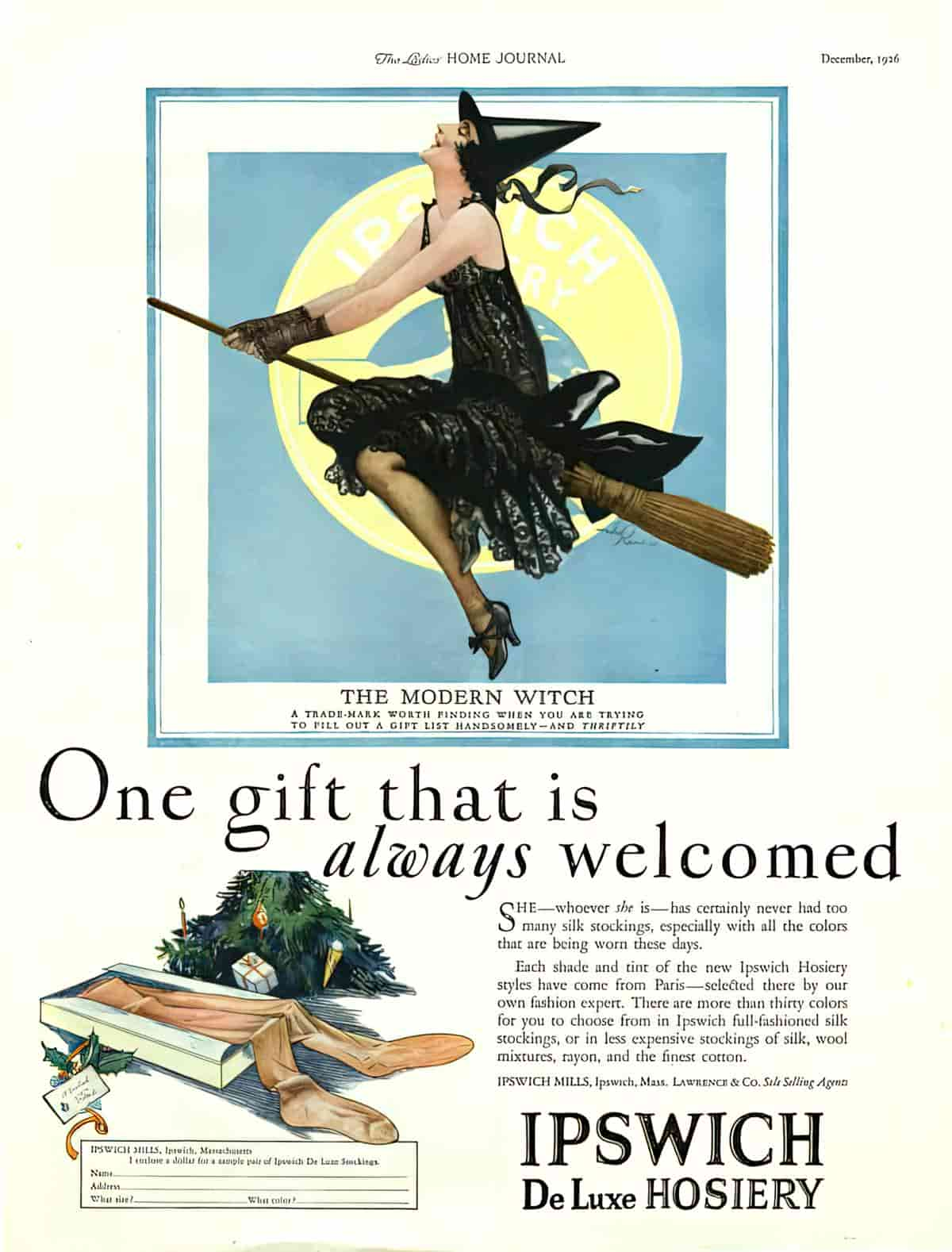
Which is the correct way to sit on a broomstick? Take a look at the images below:
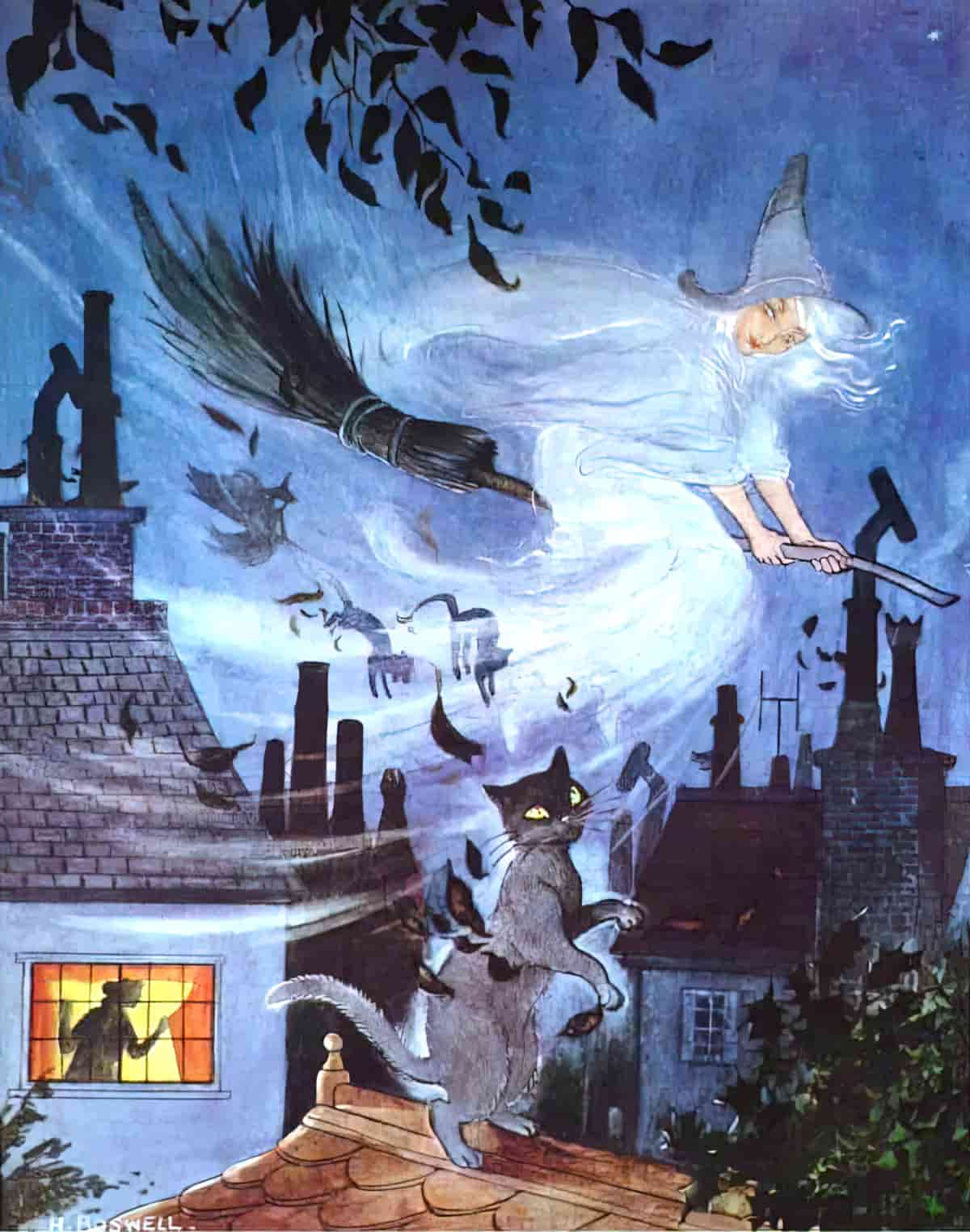
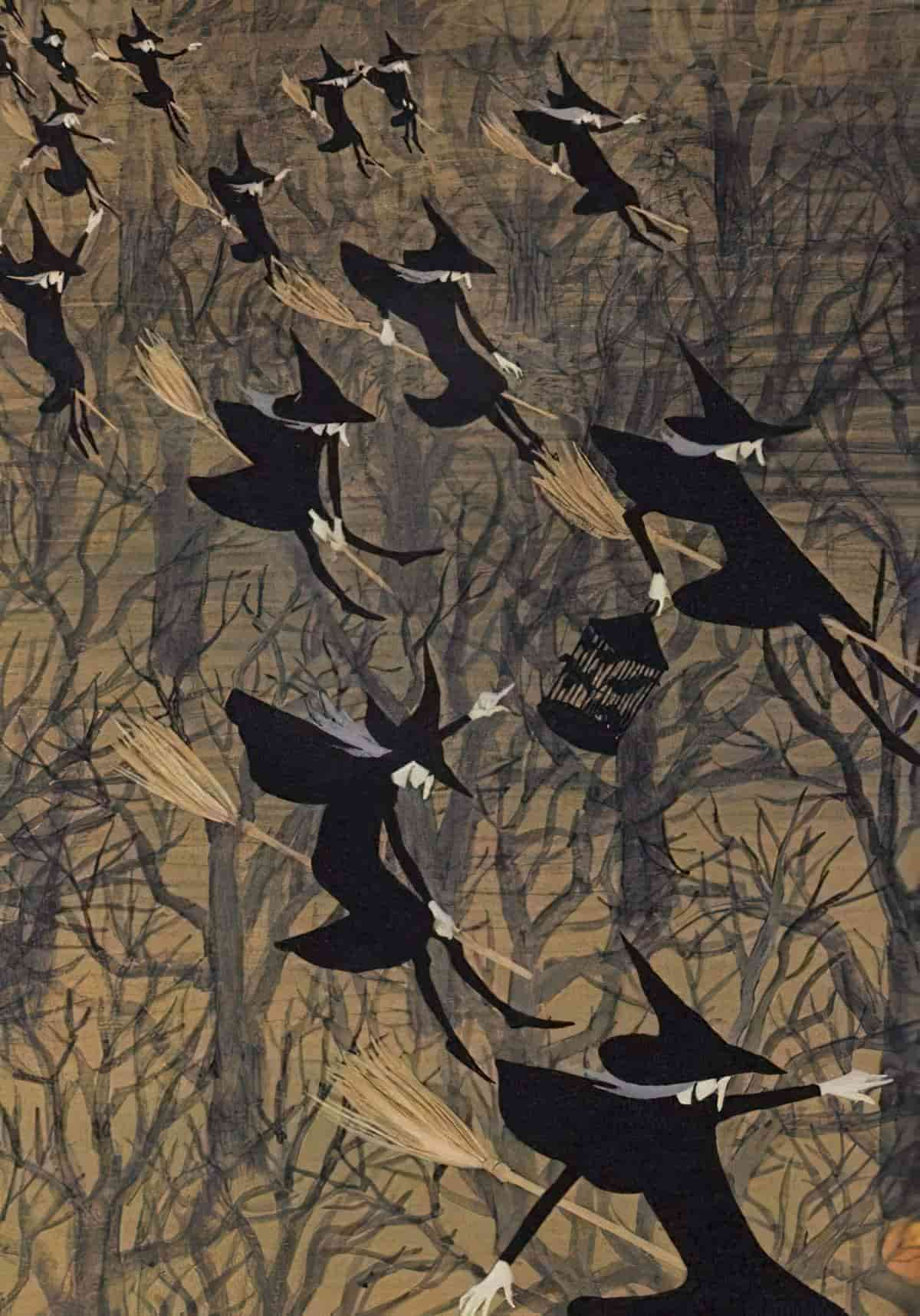
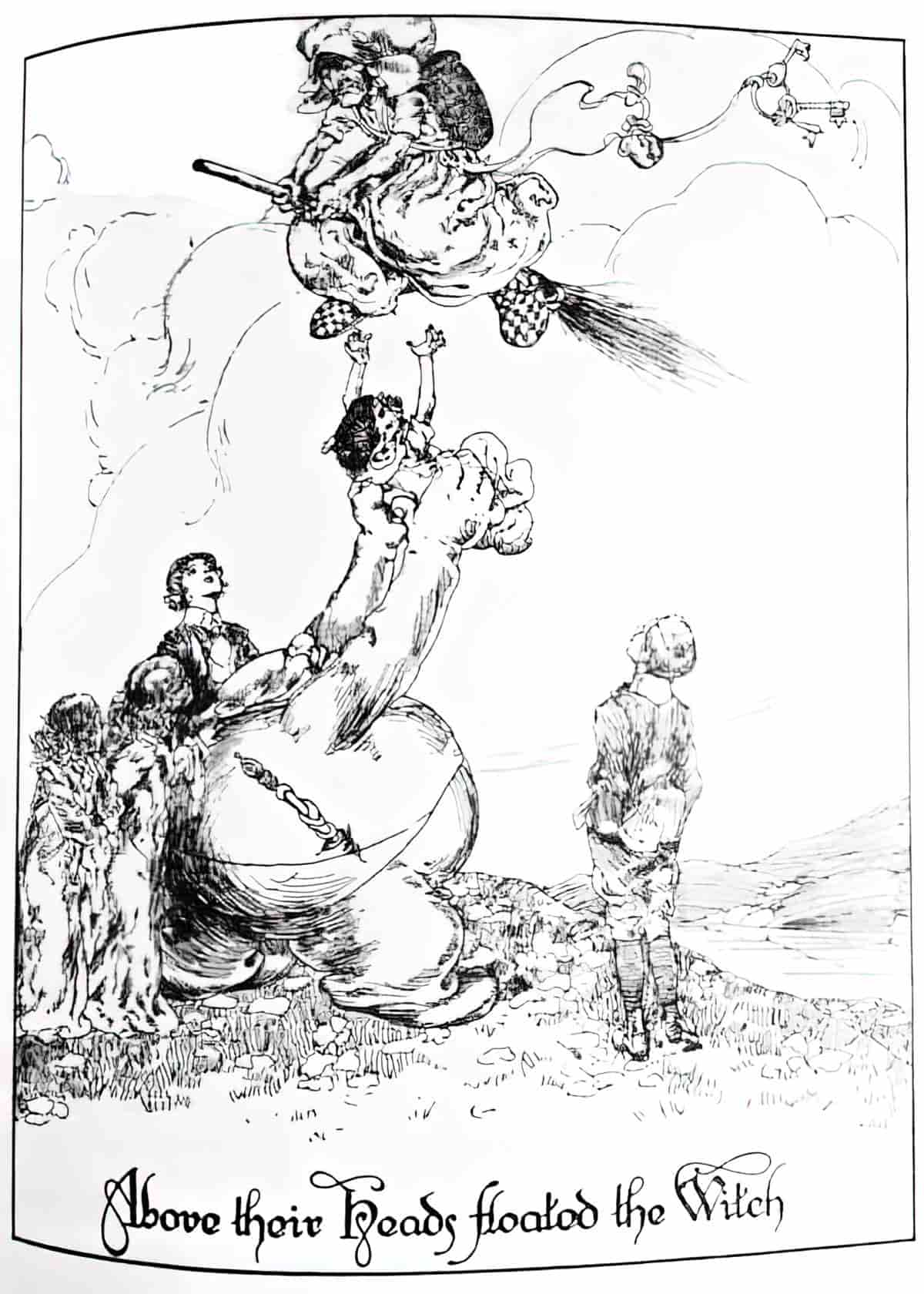
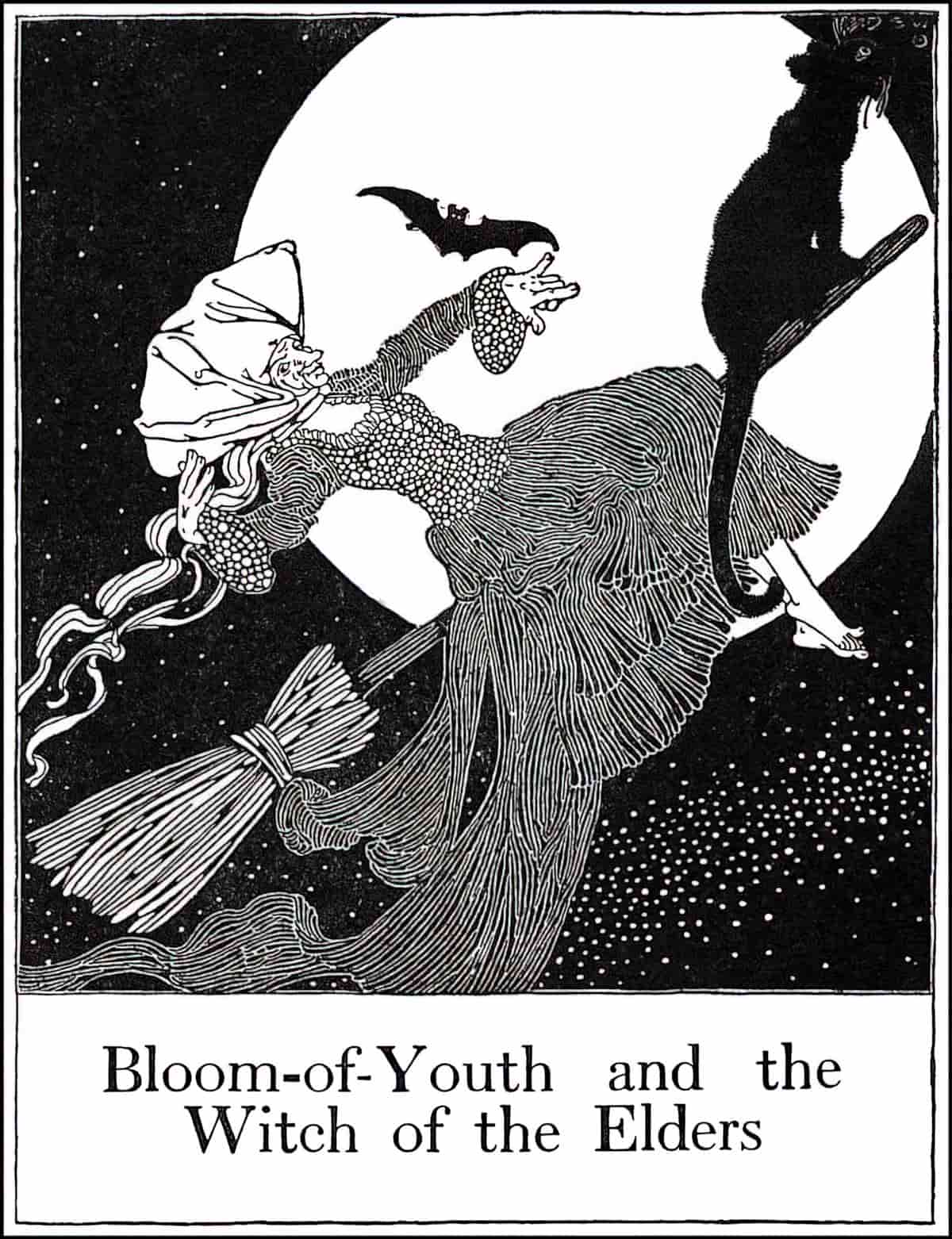
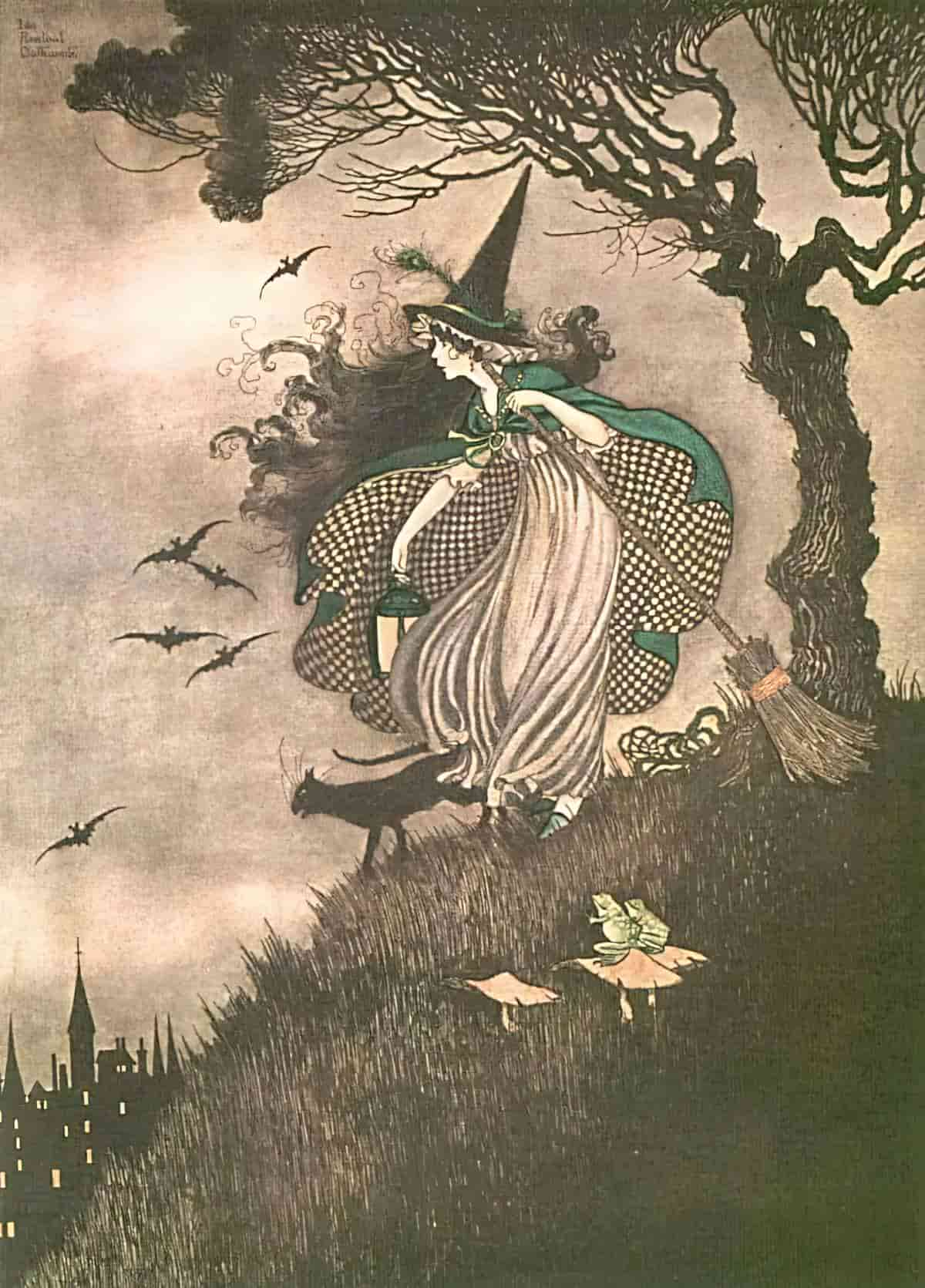
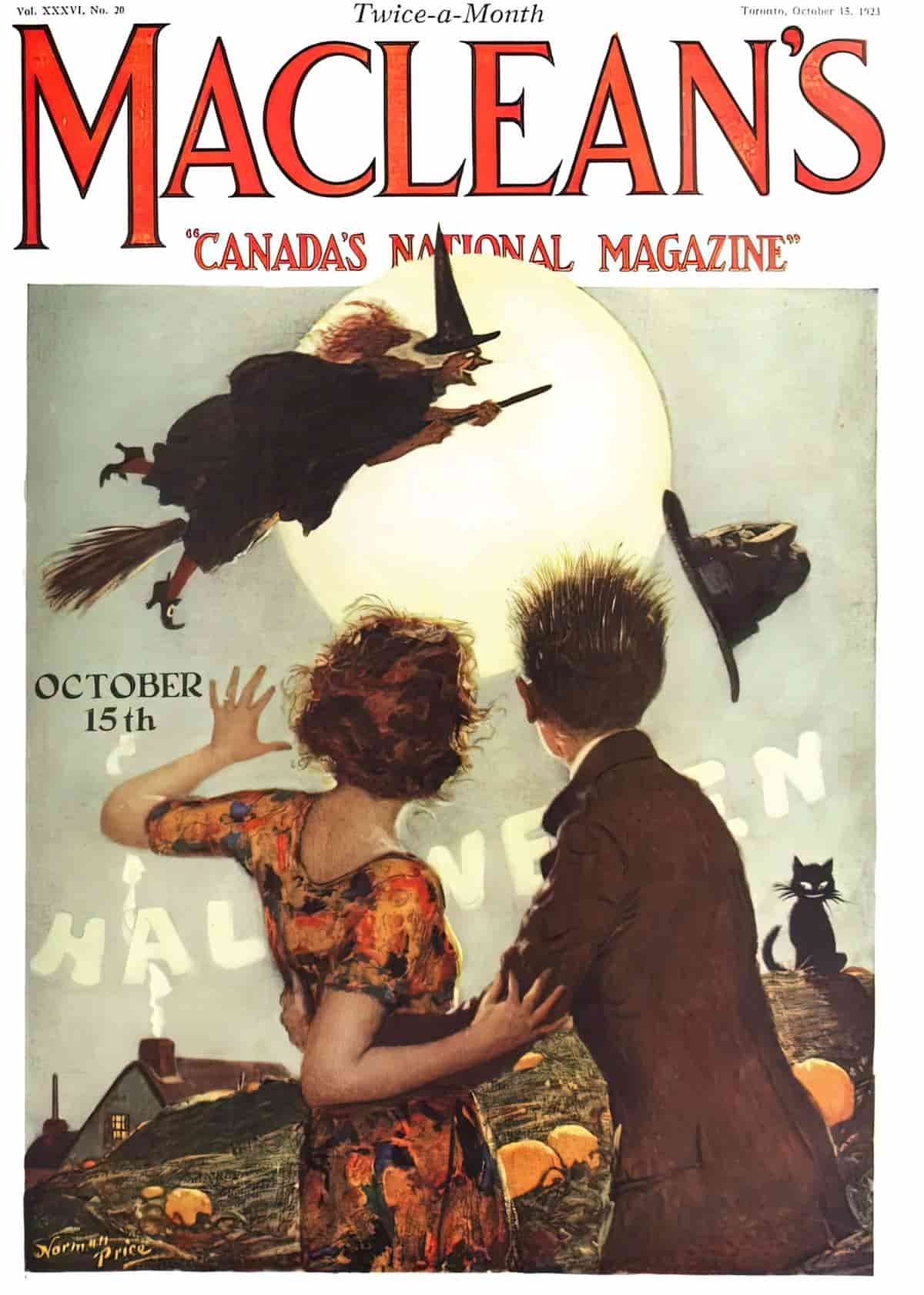
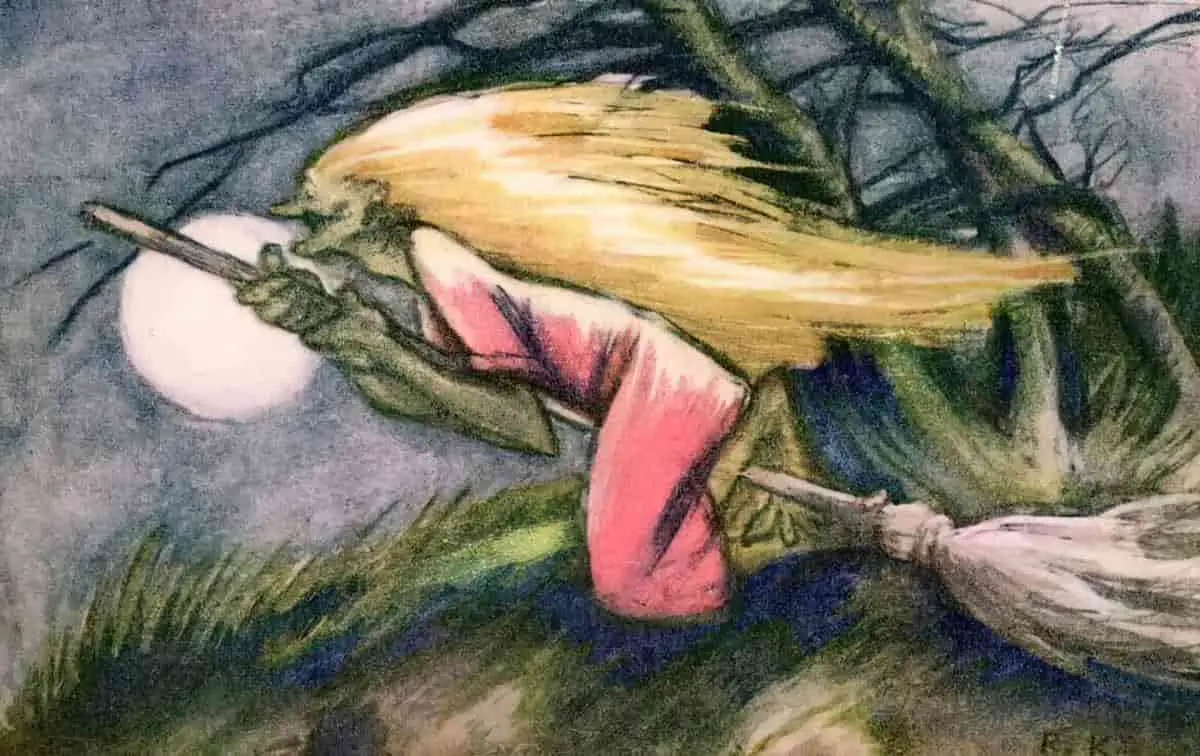
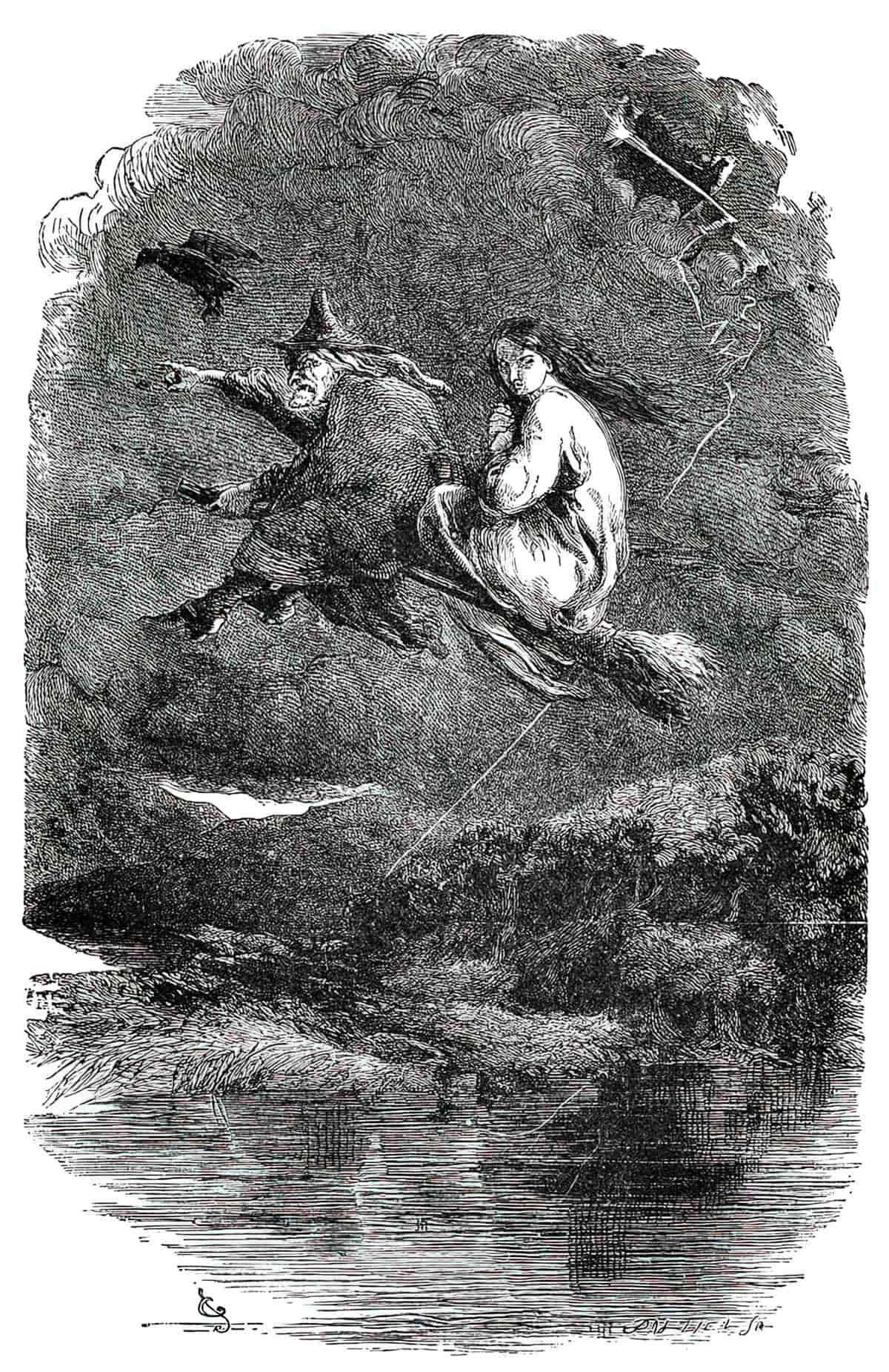
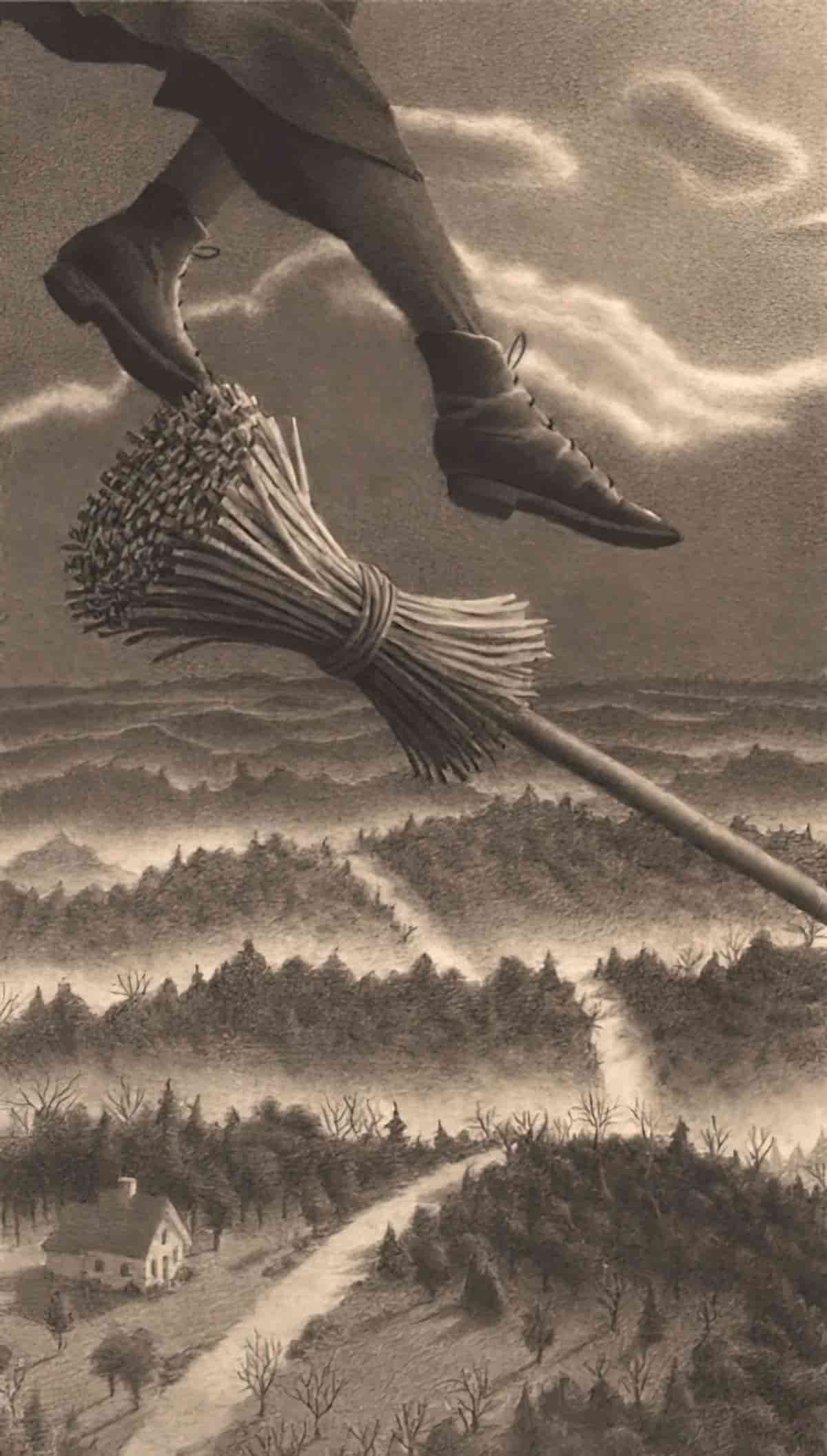
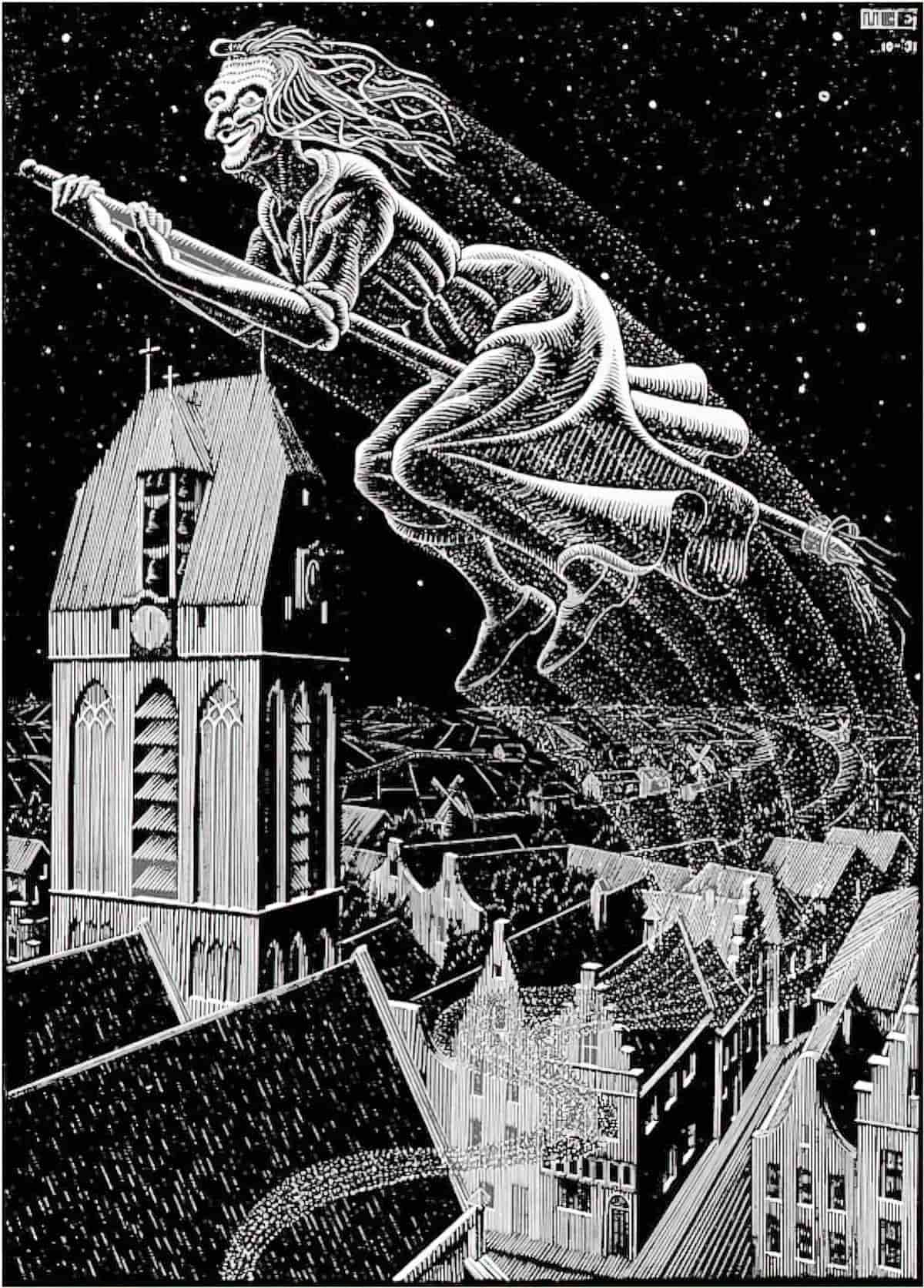
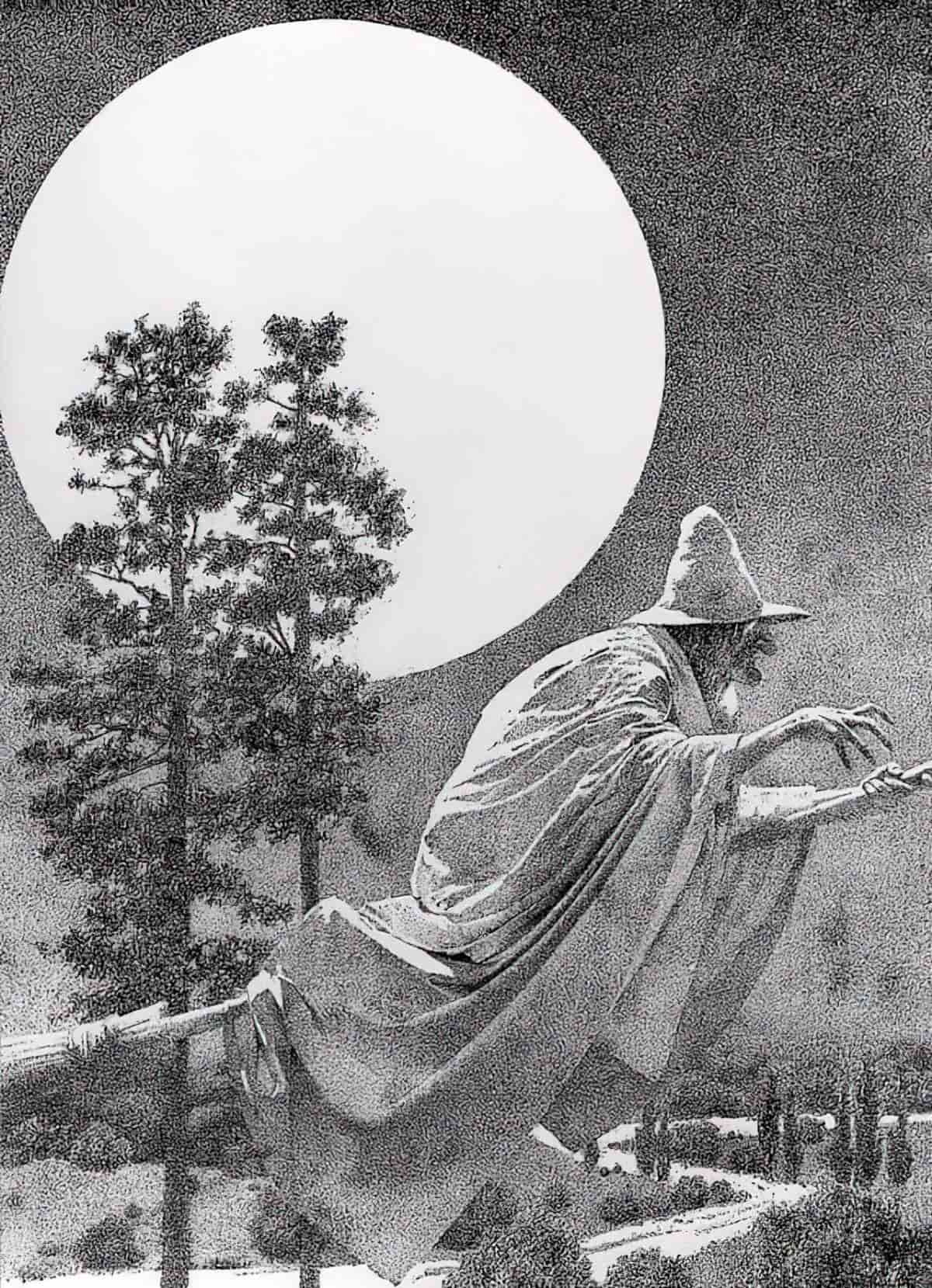
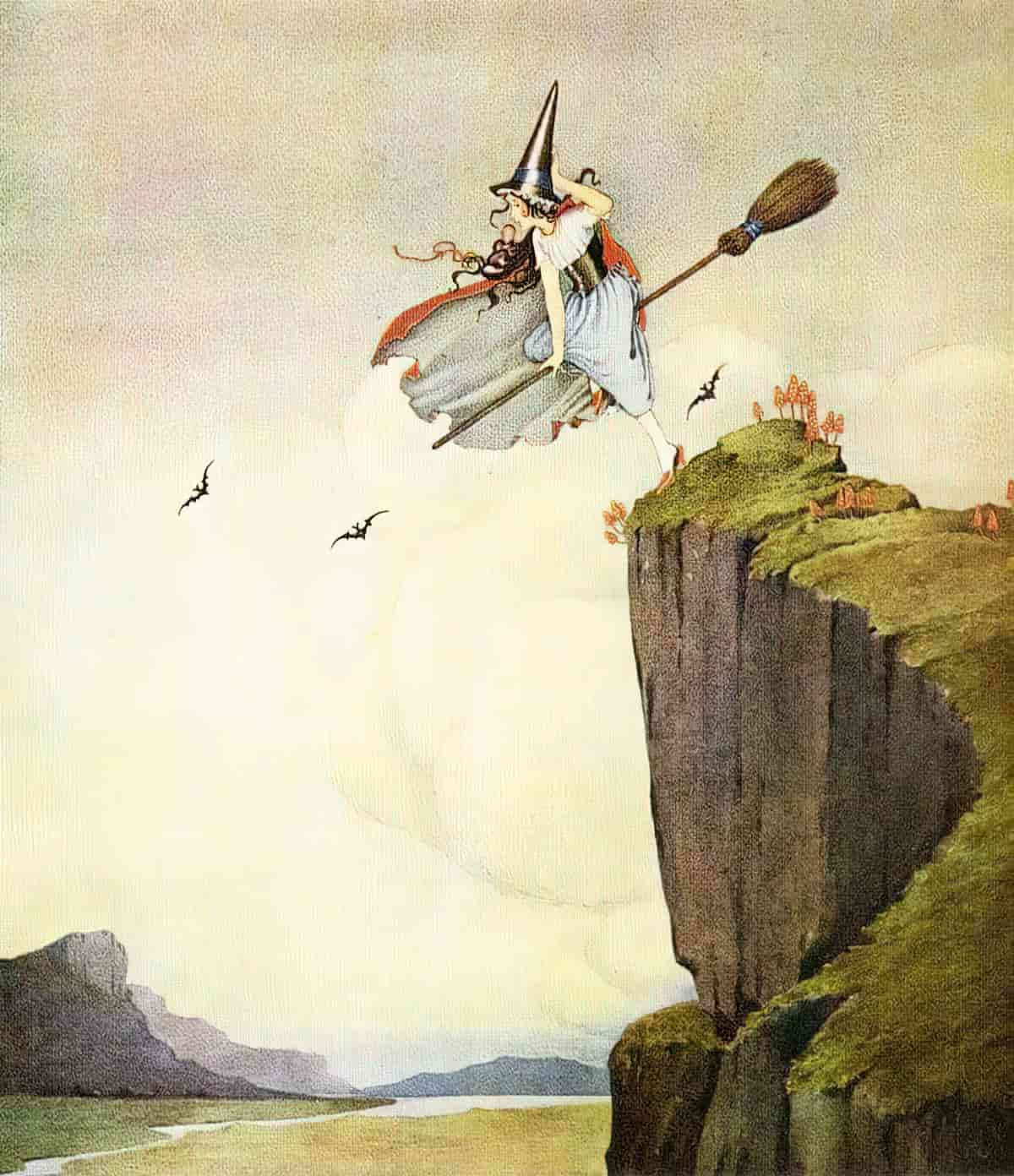
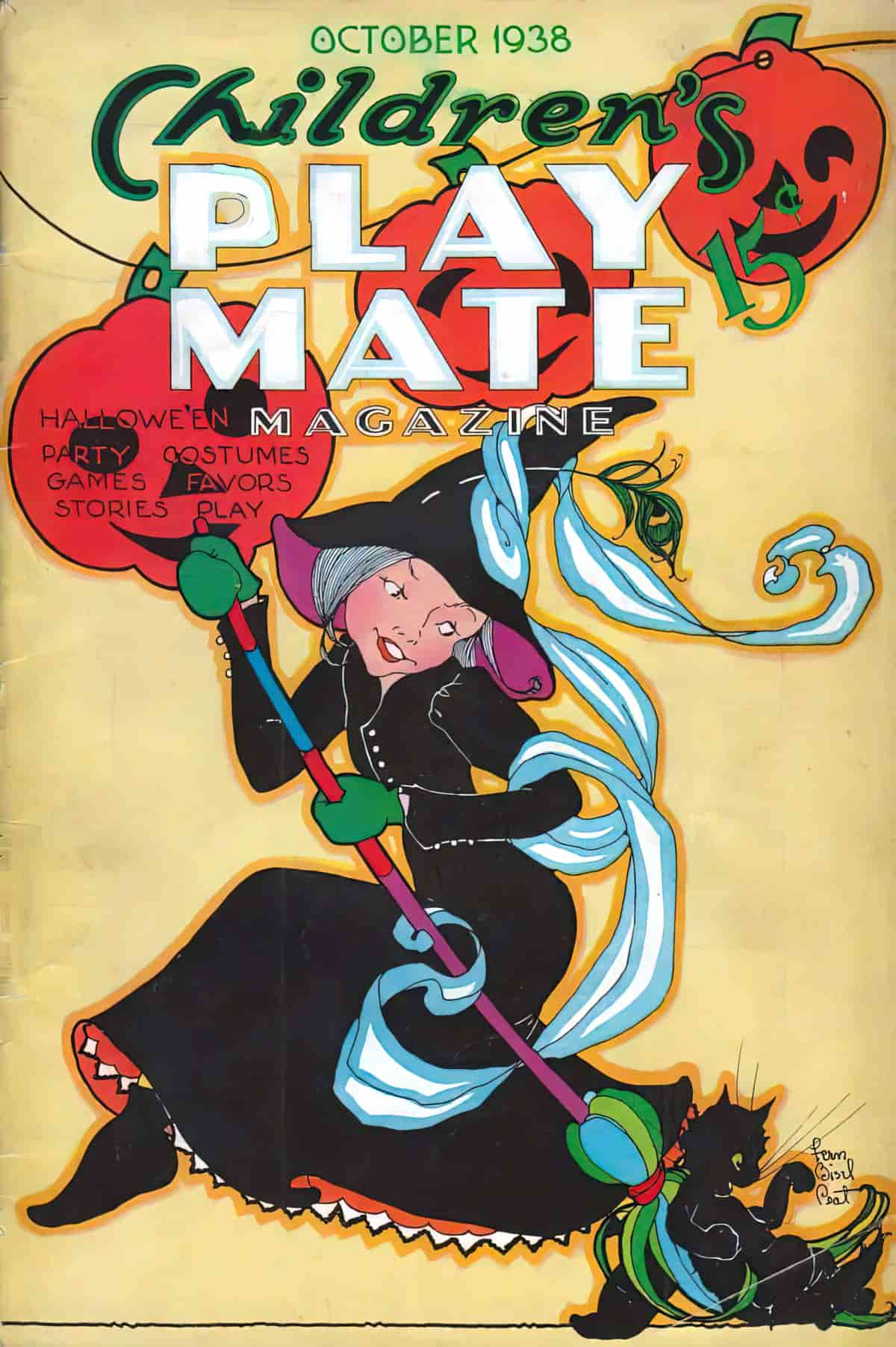
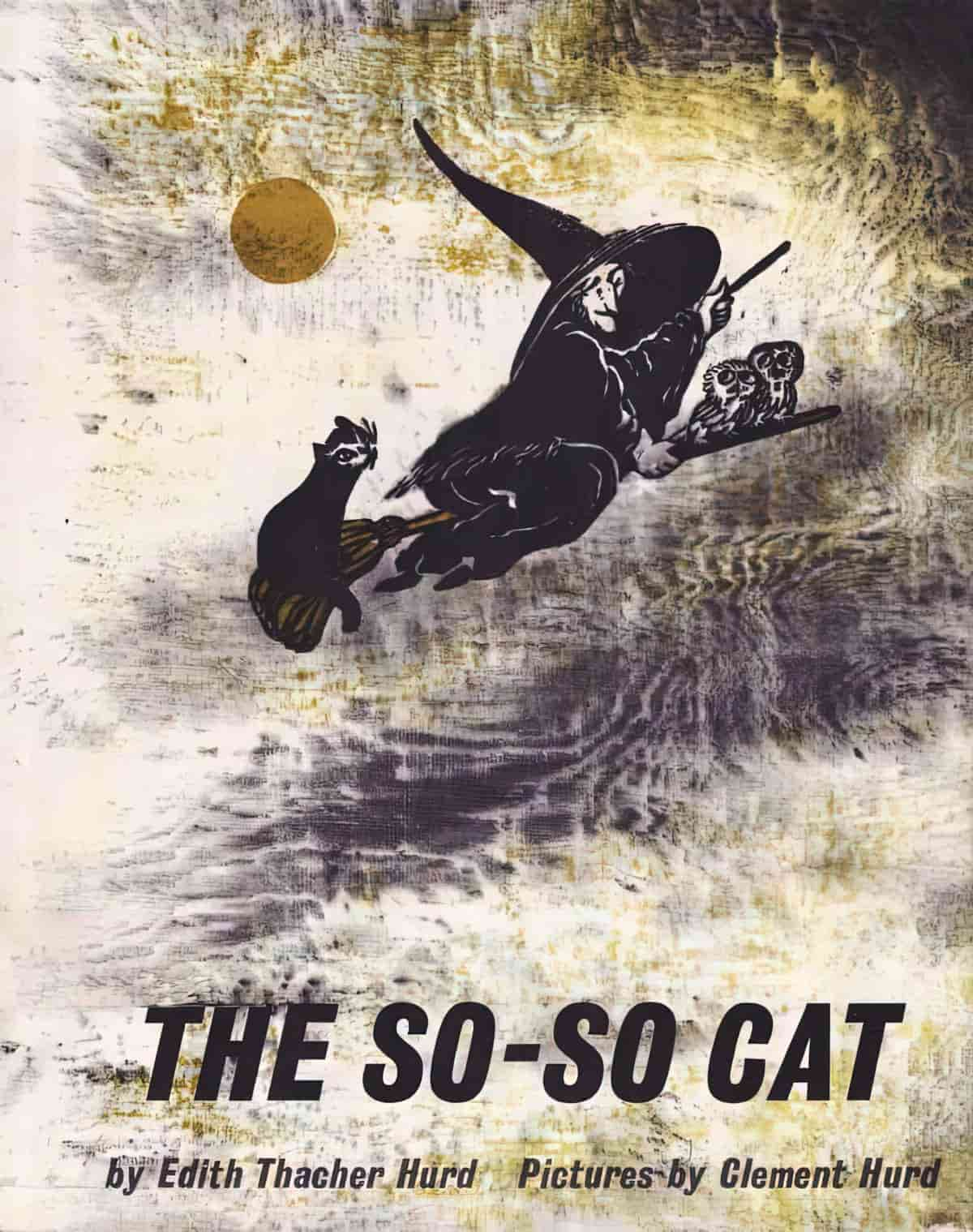
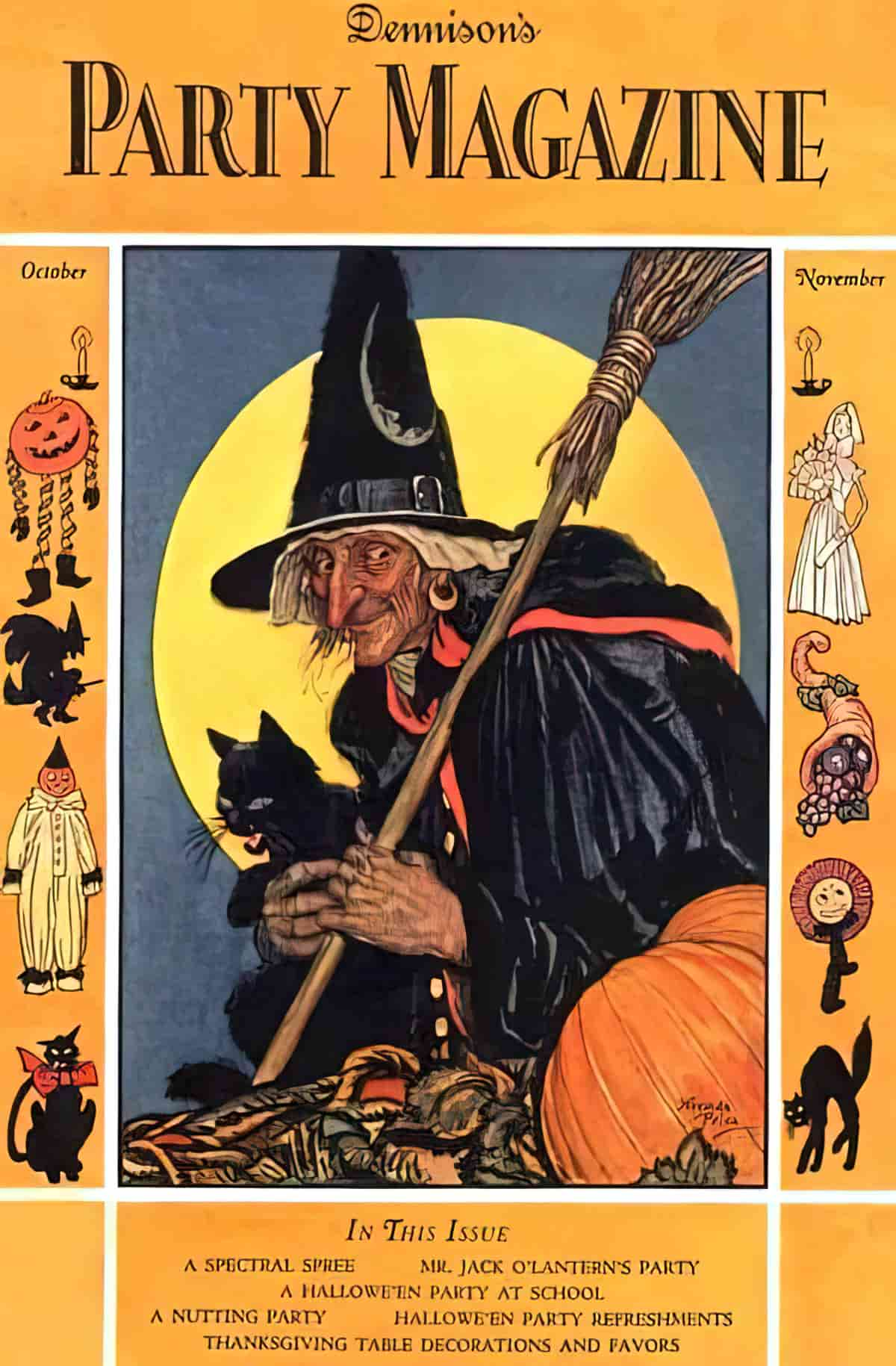
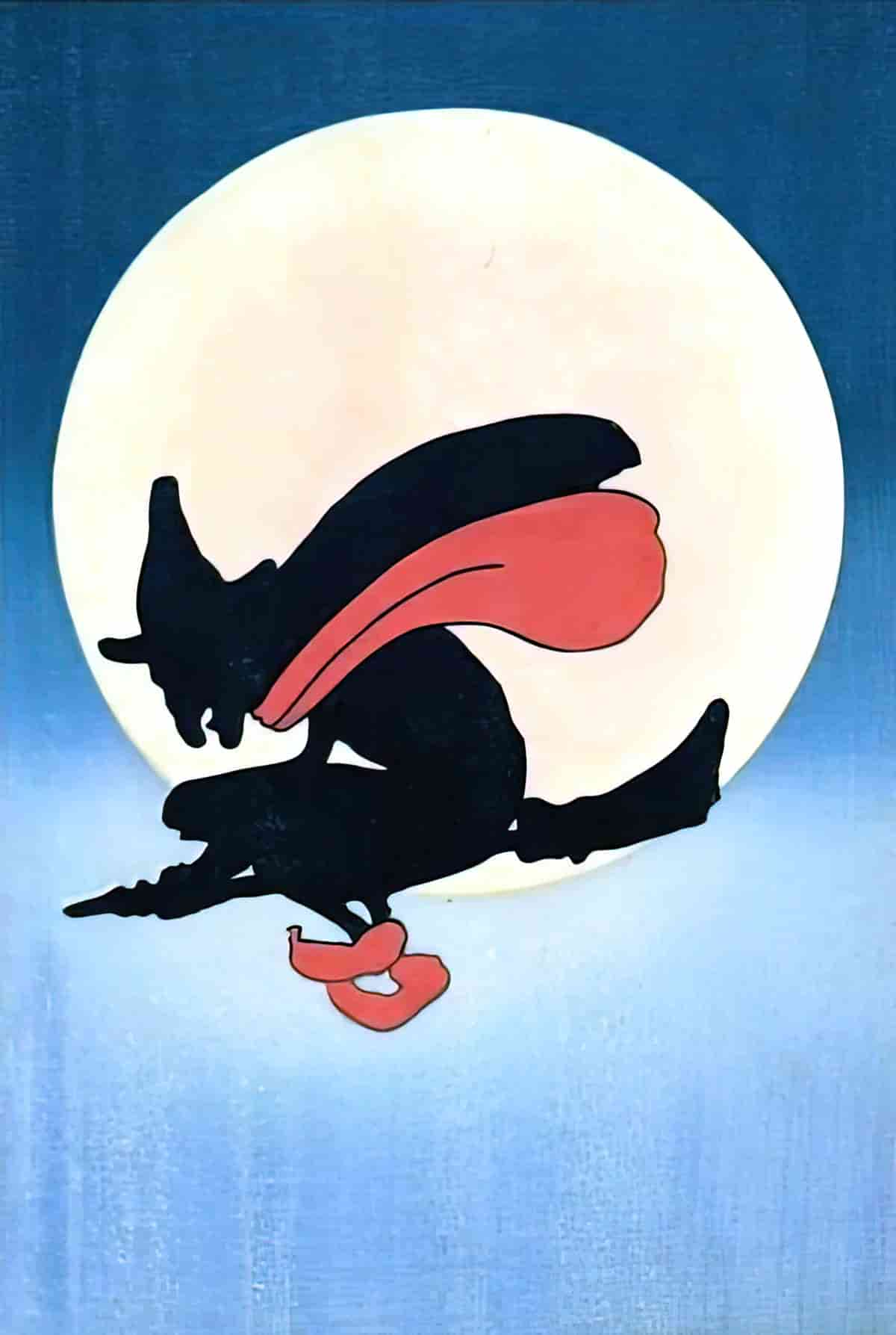
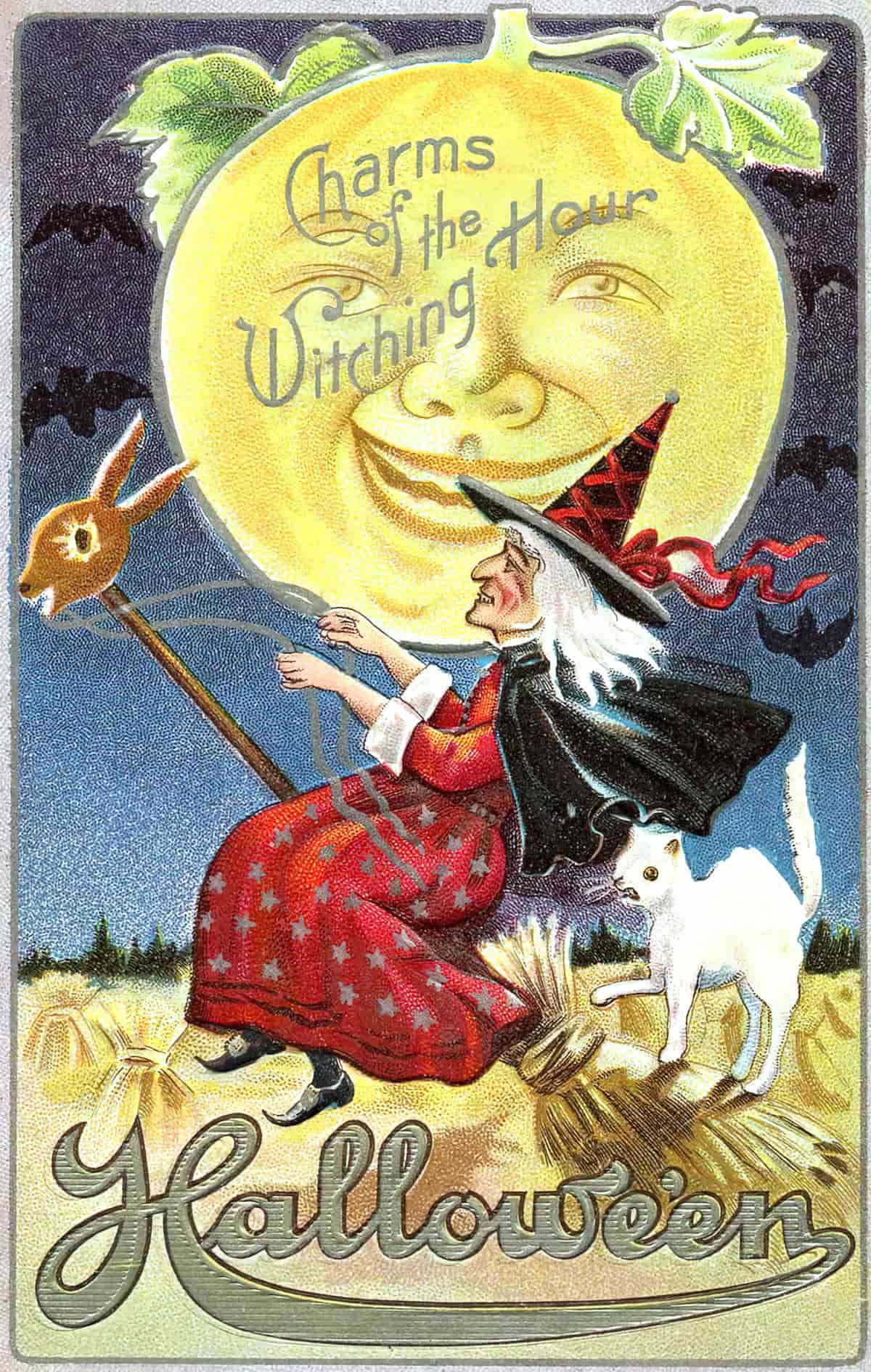
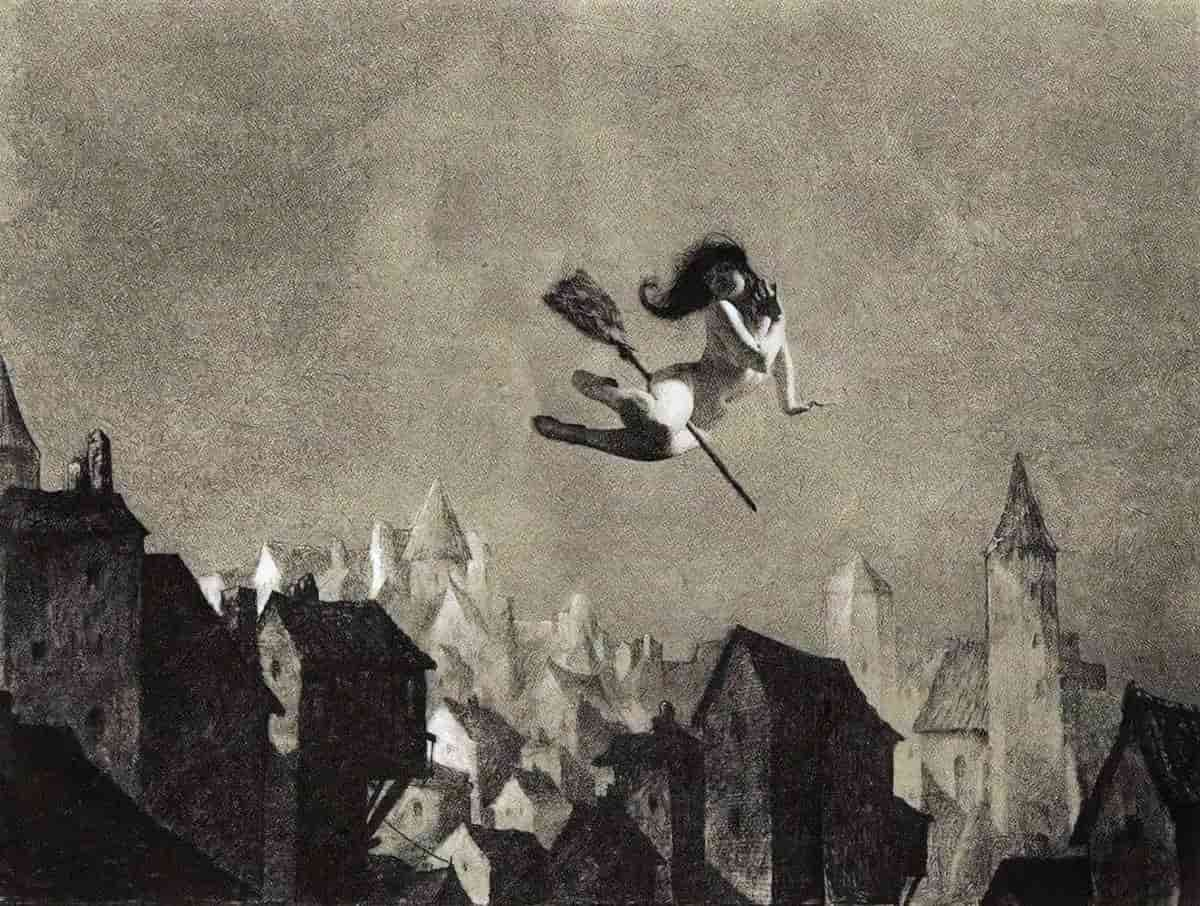
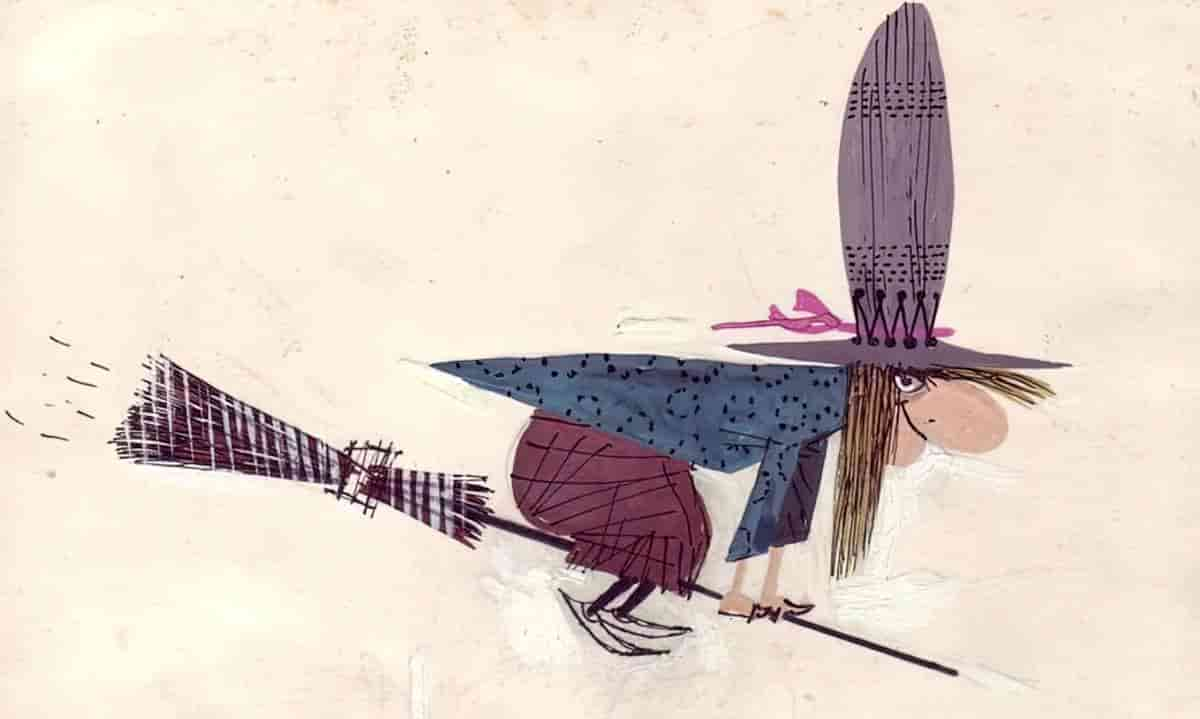
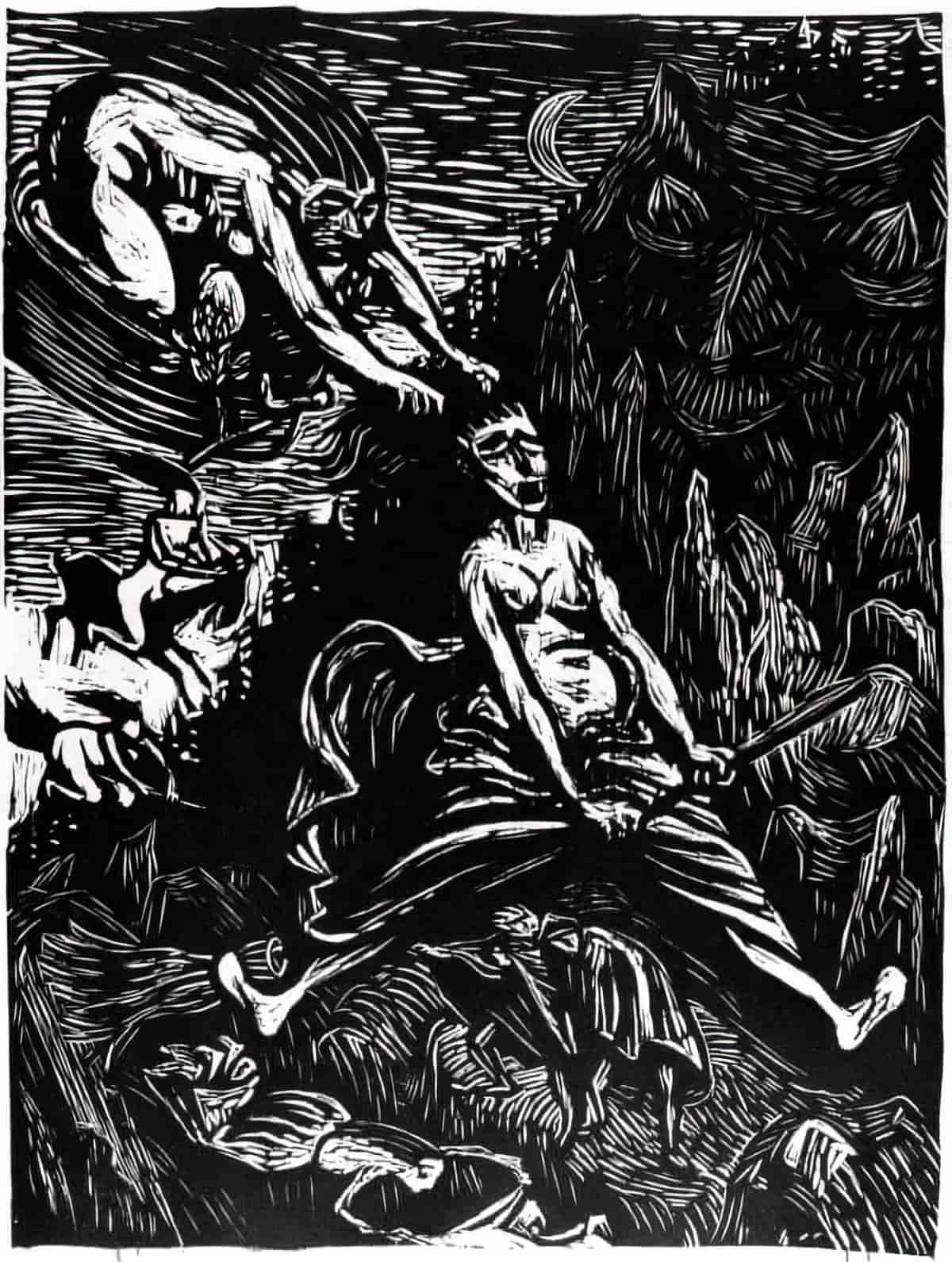
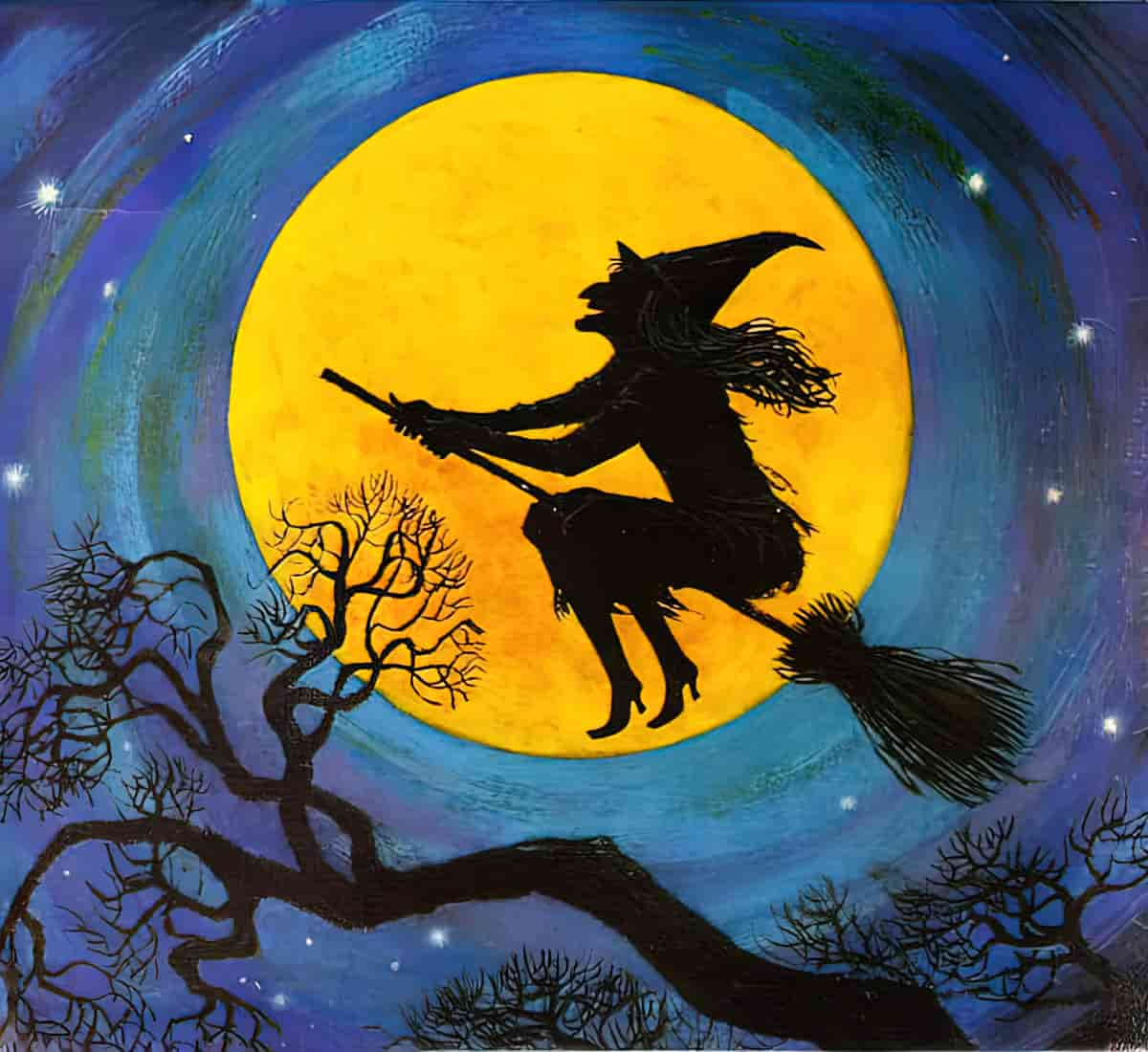
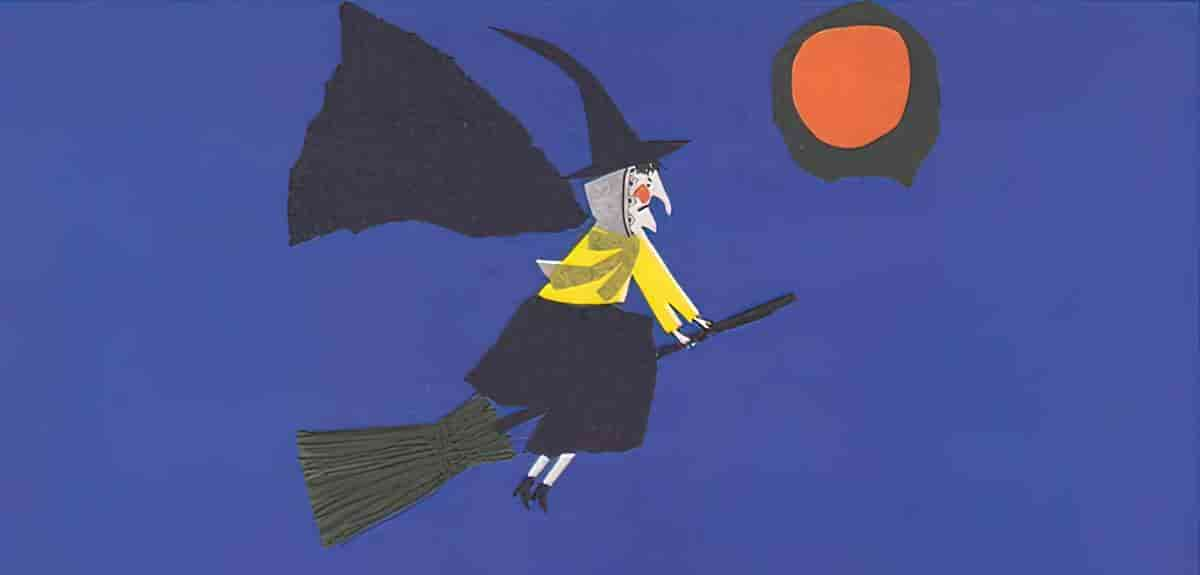
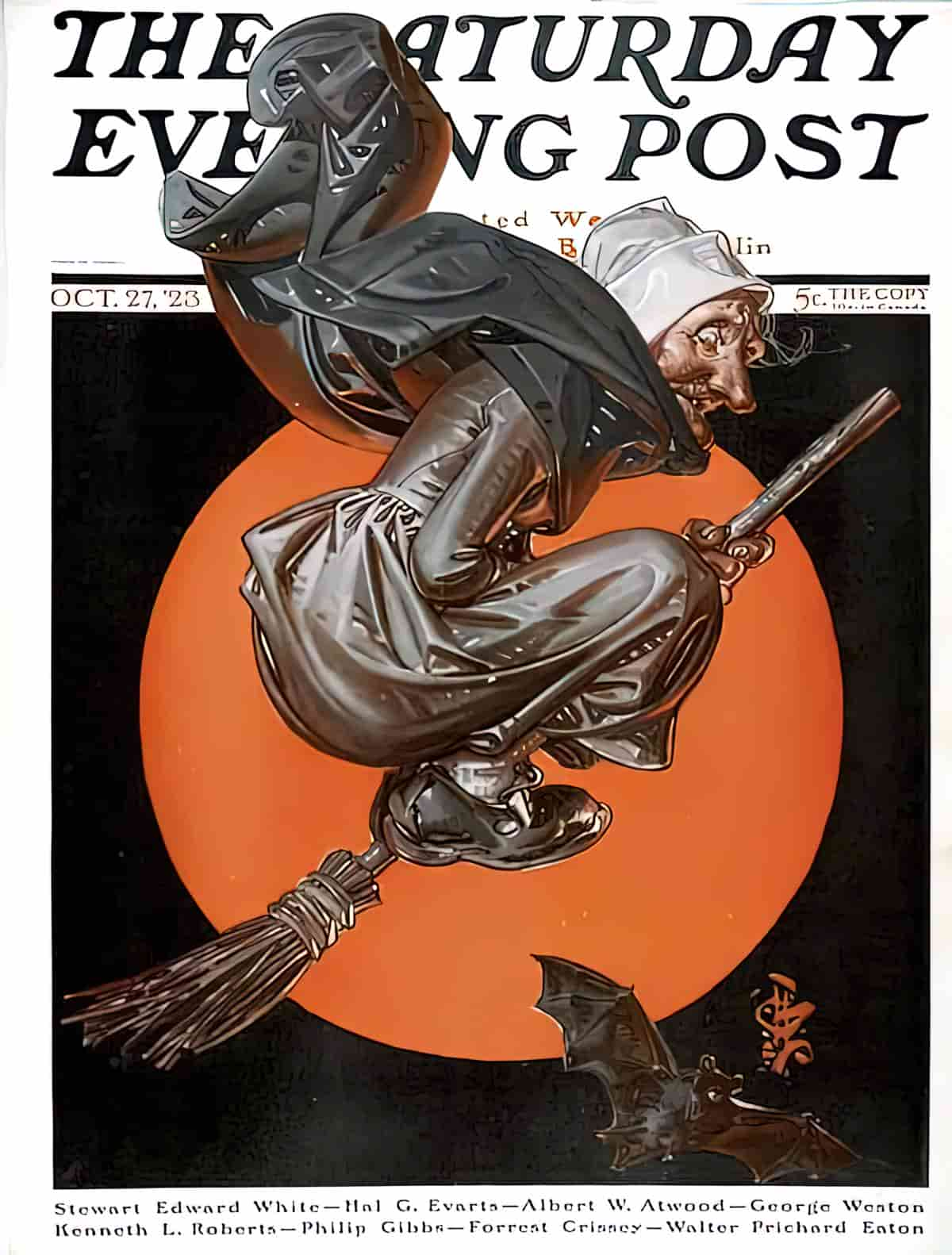
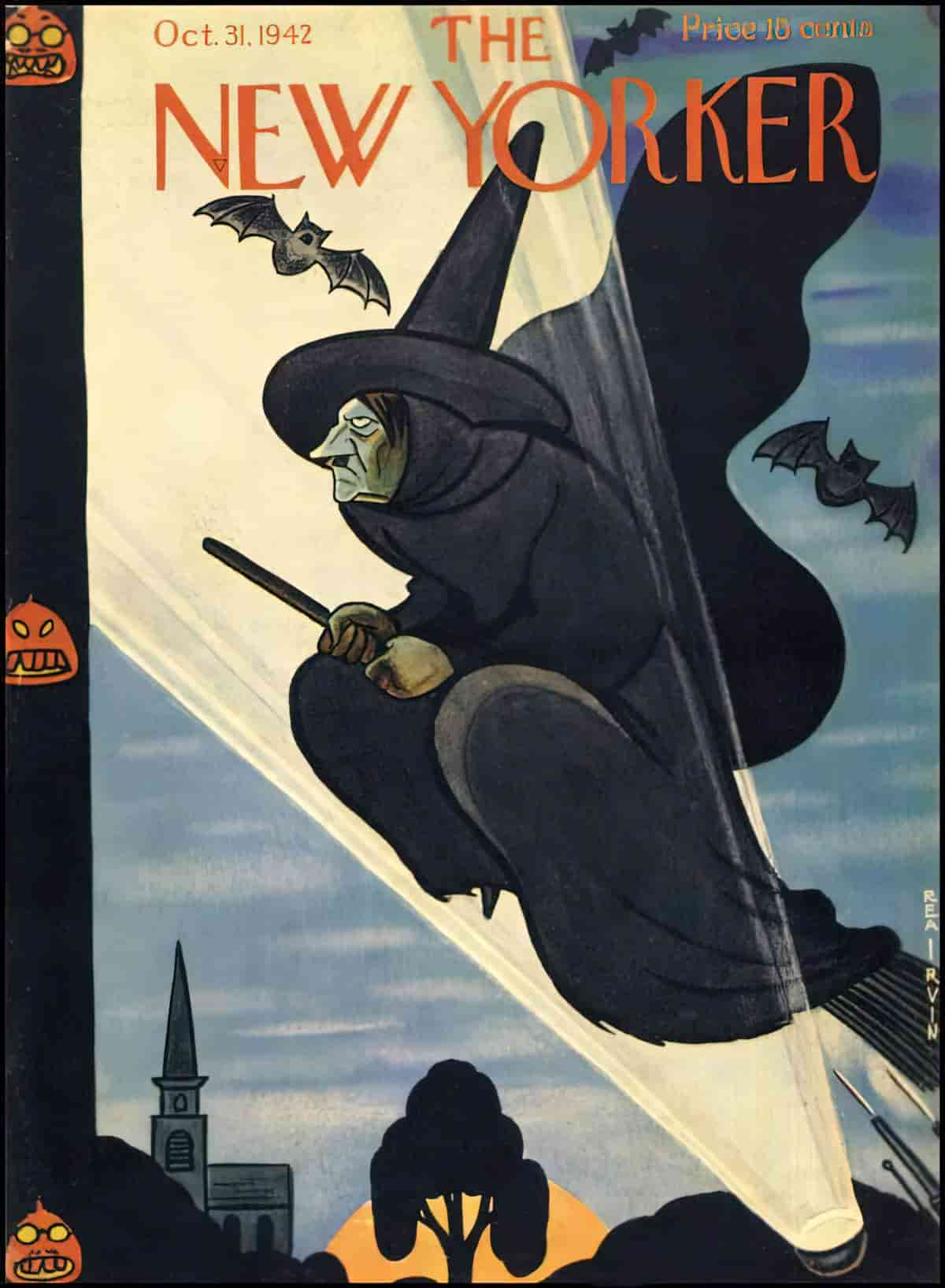
Now take a look at this witch from about the middle of the 15th century, who sits on her broomstick with the broom part in front:
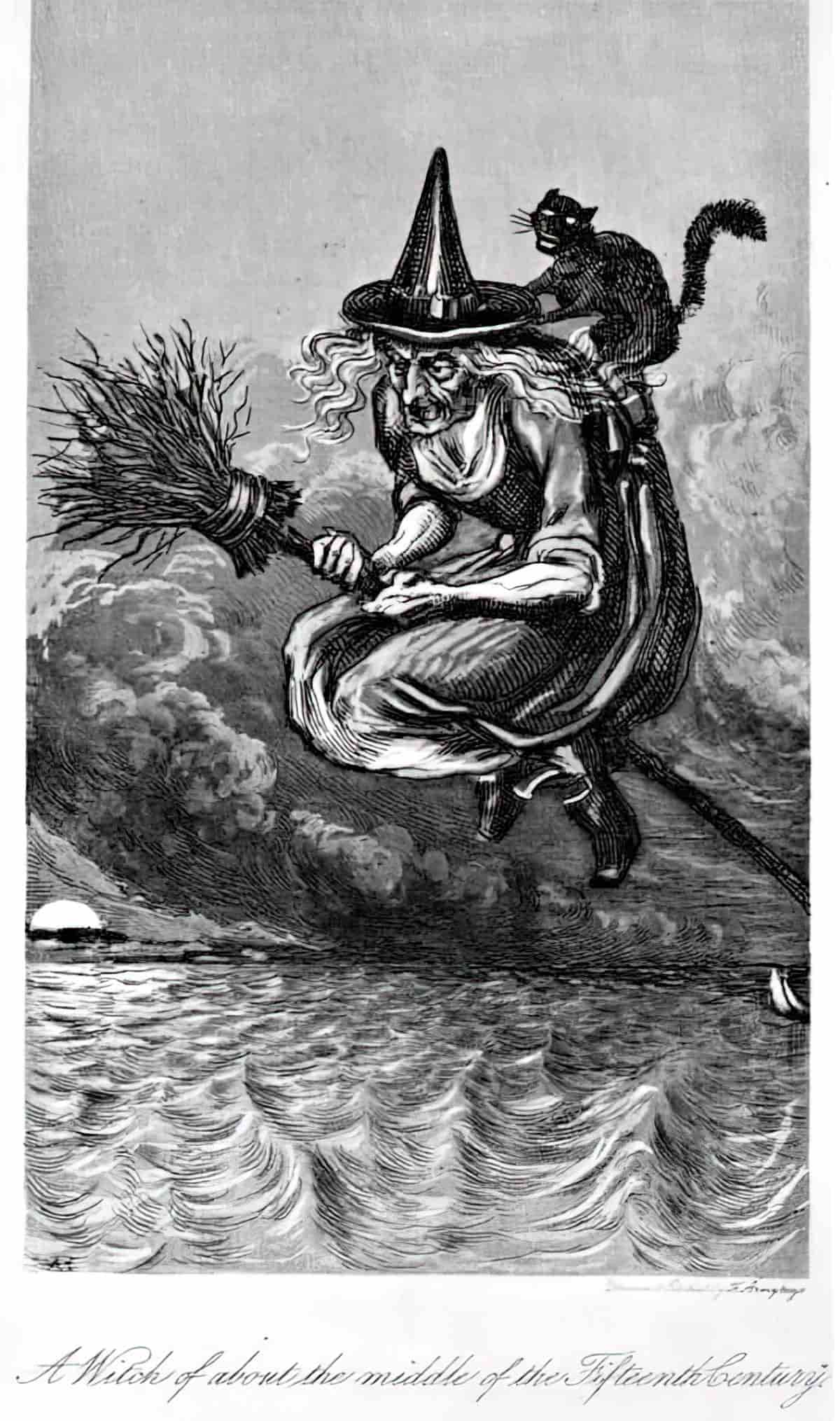
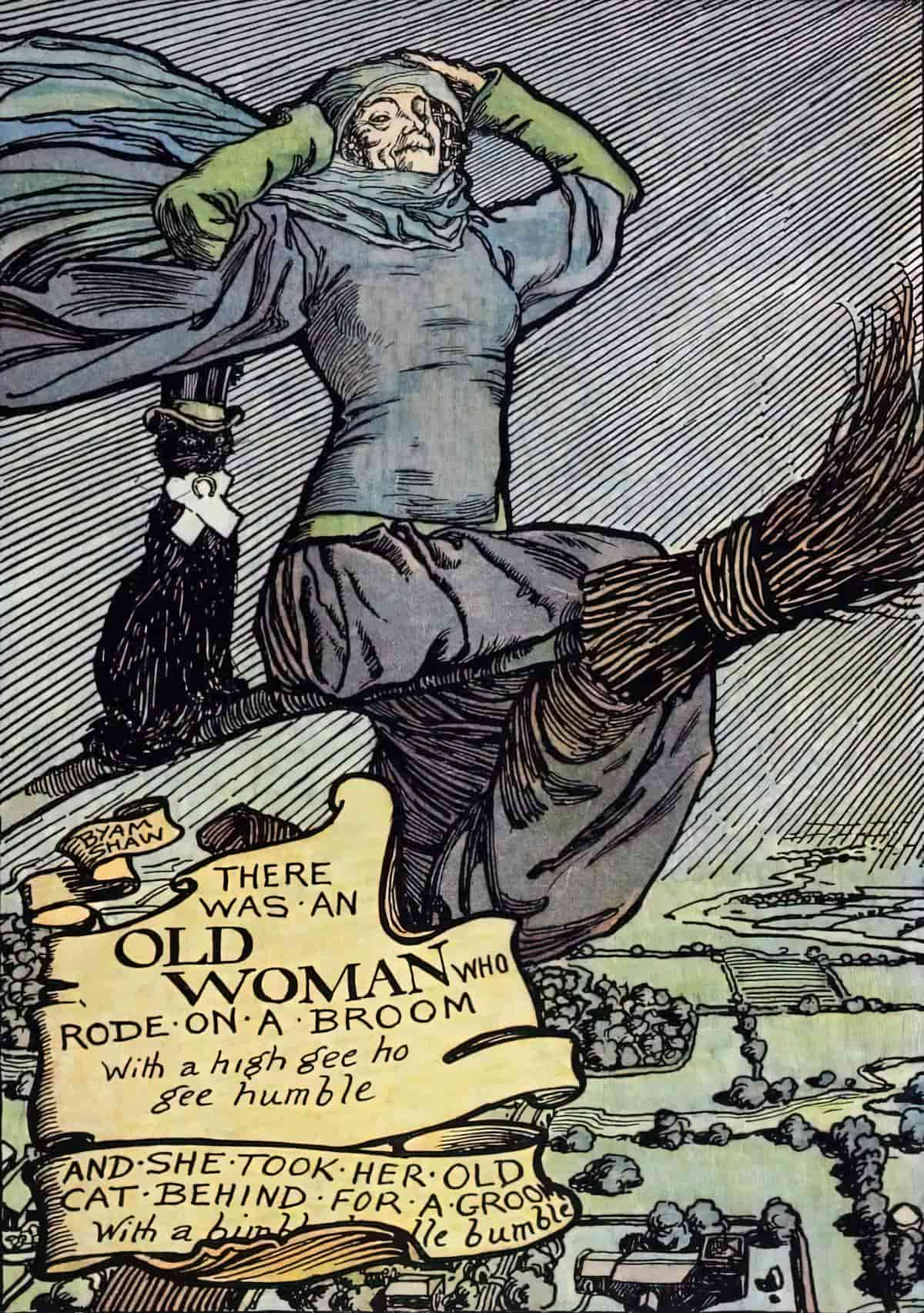
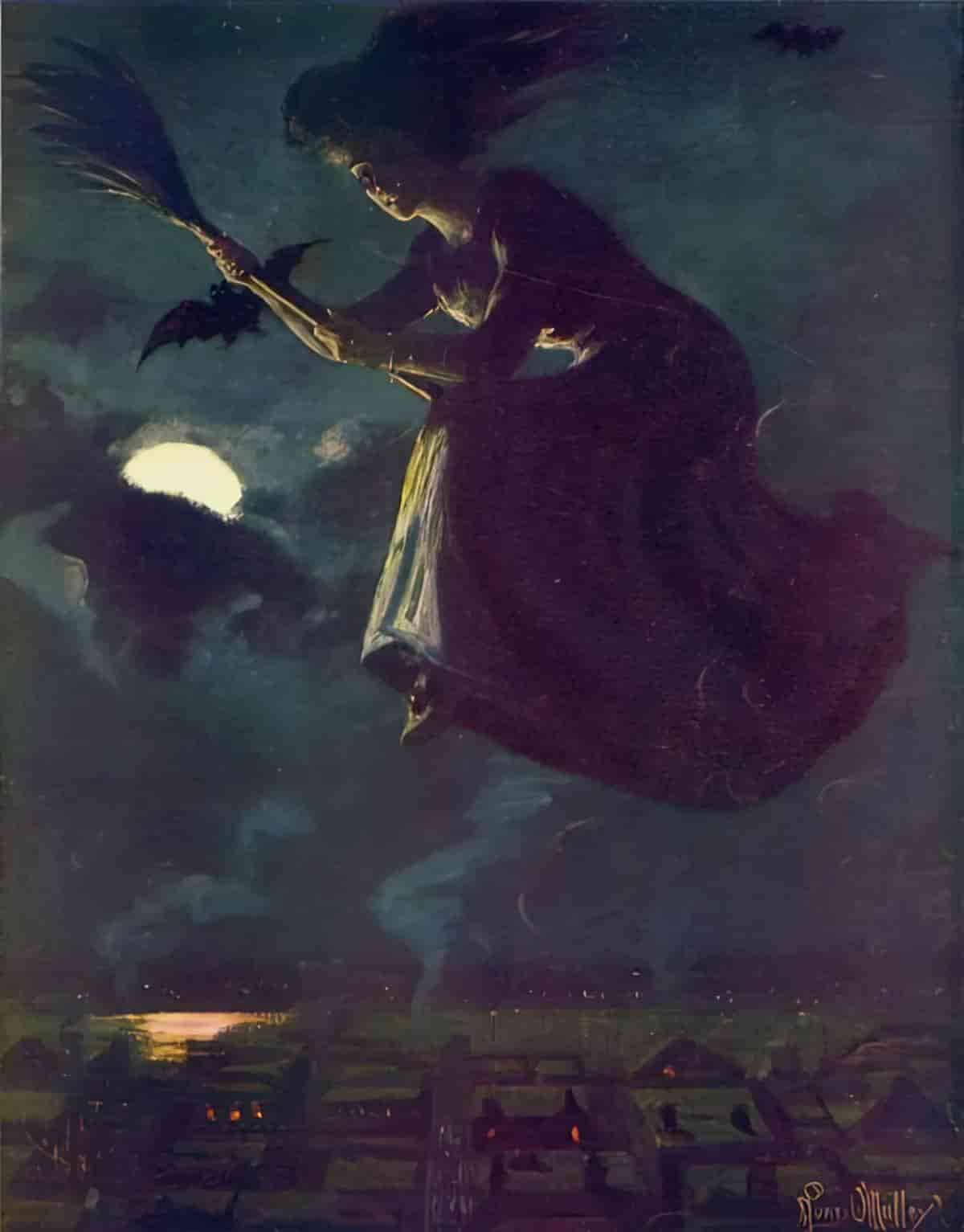
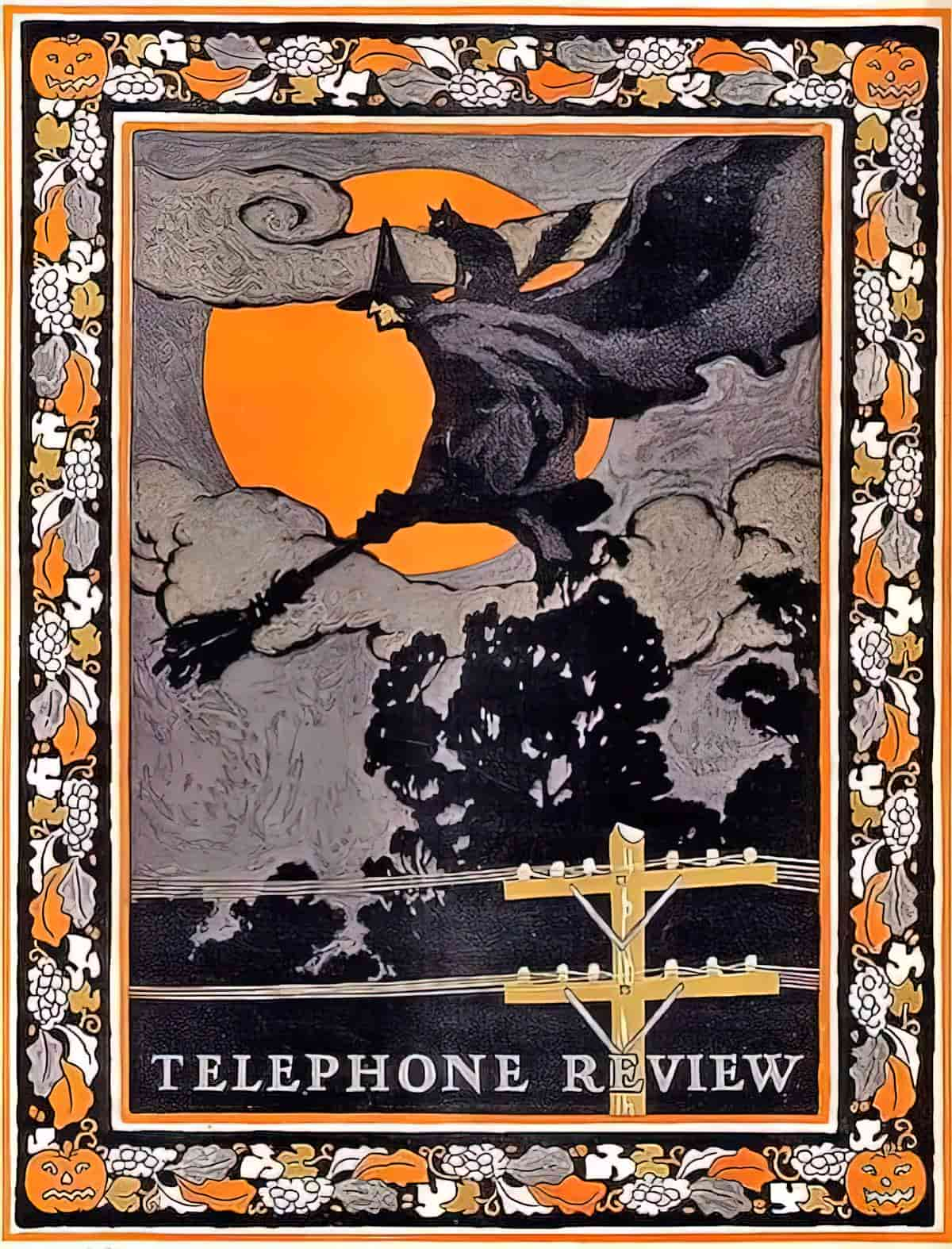
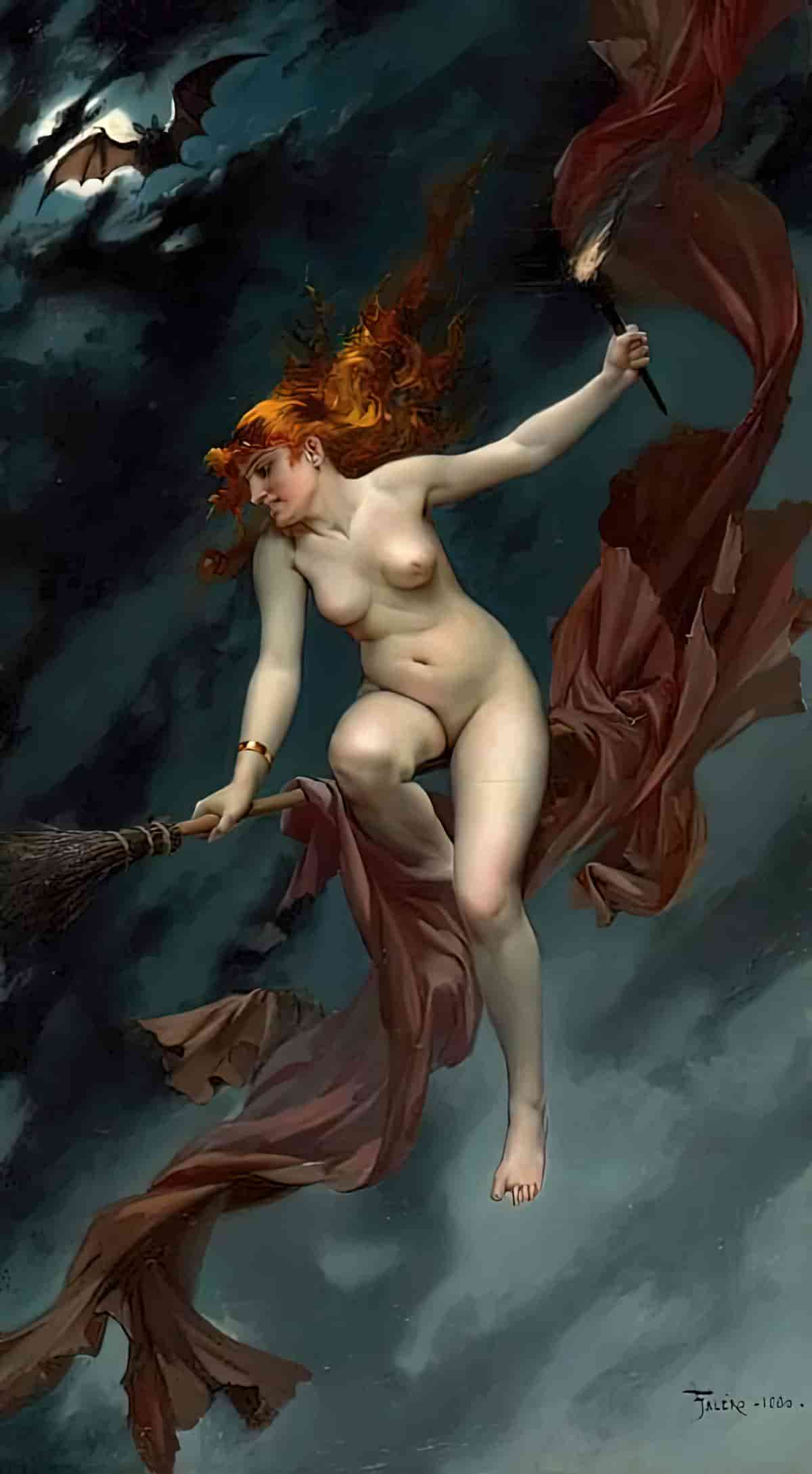
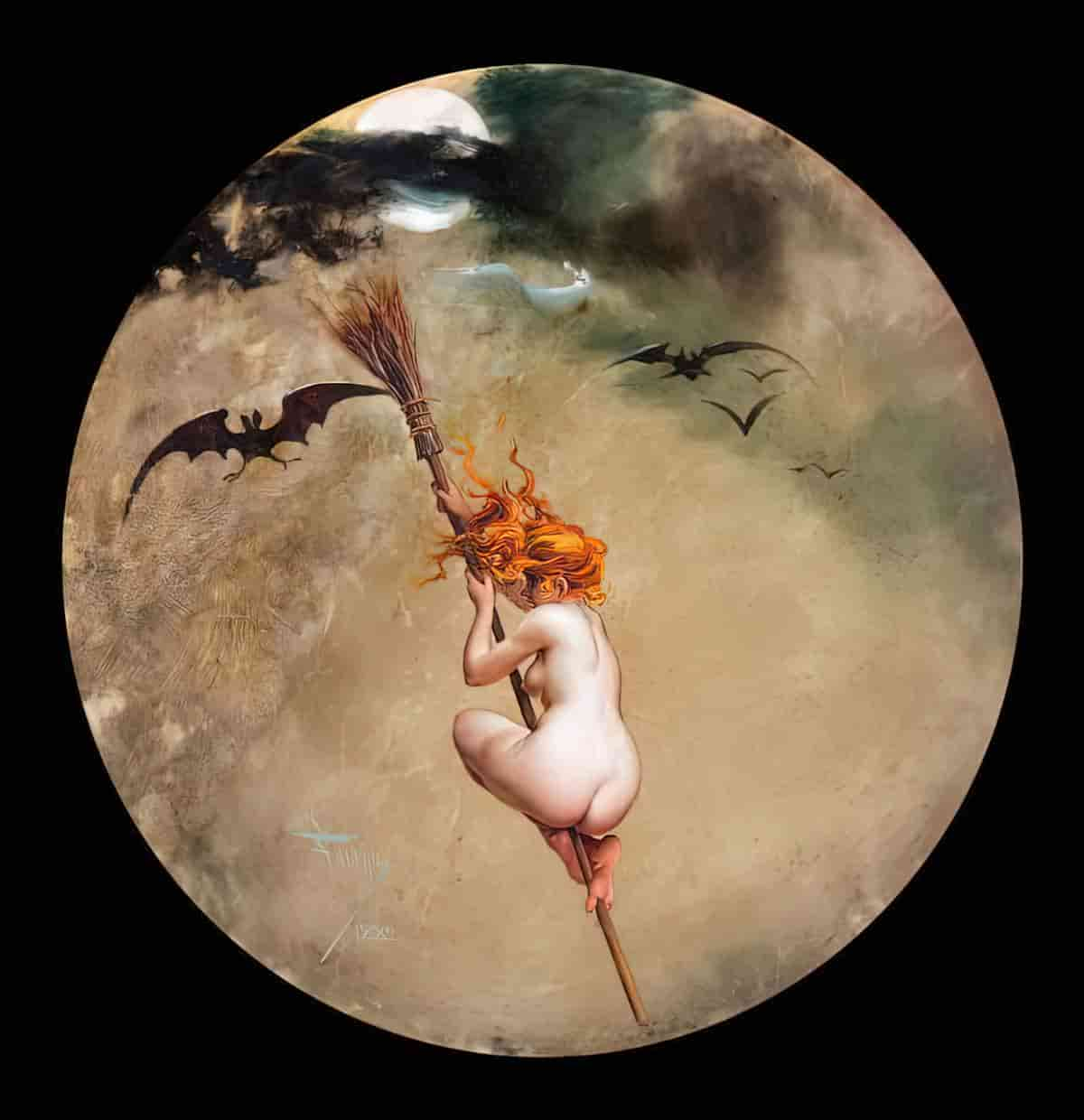
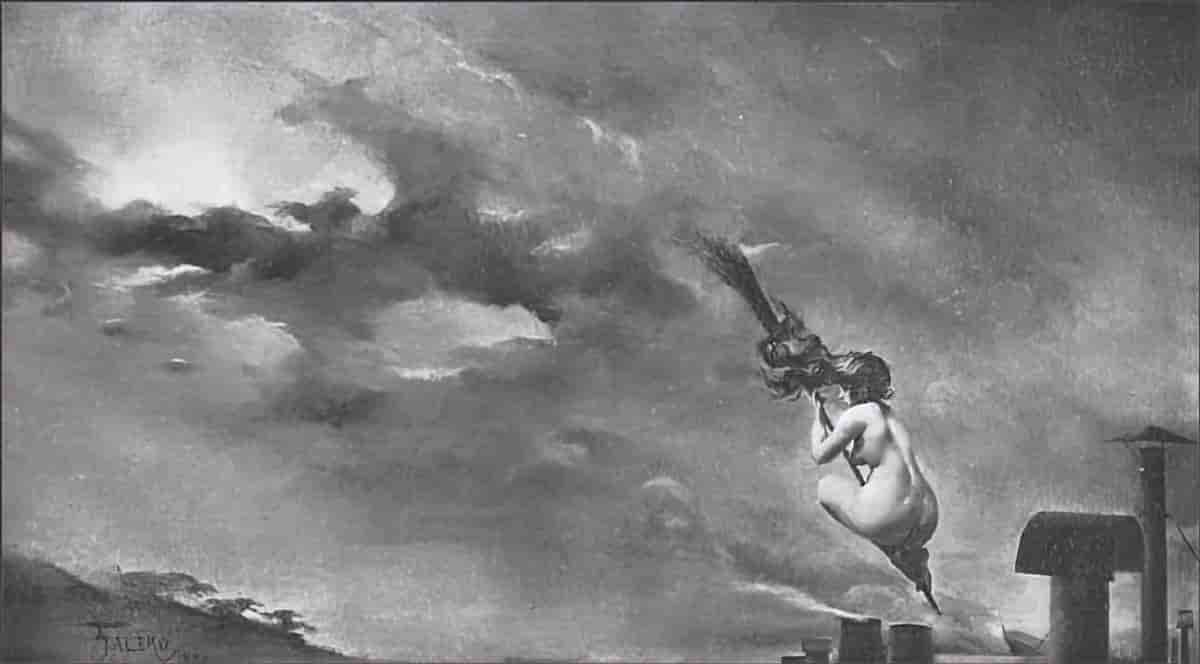
Honestly, this is how I’d be clinging onto a broom:
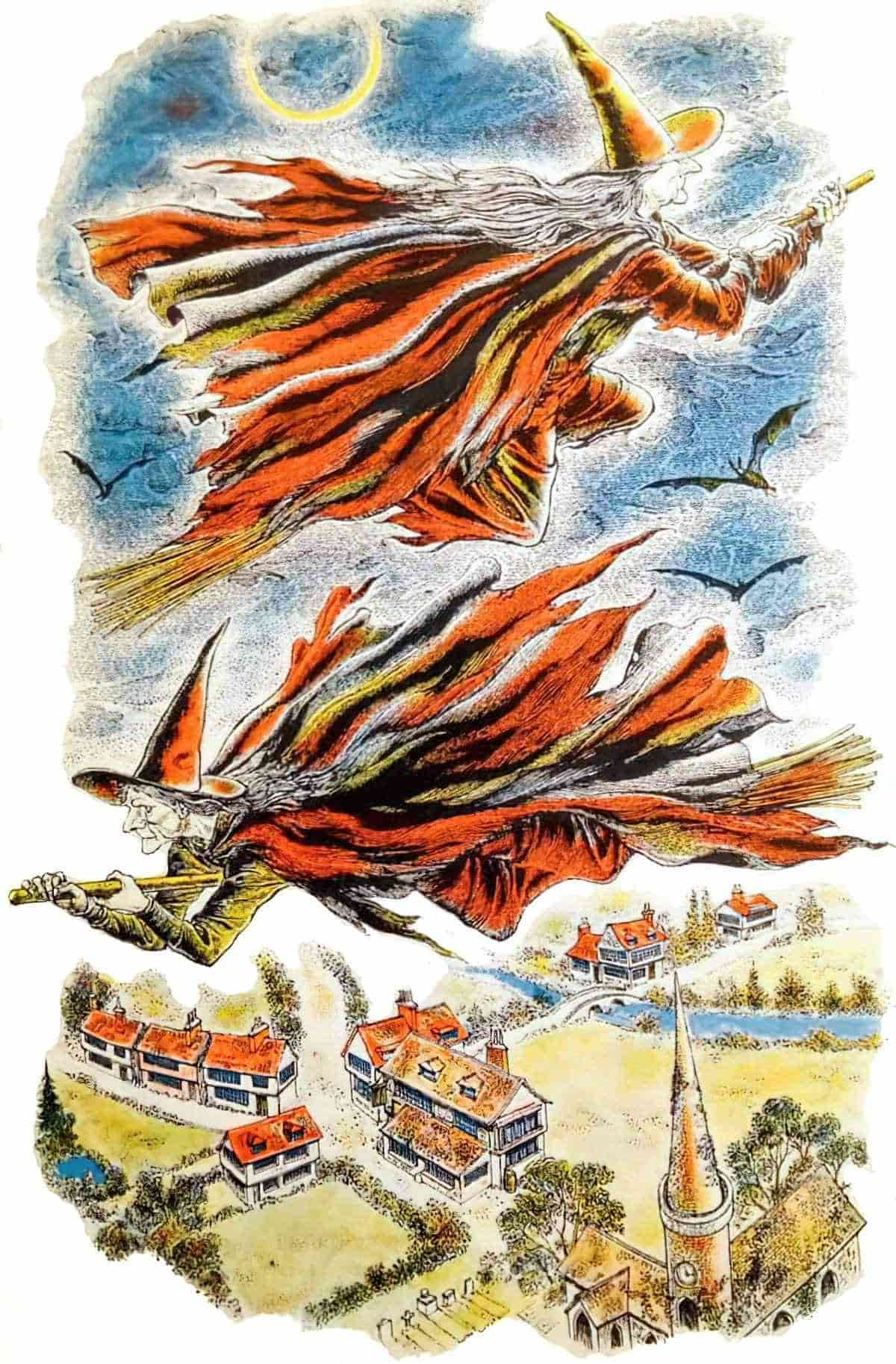
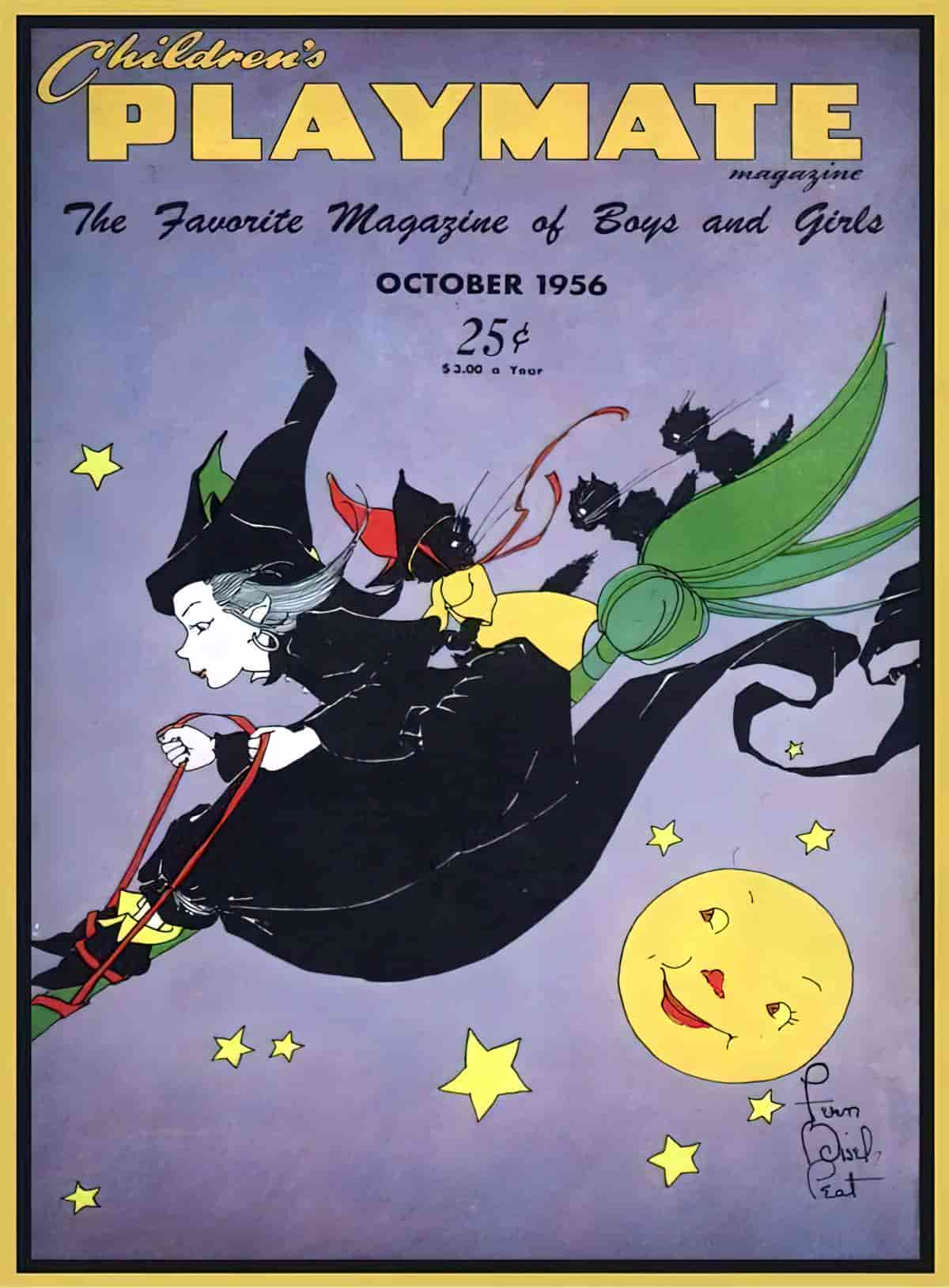
Not all women in the sky with broomsticks are riding said broomsticks.
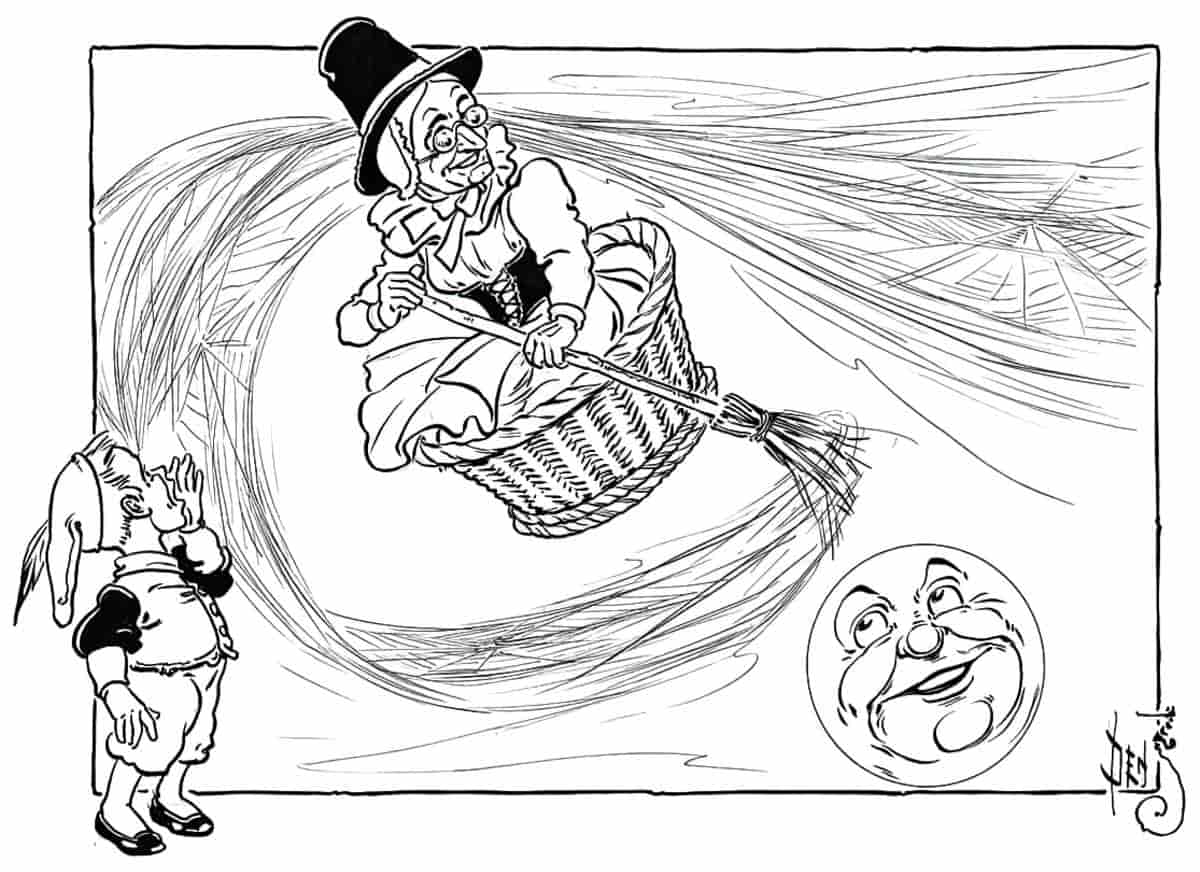
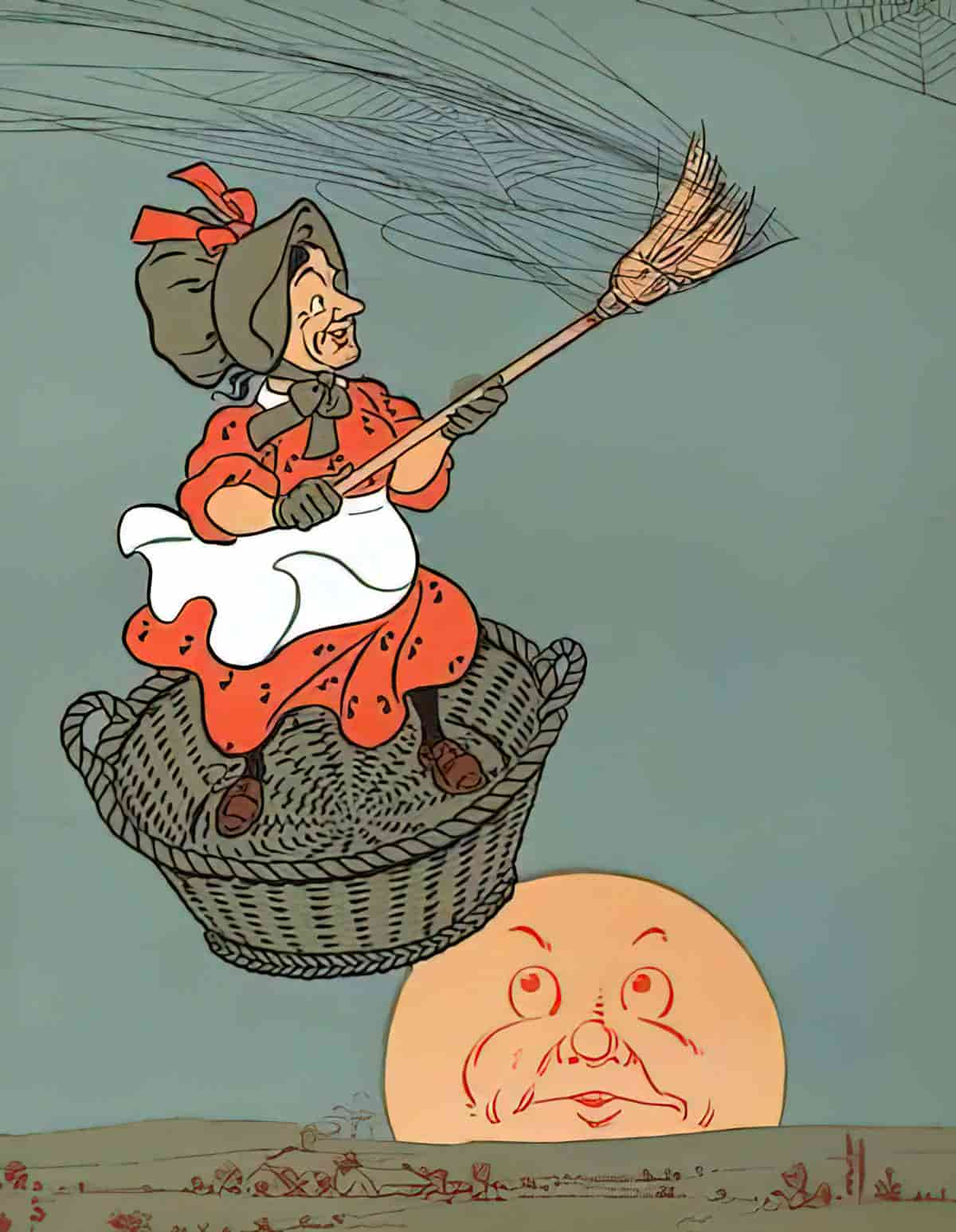
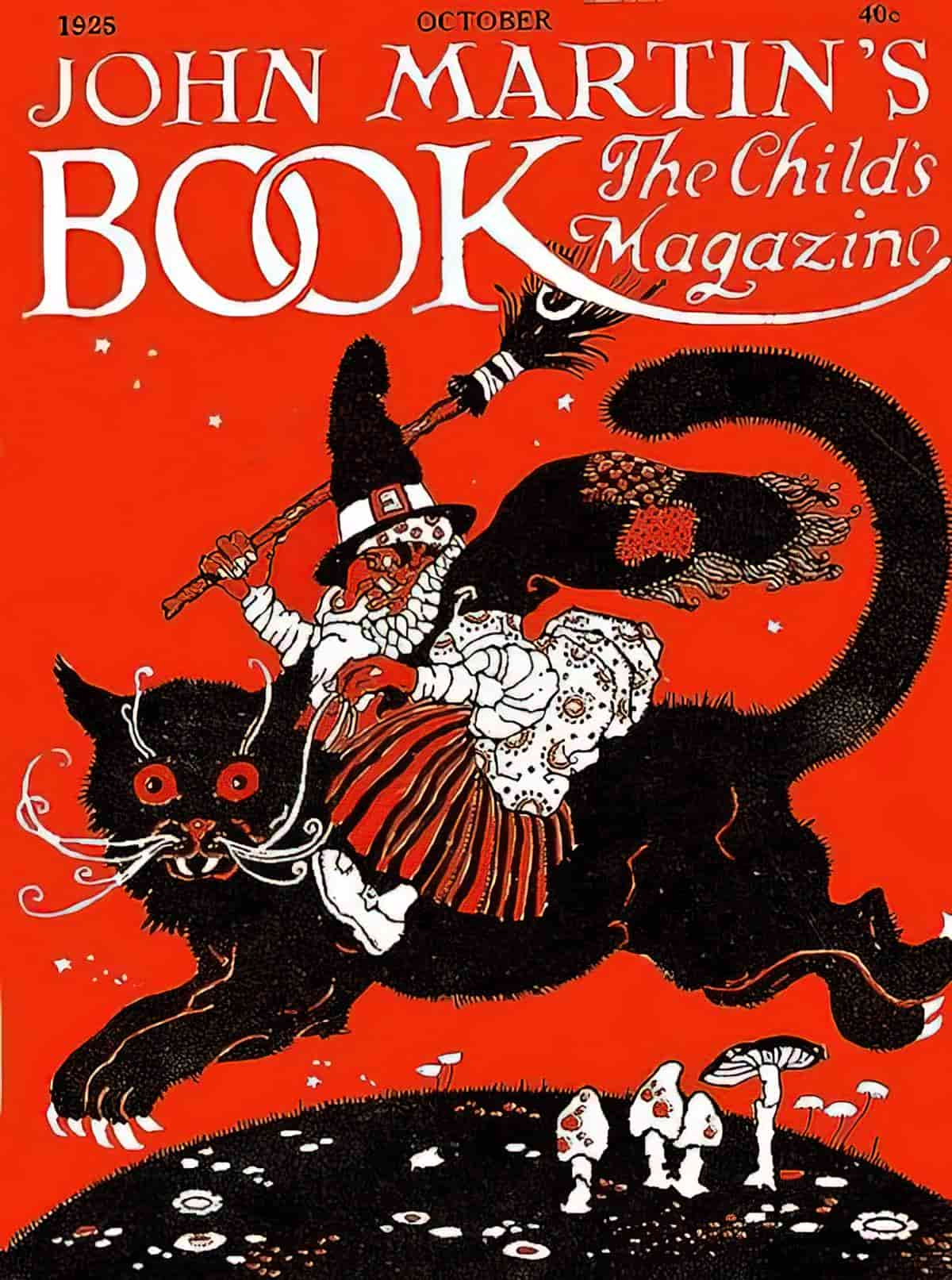
This is how broomsticks became associated with witches. There is another theory about why broomsticks became connected to witchcraft. (It’s not safe for work, possible paywall.) Witches broomsticks were meant to have been made out of hard and polished elm wood (to make it more aerodynamic).
See also the two part series on broomsticks possibly being about ergotism at the Ridiculous History podcast. The witch riding a broom may be a drug reference. This sounds like a post hoc explanation to me, but the hallucinogenic component of the bread mould is much less upsetting when absorbed by the skin rather than taken orally. It is speculated that ergot was historically taken via the anal membrane, and speculated further that this was applied using broomsticks. (I can’t understand why broomsticks would be needed.)
Brooms and Witchcraft, Part 1: A Killer in the Rye?
Most people are familiar with the stereotypical image of a witch: a haggard, often older individual with a peaked hat, black robes, a demonic familiar and, oddly enough, a penchant for cruising around on broomsticks. But where did that last, weirdly specific, trope of flying on a broomstick actually come from?
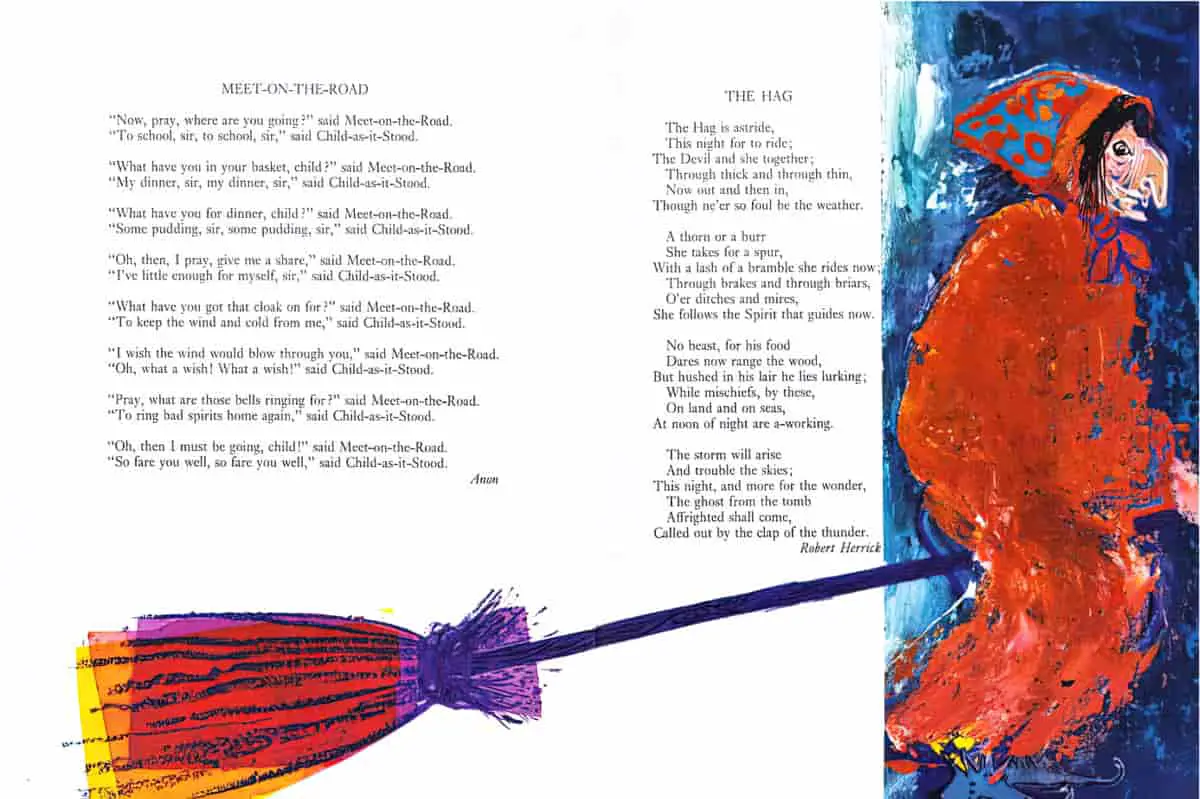
Brooms and Witchcraft, Part 2: Inquisitions and Iniquity
Could the stereotype of witches on broomsticks actually be a drug reference? Join Ben, Noel and Casey as they continue digging through the history and folklore of witchcraft — and how it affected pop culture in the modern day.
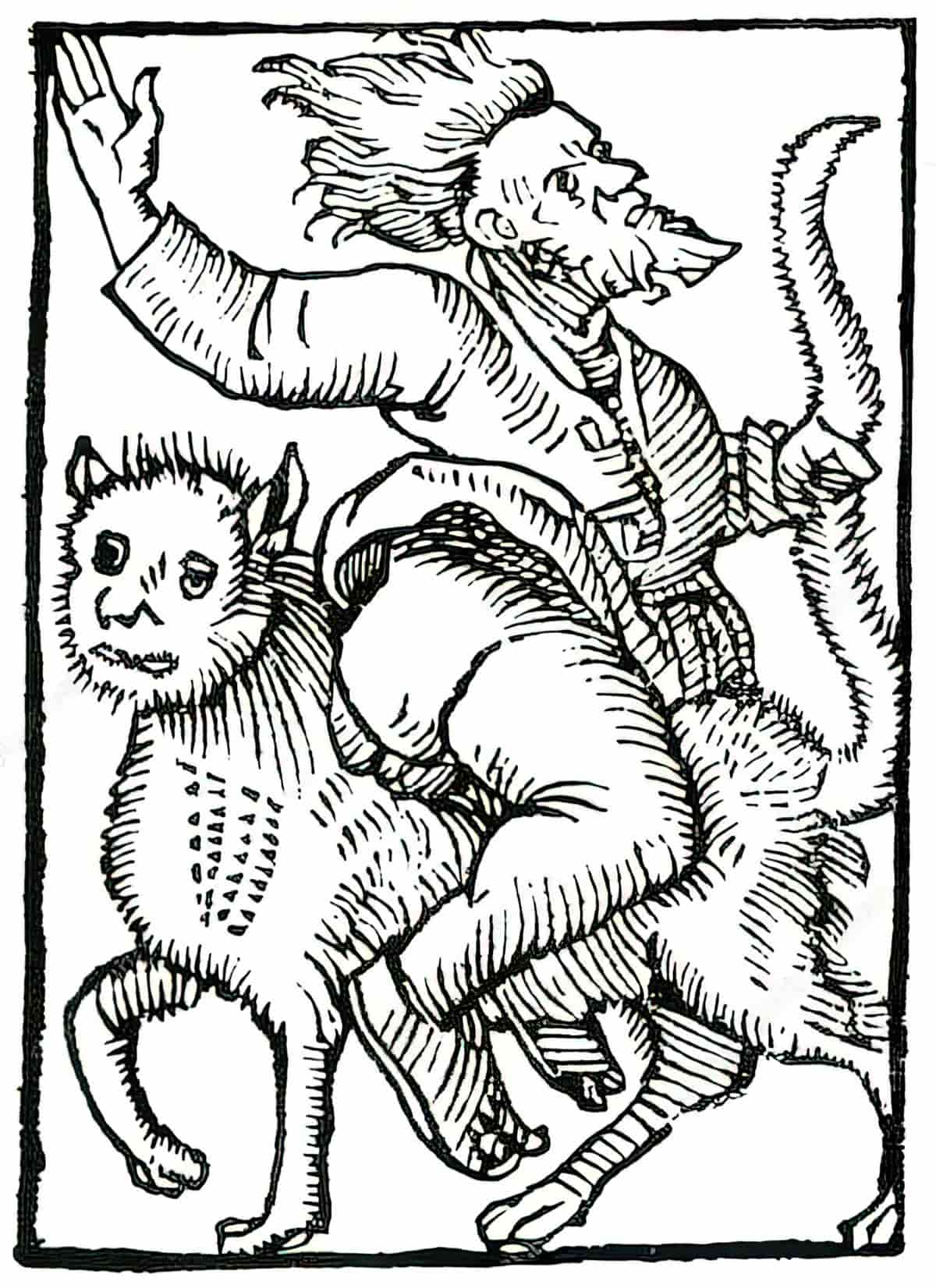
The cartoon below, by Norman Bridwell, is funny to those of us who grew up with the idea that Santa and his reindeer drove/pulled a sleigh. In fact, Bridwell is combining a couple of different Christmas-time legends. In Italy, for instance, it is an old woman who delivers gifts down the chimney and she is often thought to ride a broomstick. Her name is Befana.
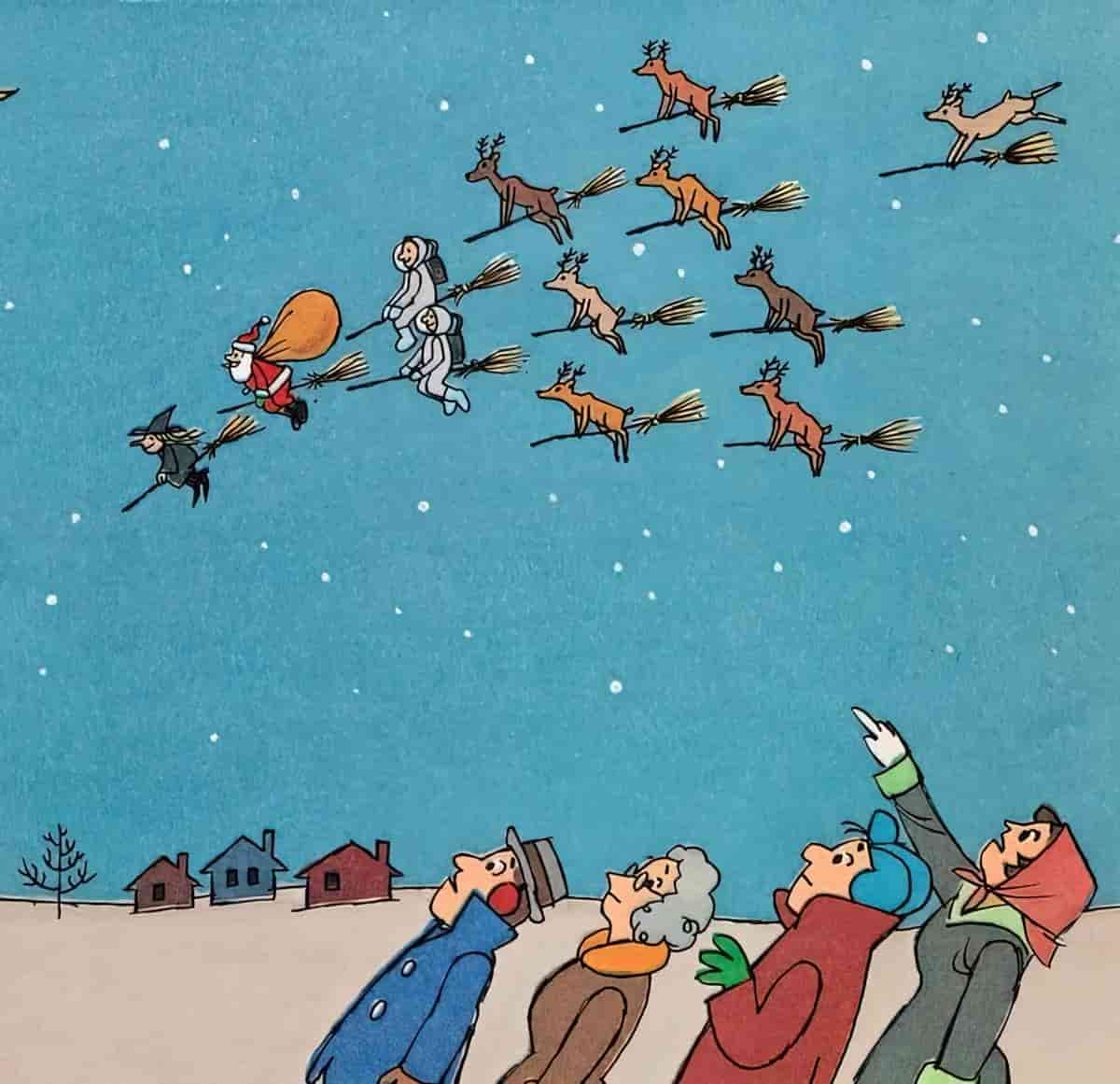
For those of us with vacuum cleaners, it’s hard to imagine the amount of time once tied to brooms, brushes and dustpans. The task of keeping dirt and dust from the home was constant — and necessary — because without constant attention the home would attract rodents. At certain times in history, rodents in the house meant death.
For this reason, in Ancient times brooms in a temple were considered sacred. You had to have clean hands to use one.
There are plenty of superstitions concerning brooms, because the act of sweeping is inherently metaphorical.
One version of ‘correct’ sweeping looked like this: Start by the door and sweep inwards. If you sweep your dust outwards towards the front door you will sweep your luck away. (I’ve been doing it wrong my whole life.)
Brooms have had both indoor and outdoor uses, all resulting in hard work.
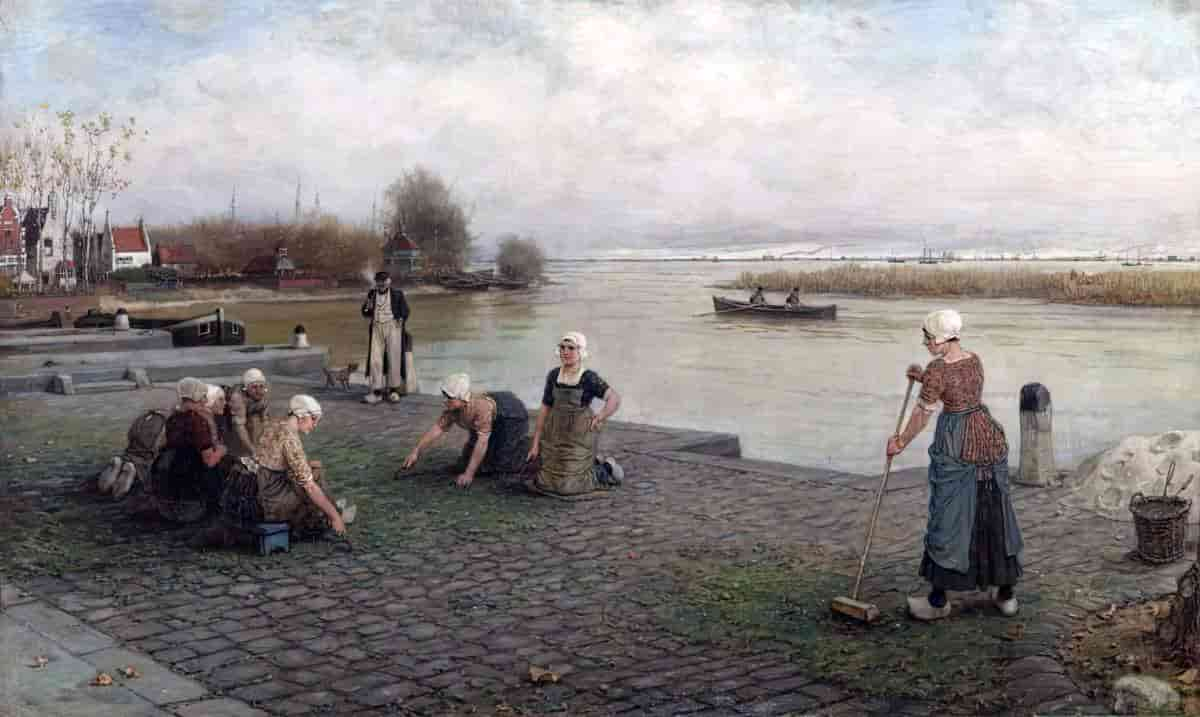
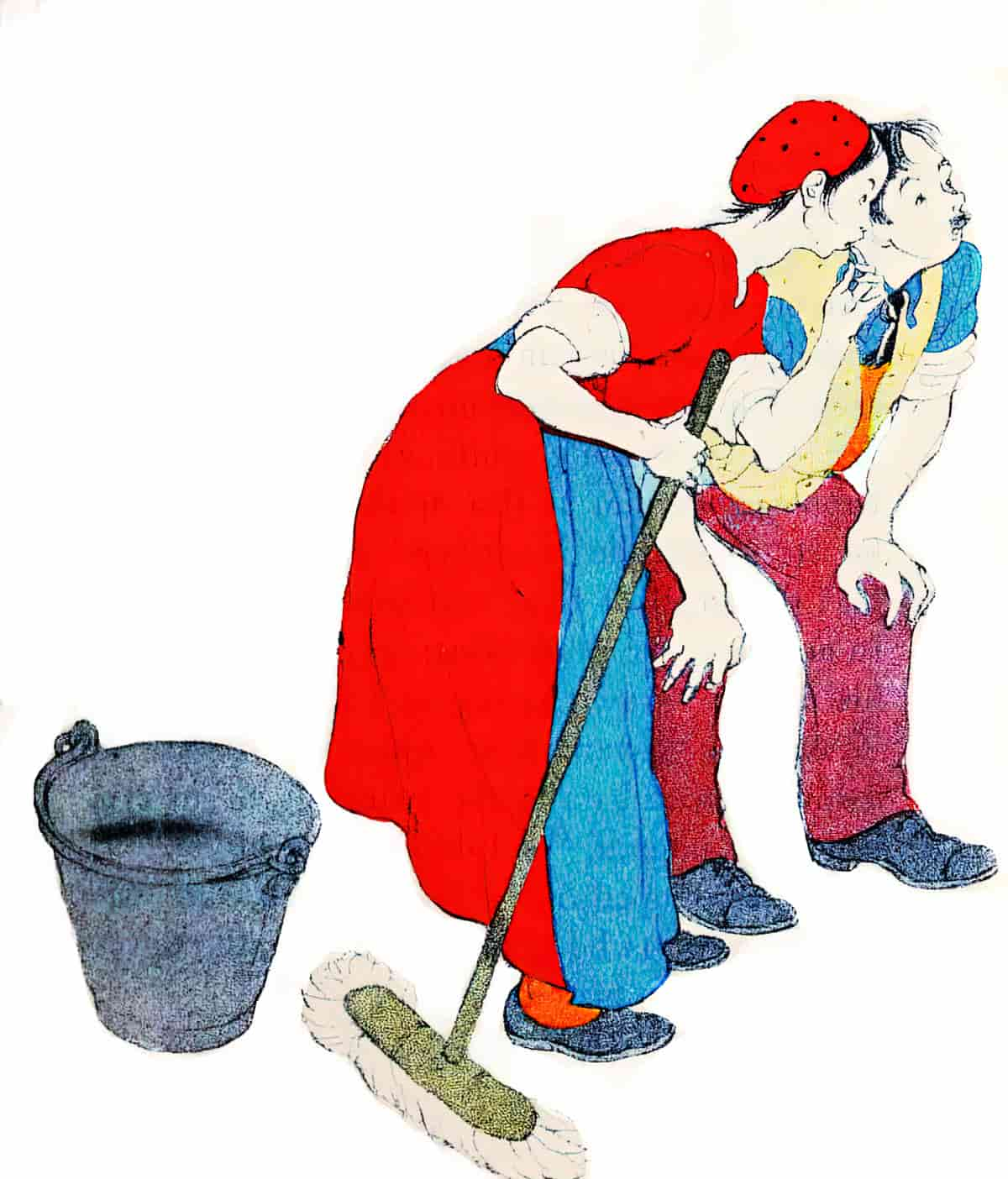
Brooms have phallic associations (and doesn’t everything?). According to one old superstition, if a single woman stepped over a broom lying on the floor, she would become pregnant out of wedlock. The degree to which people imagine stuffing things inside women to control us will forever baffle me.
It wasn’t just women who have been symbolically tied to brooms. Victorian era British art often depicts boys alongside brooms, as a shorthand symbol of poverty. These are working class boys, some are perhaps chimney sweeps.
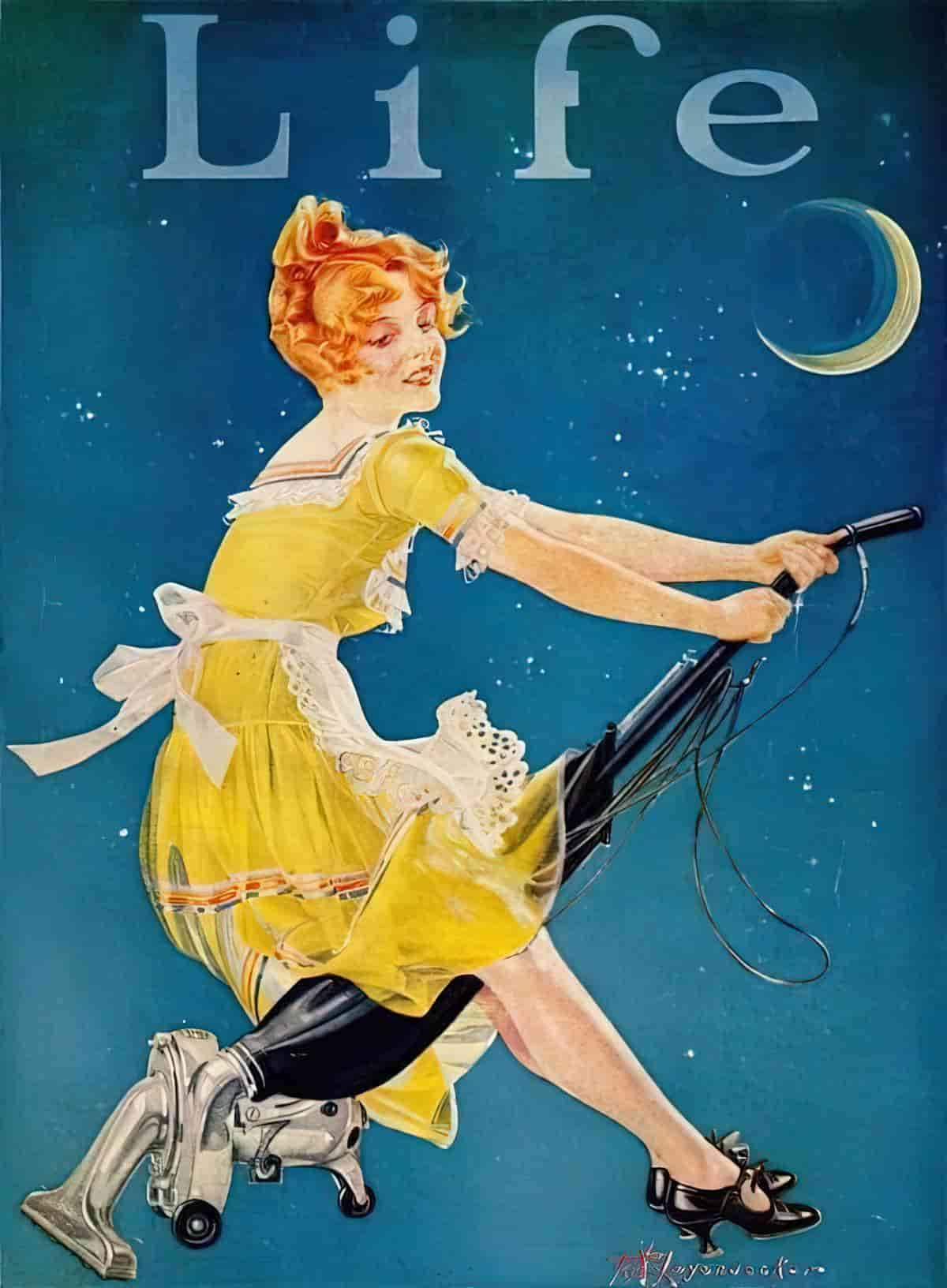
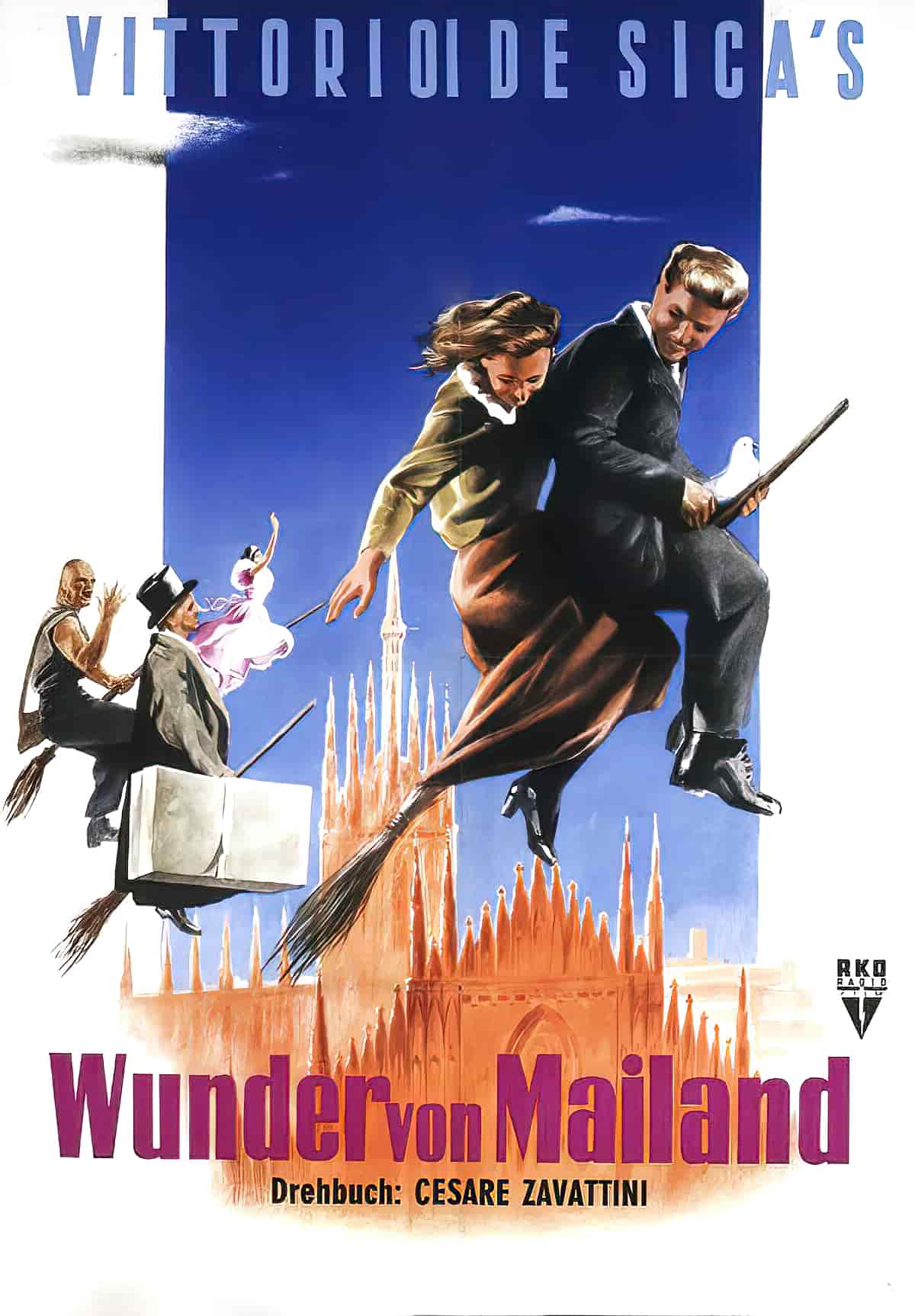
The boy below is sitting outside in the dark. Darkness and brooms don’t go luckily together. In Europe it considered unlucky to sweep your home after dark.
A broomstick made from tying twigs around a stick is known as a besom. Besom originates from the old English besema meaning ‘woman’ (because guess who did all the sweeping). ‘Besom’ has the same root word as ‘bosom’.
The first broom sticks typically used twigs from the broom plant (hence the name).
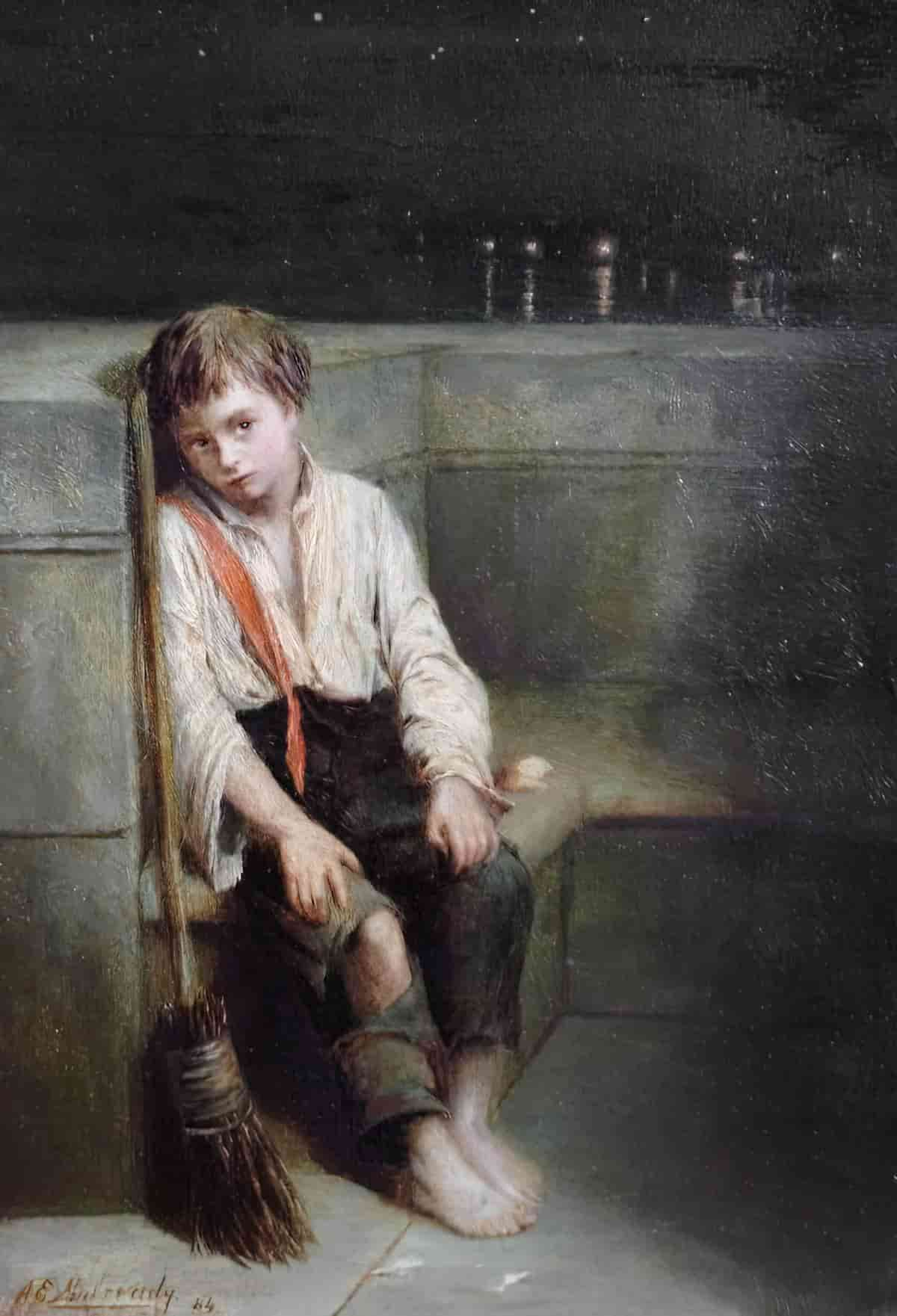
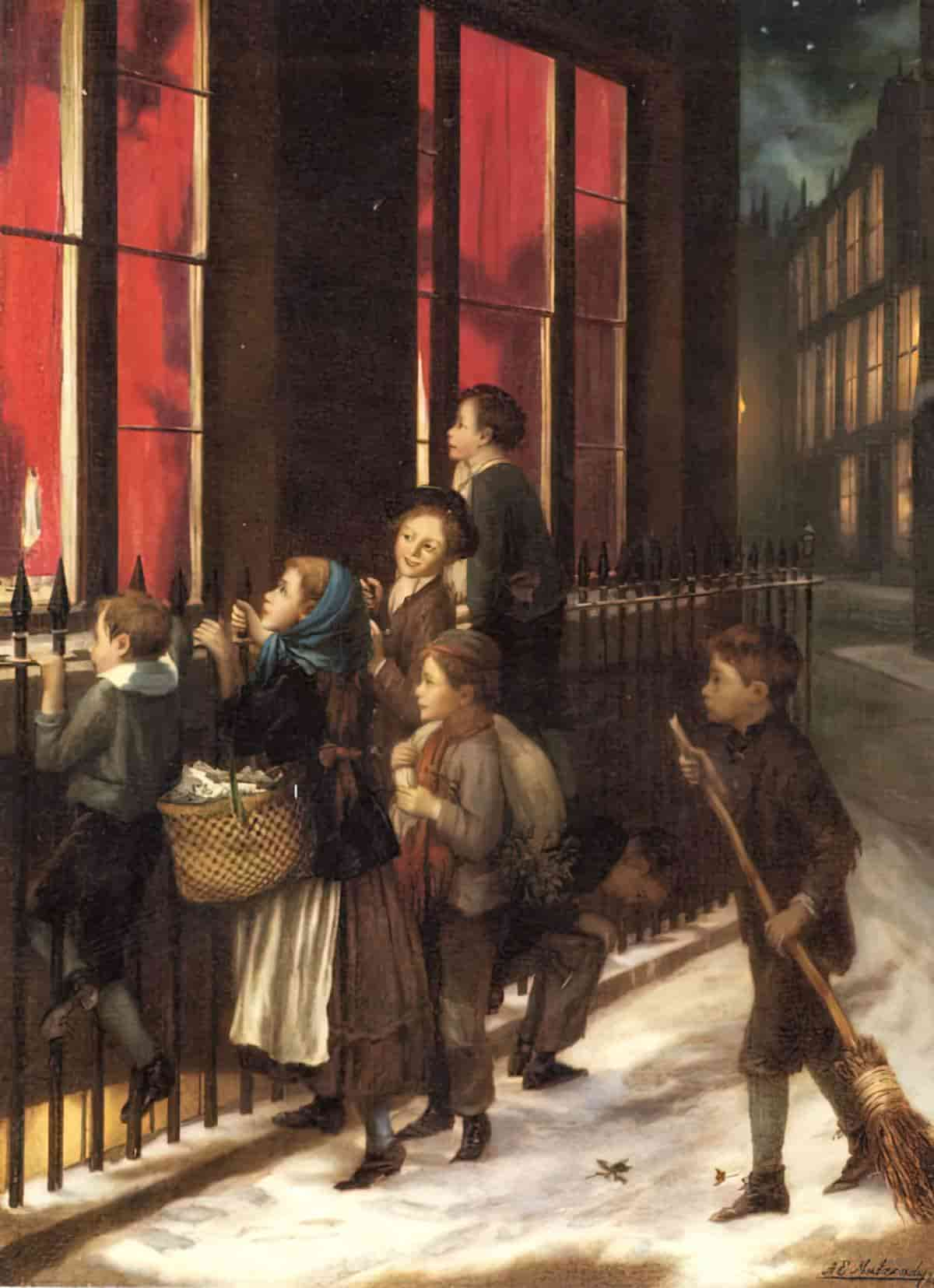
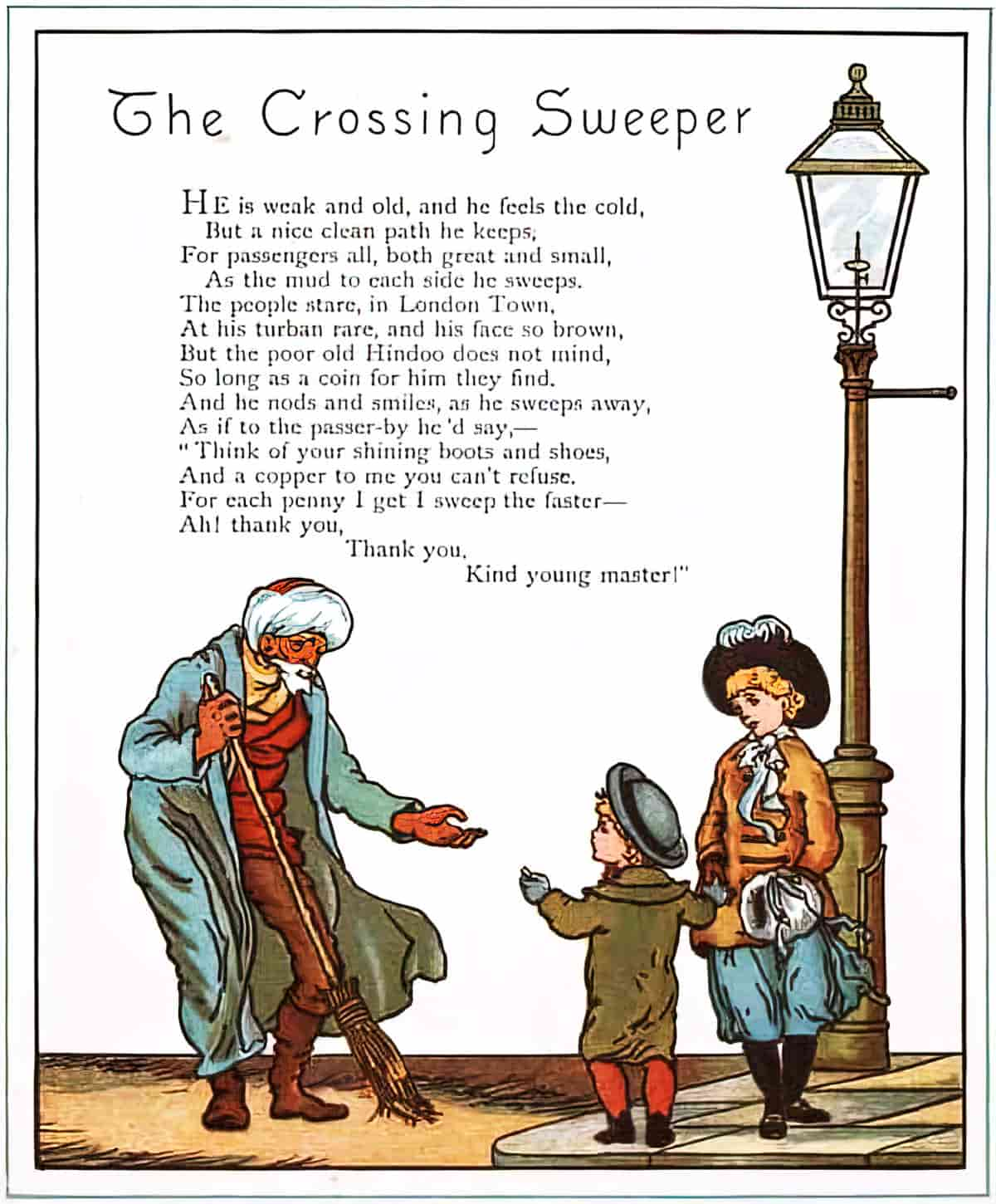
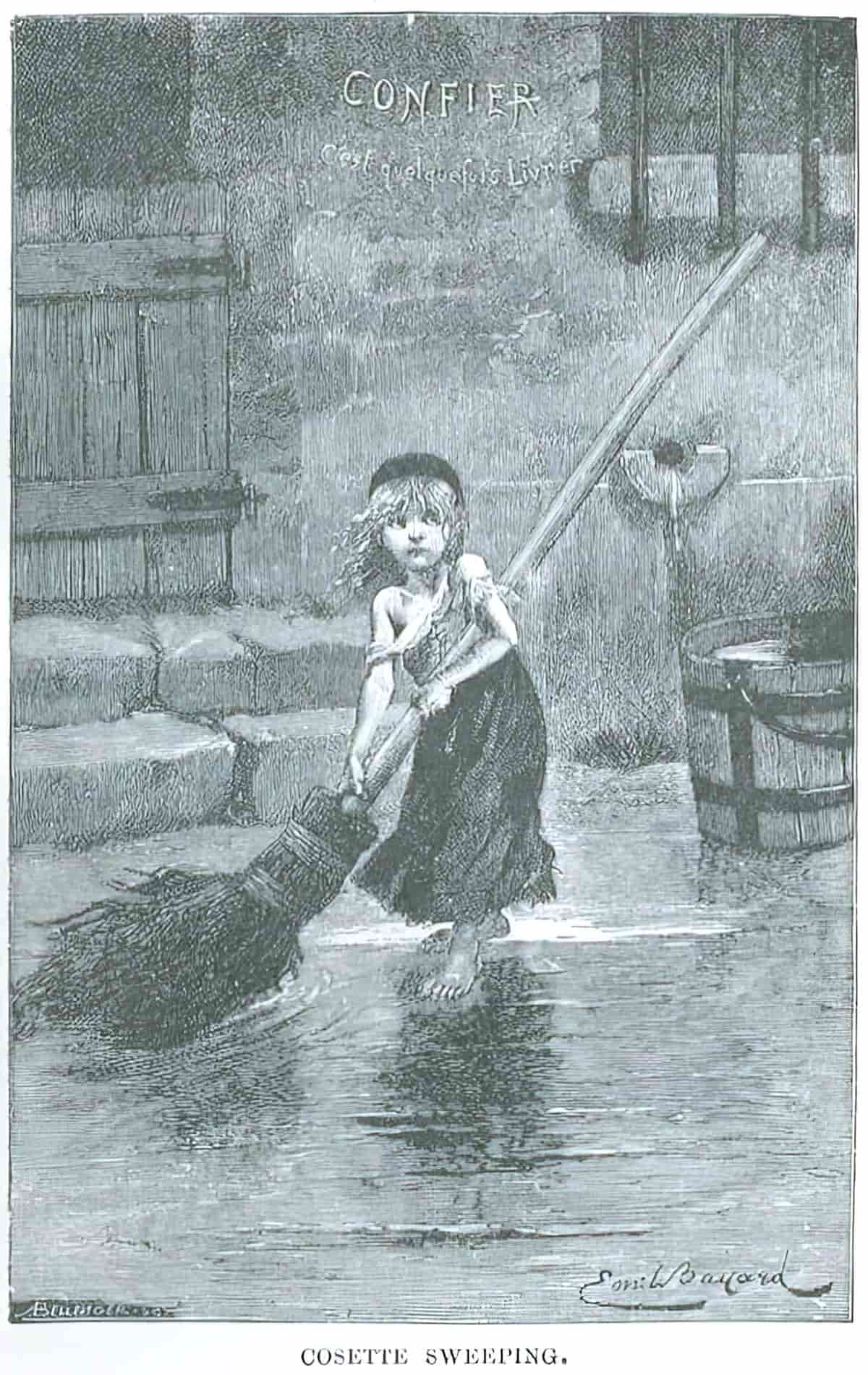
The broom does another double duty — in the pleasant and calming scene depicted below, the broom seems to simply add balance to the composition, and also act as another feature of the home, alongside gardens and pets.
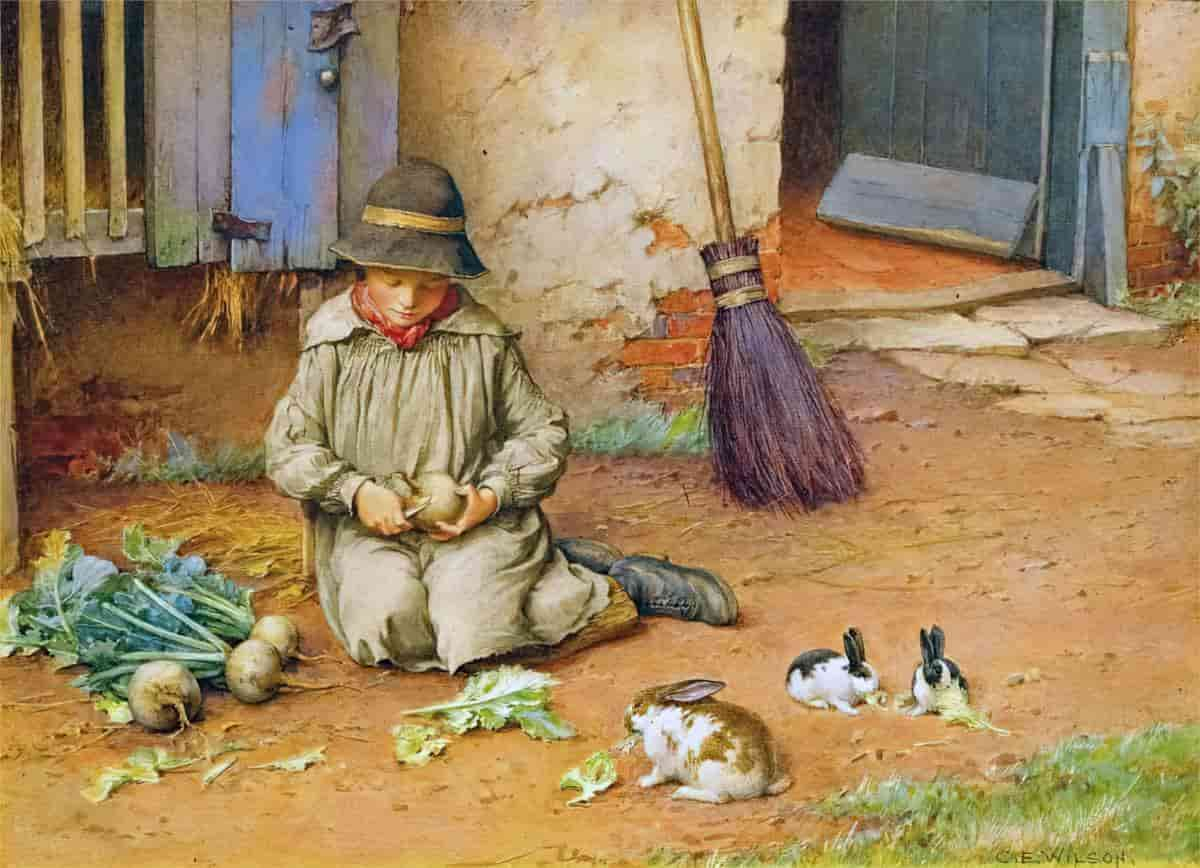
Here’s a similar bucolic composition from the same painter:
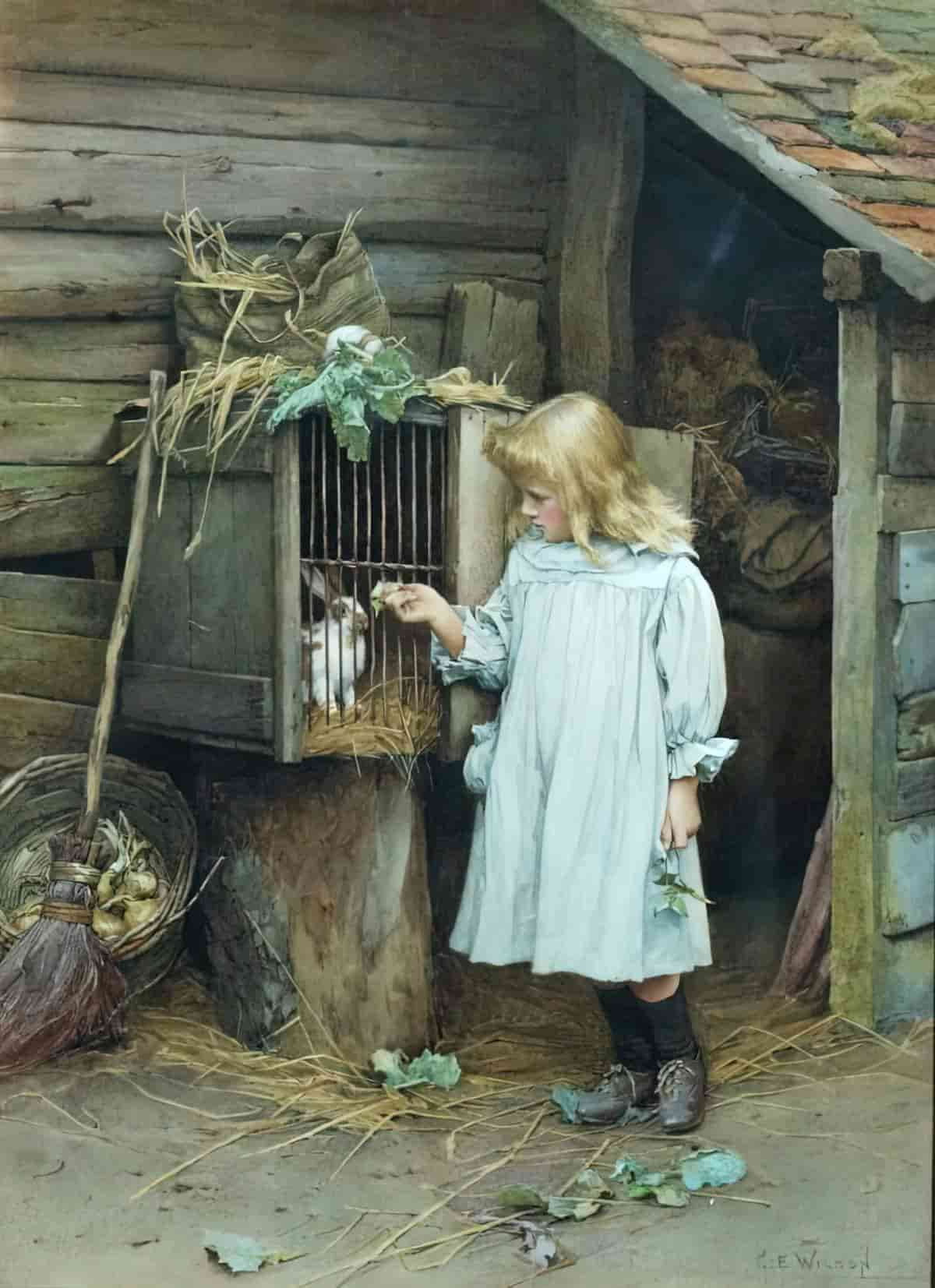
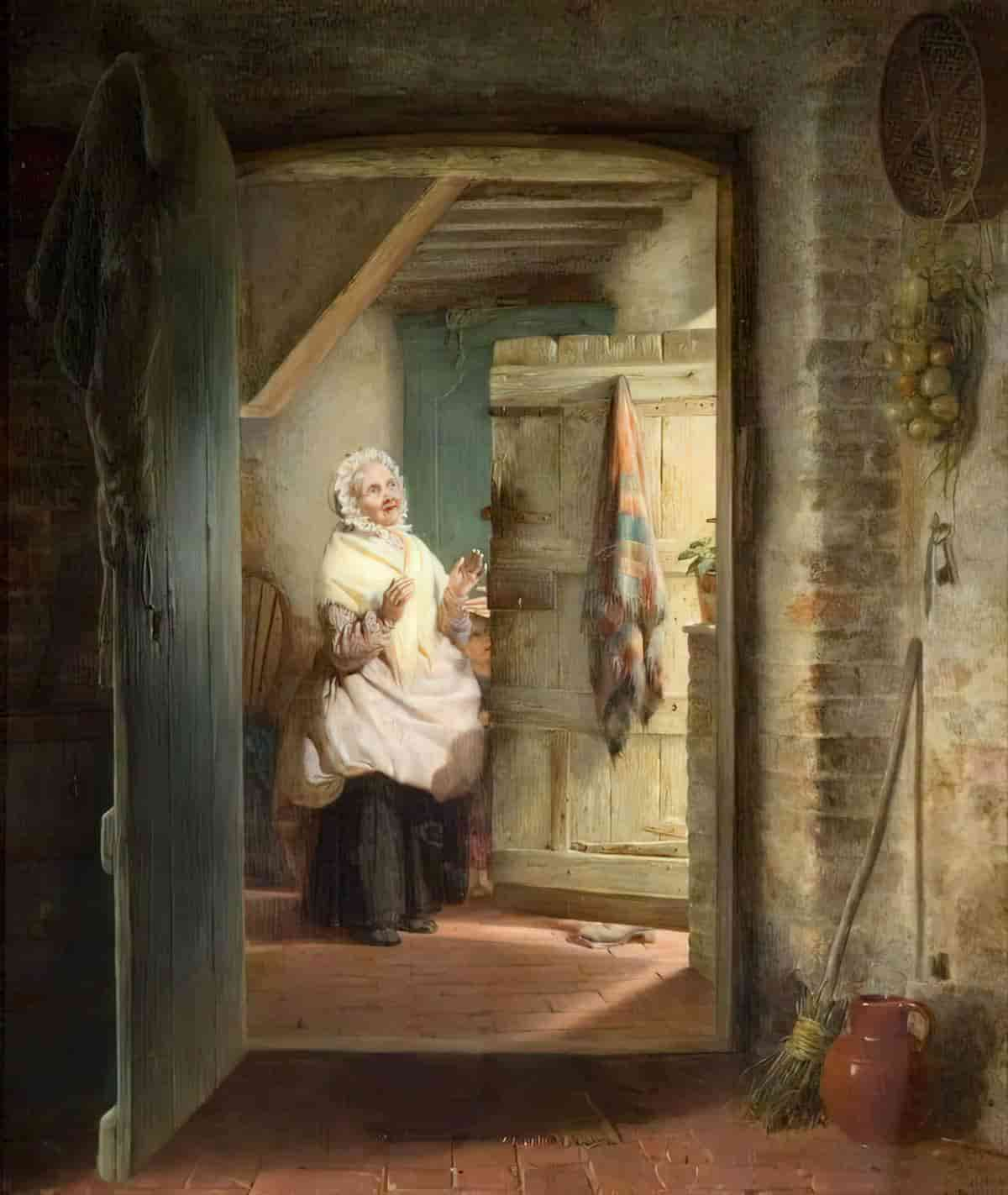
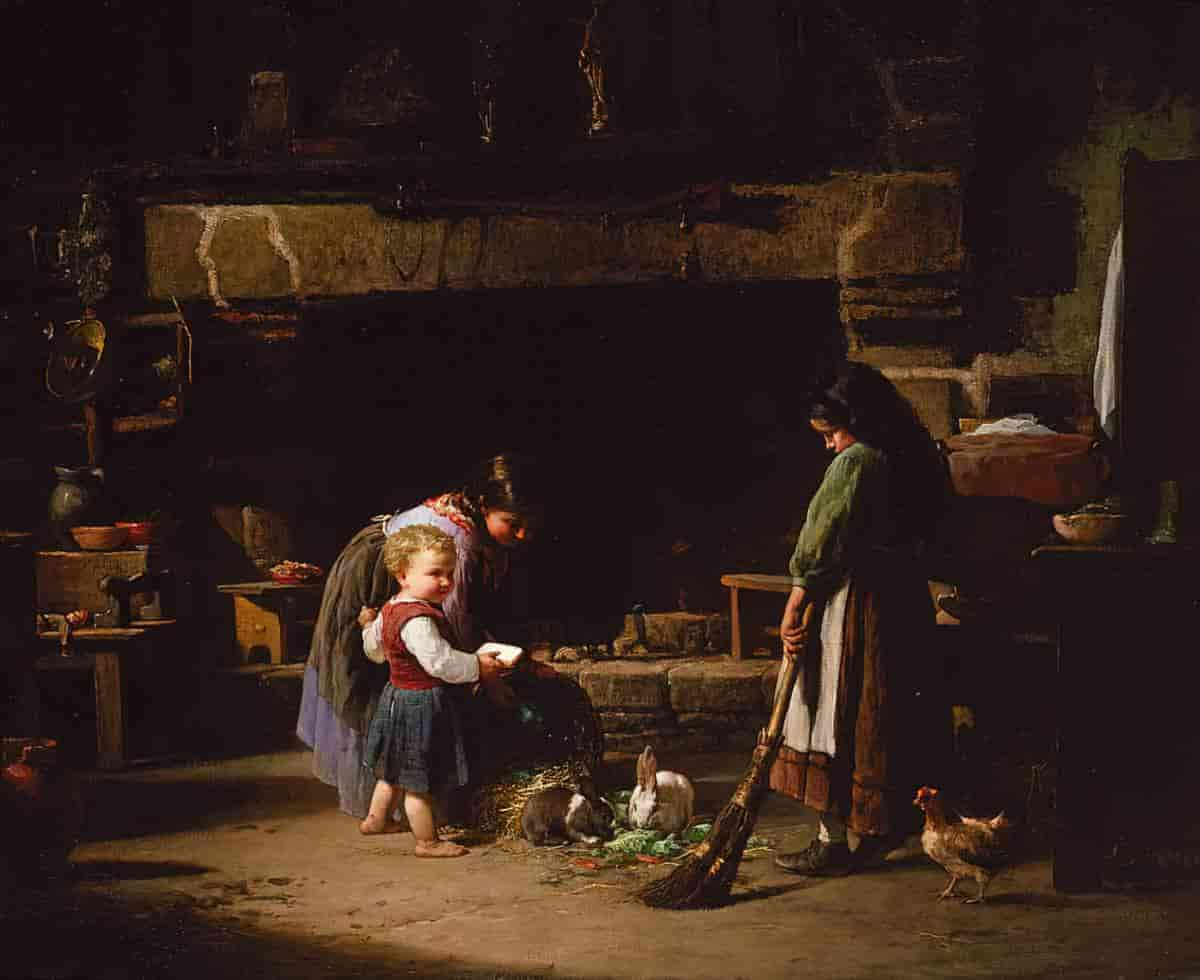
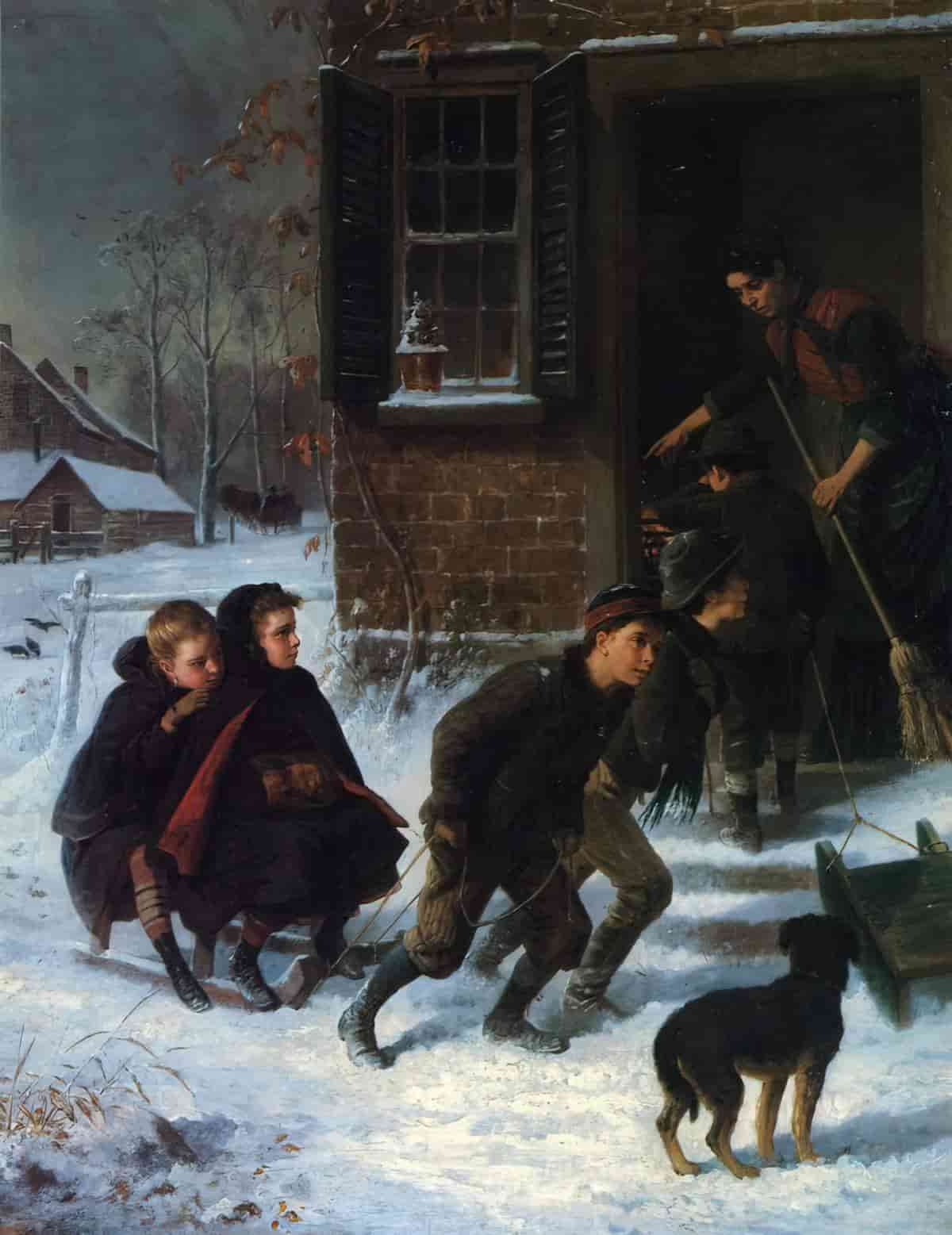
The outdoors equivalent of the hygge broom is the garden rake:
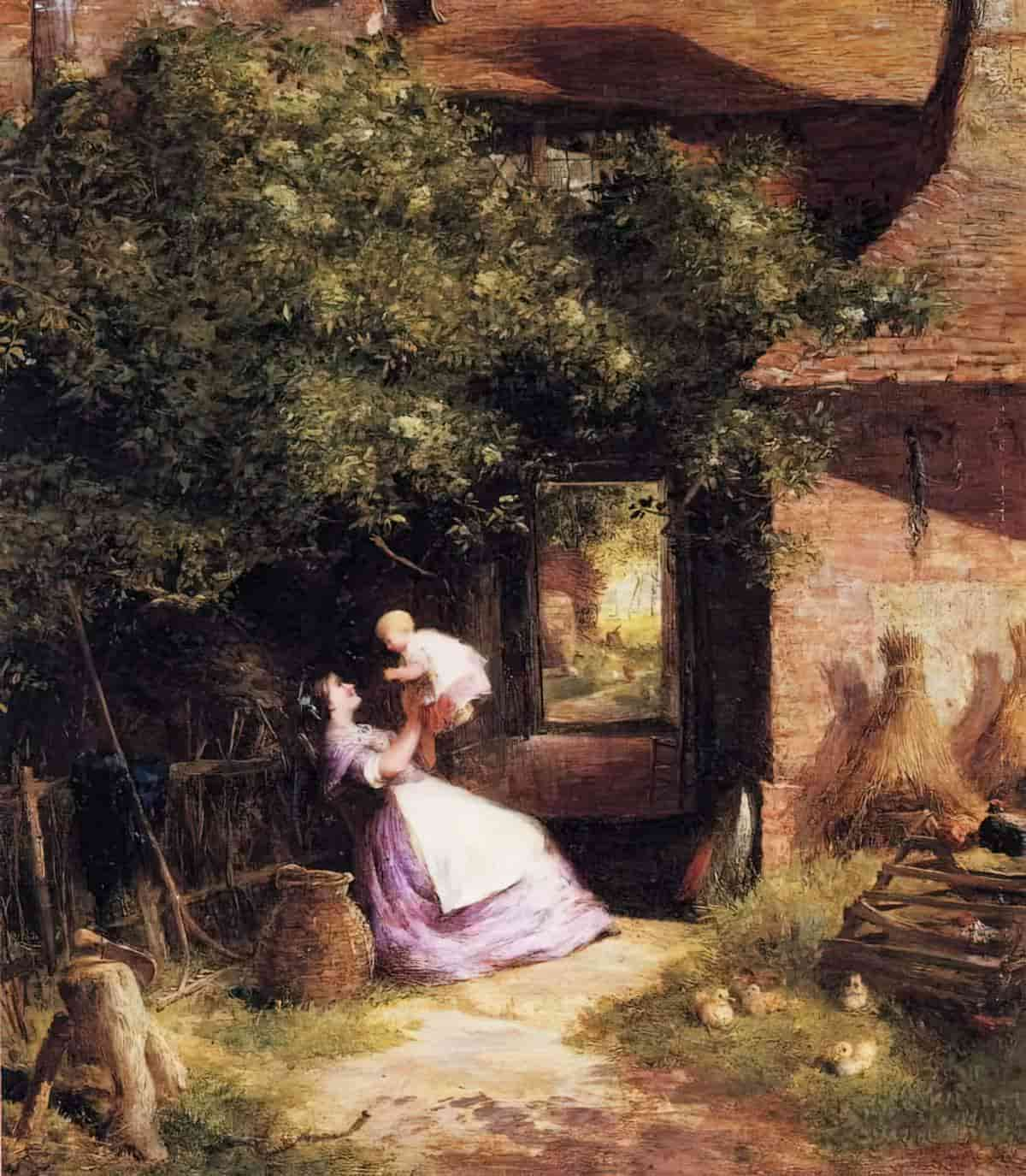
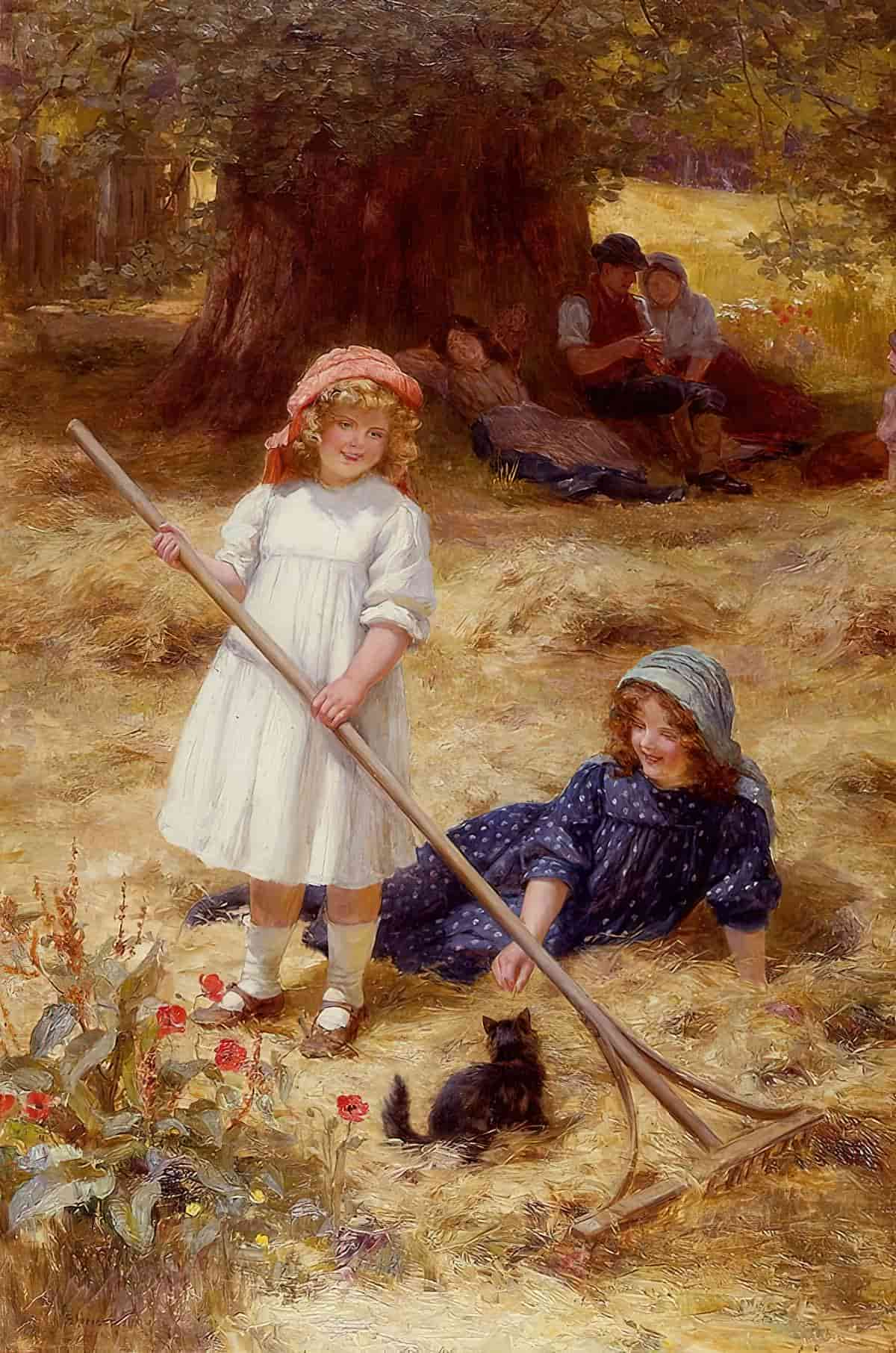
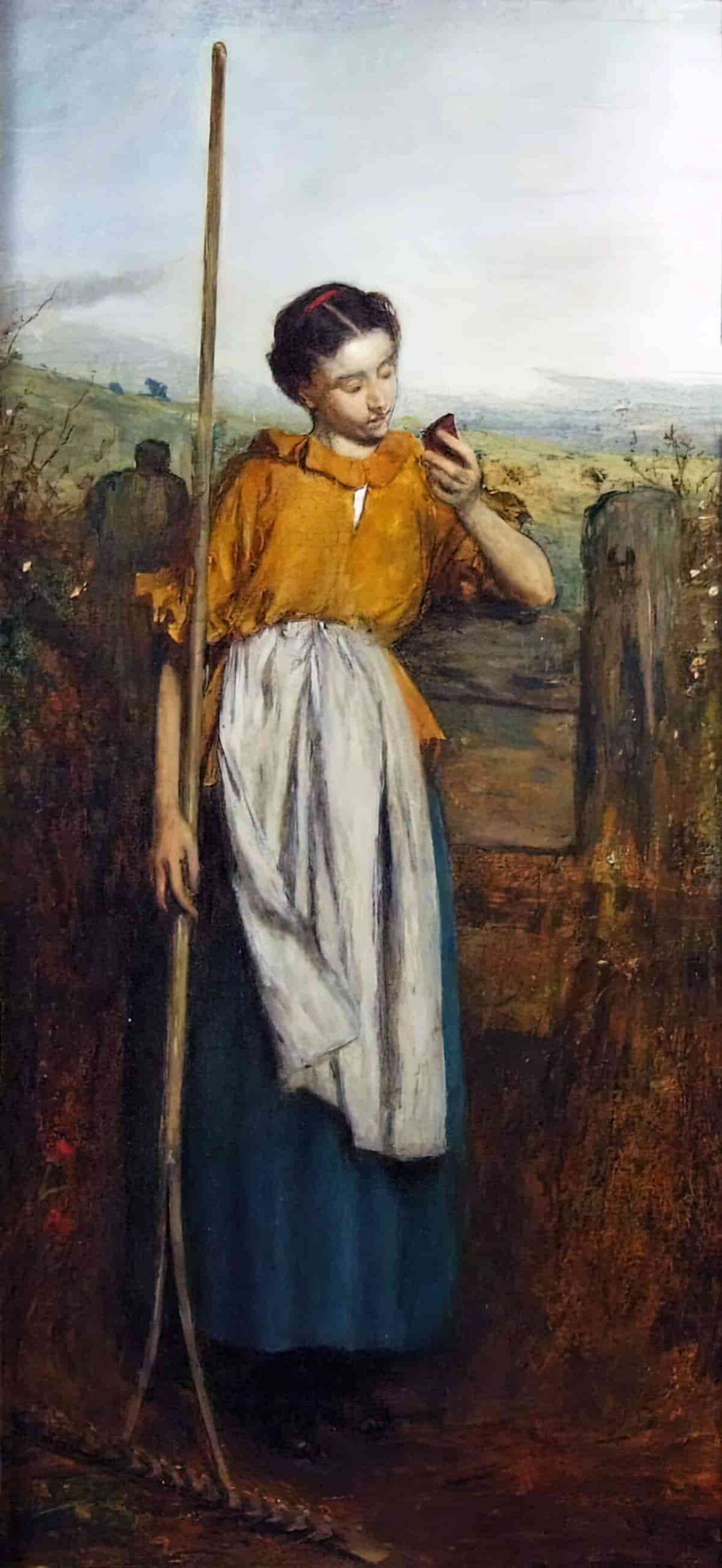
In the painting below we may wonder at the inclusion of the broom. We see a pretty girl admiring herself in the mirror — what’s with the broom edging into the scene?
It all becomes clear when we learn the title of the painting: Borrowed Plumes. A plume is a long, soft feather or arrangement of feathers used by a bird for display or worn by a person for ornament, or anything that spreads itself out as a bird plumes its feathers.
So these are not her clothes. This is a little brown bird dressing up as a fancier bird. The broom nearby tells us she’ll never be free of her mundane duties though, significantly, the broom isn’t positioned to appear in the mirror image.
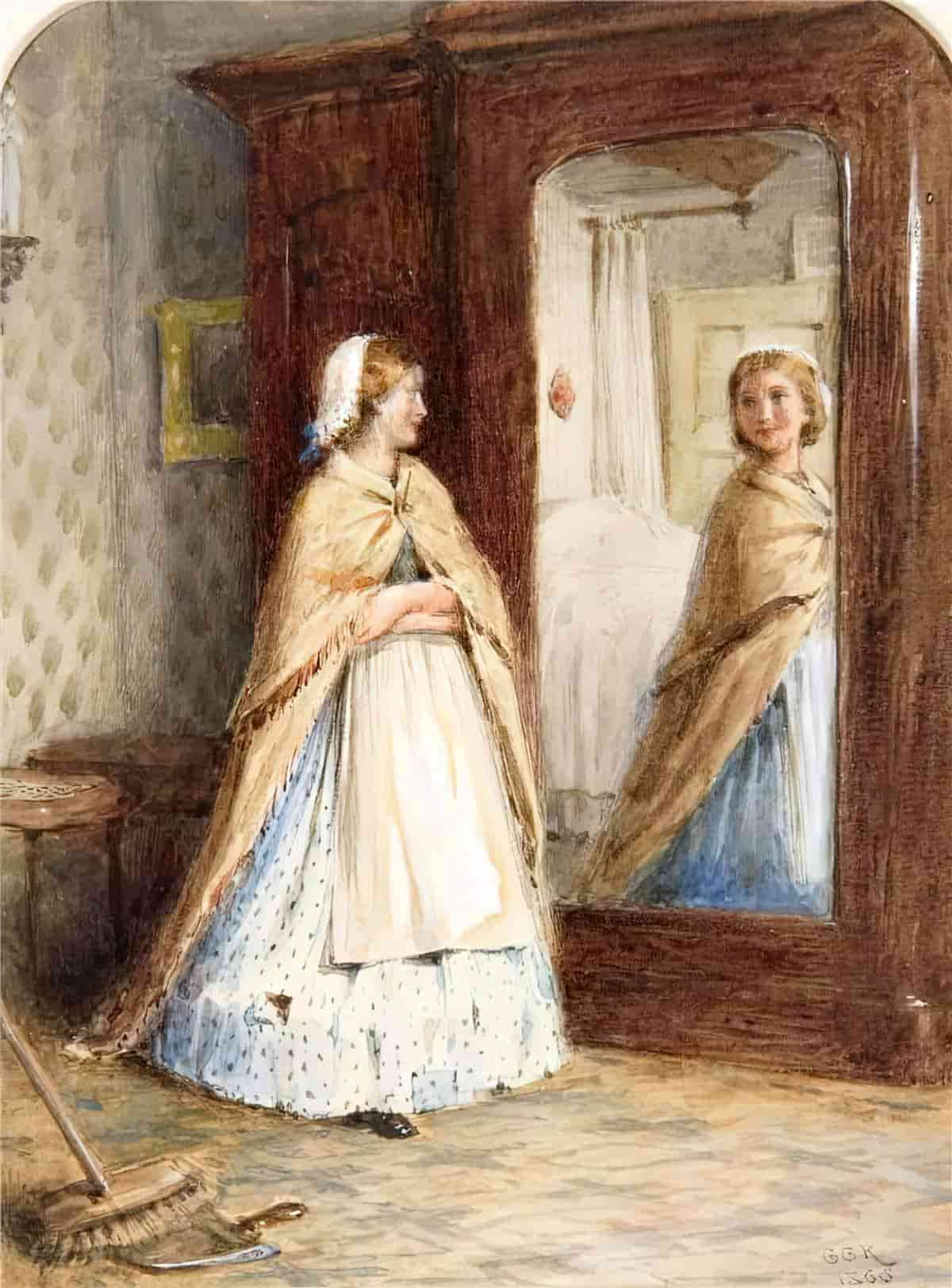
Below, children dress up for play. A broom is a mandatory accoutrement when dressing as Cinderella.
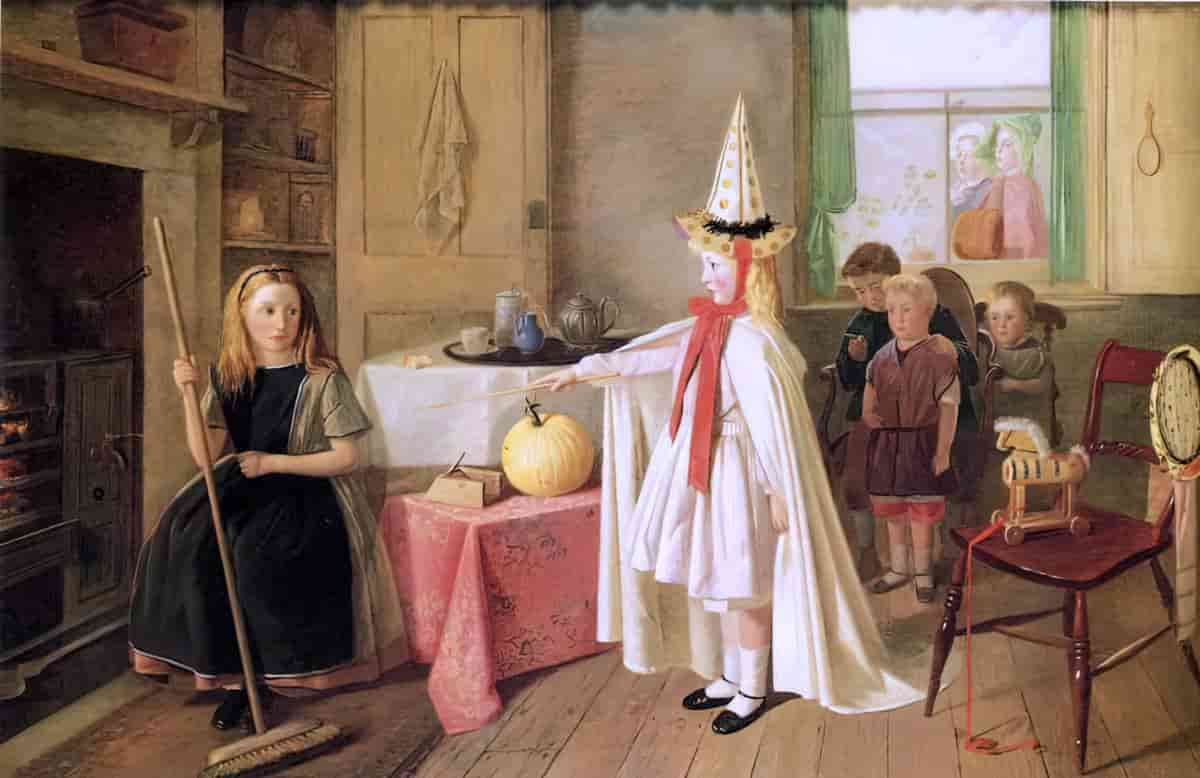
The broomstick below serves to anthropomorphise the mouse.
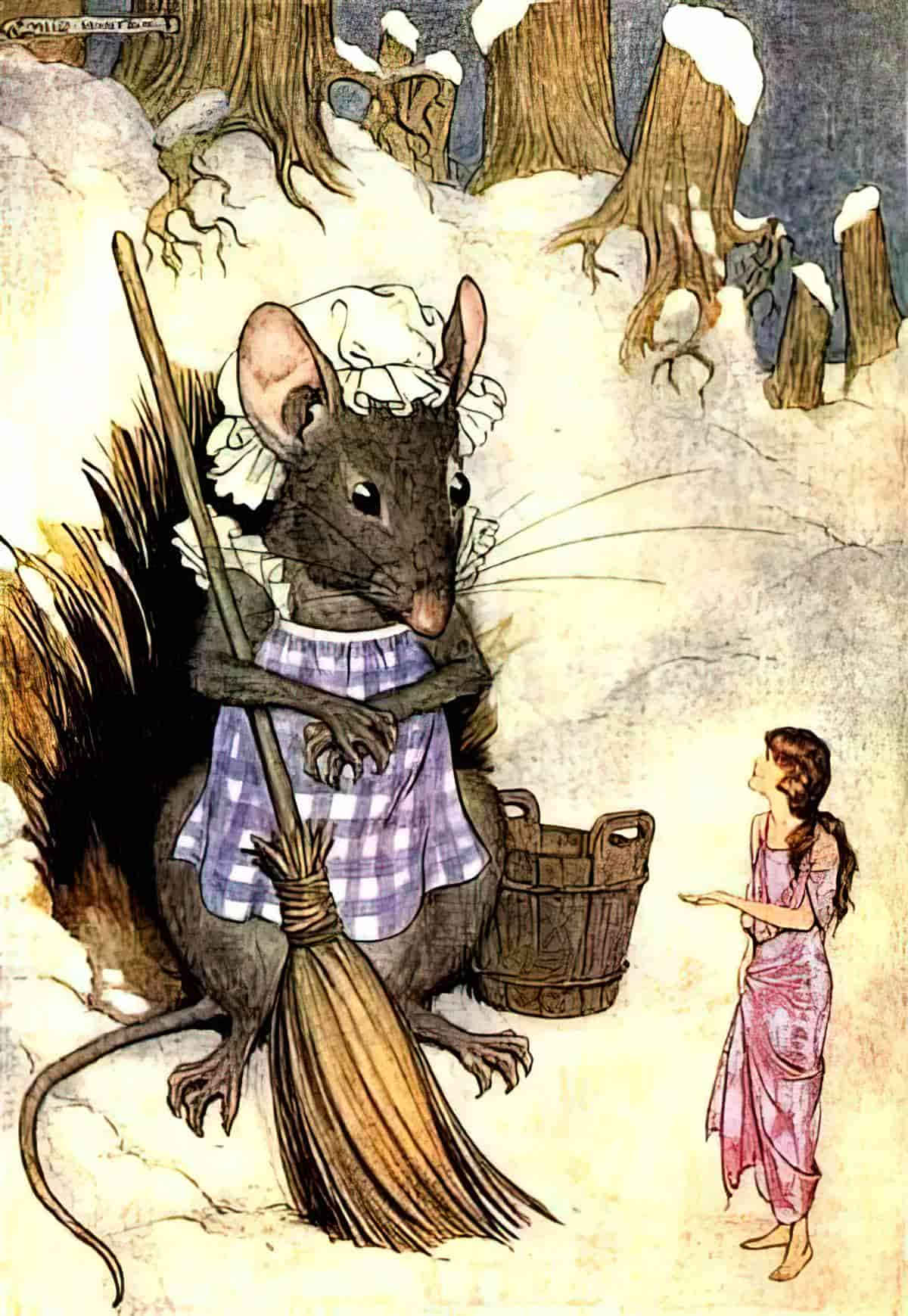
BROOMSTICK WEDDINGS
Broomstick weddings were common term during the 18th and 19th century England and referred to weddings not regarded legal.
In America slaves who lived on plantations were often refused the right to marry. Naturally they fell in love and yearned to commit themselves to the love of their life. When two lovers jumped over a broom together they were considered married. This tradition is related to the metaphorical act of ‘sweeping away’ — and fresh beginnings.
Others claim the stick on the ground represented a division between their old home and the new. Lovers thereby jump into their new home together, this time as a couple.
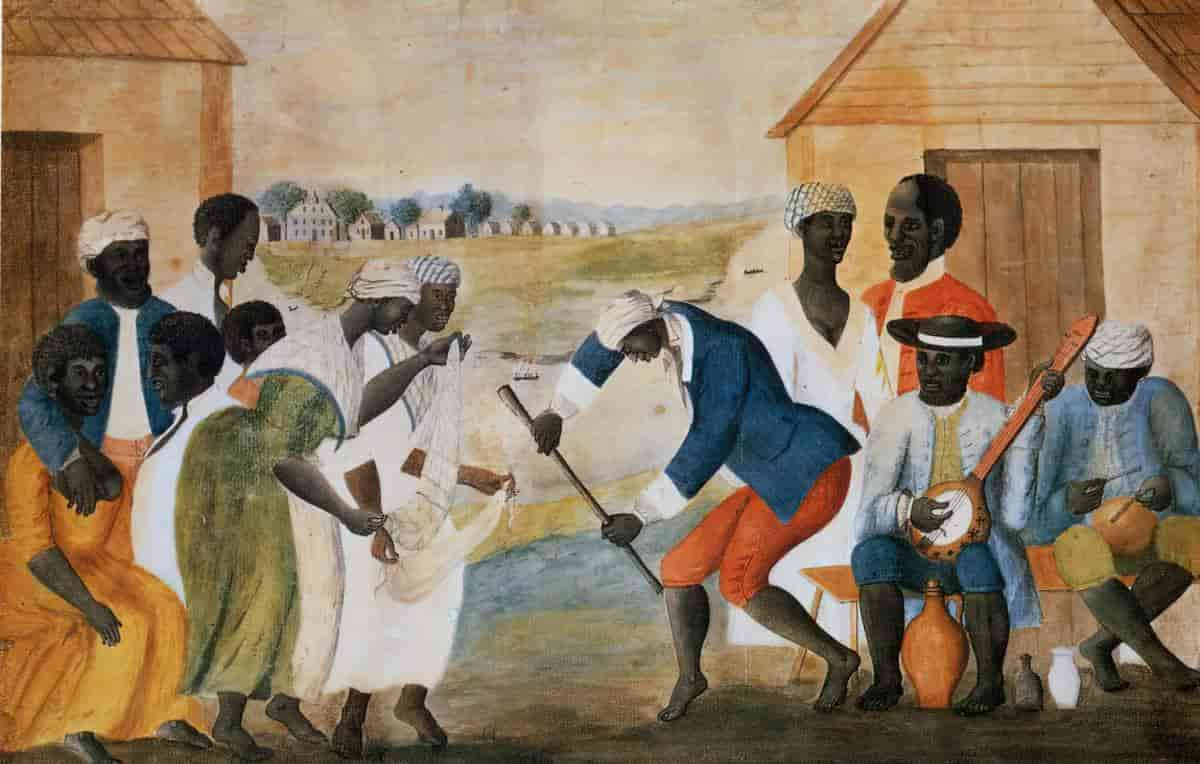
Supernatural Creatures
Brooms can be used to get rid of unpleasant things from the house — other than just dirt and dust.
- According to Chinese folklore, you can get rid of a vampire (jiangshi) by sweeping it out with a broom.
- According to French folklore it’s considered bad form to sweep up after dark in case good luck is swept away with the dirt.
- In Ancient Rome special broomsticks were used by sacred ‘midwives’ or wise women to symbolically sweep away any negative influences from a house in which a baby had just been born. These midwives were precursors to the modern conception of a witch, who flies around on a broomstick.
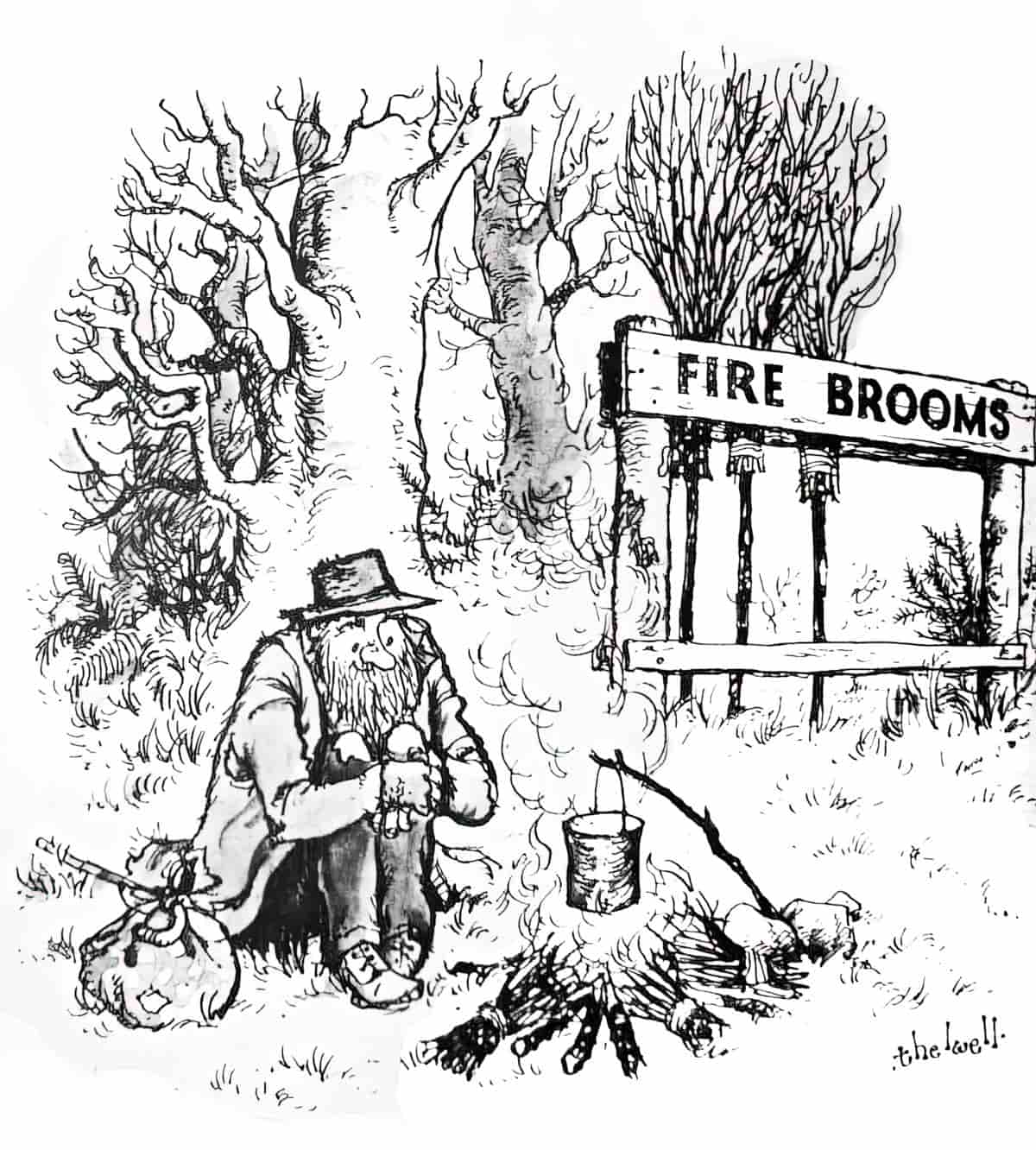
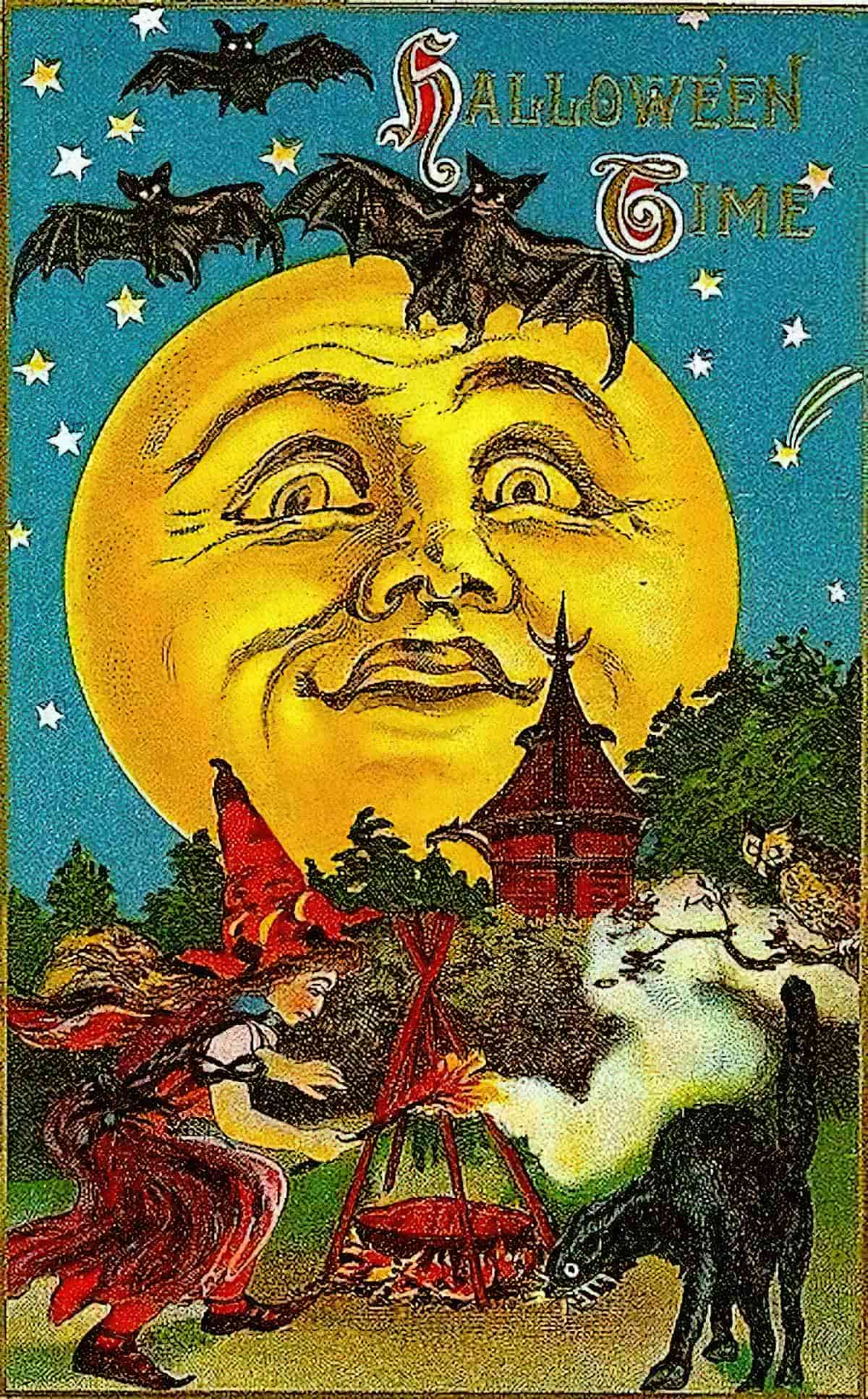
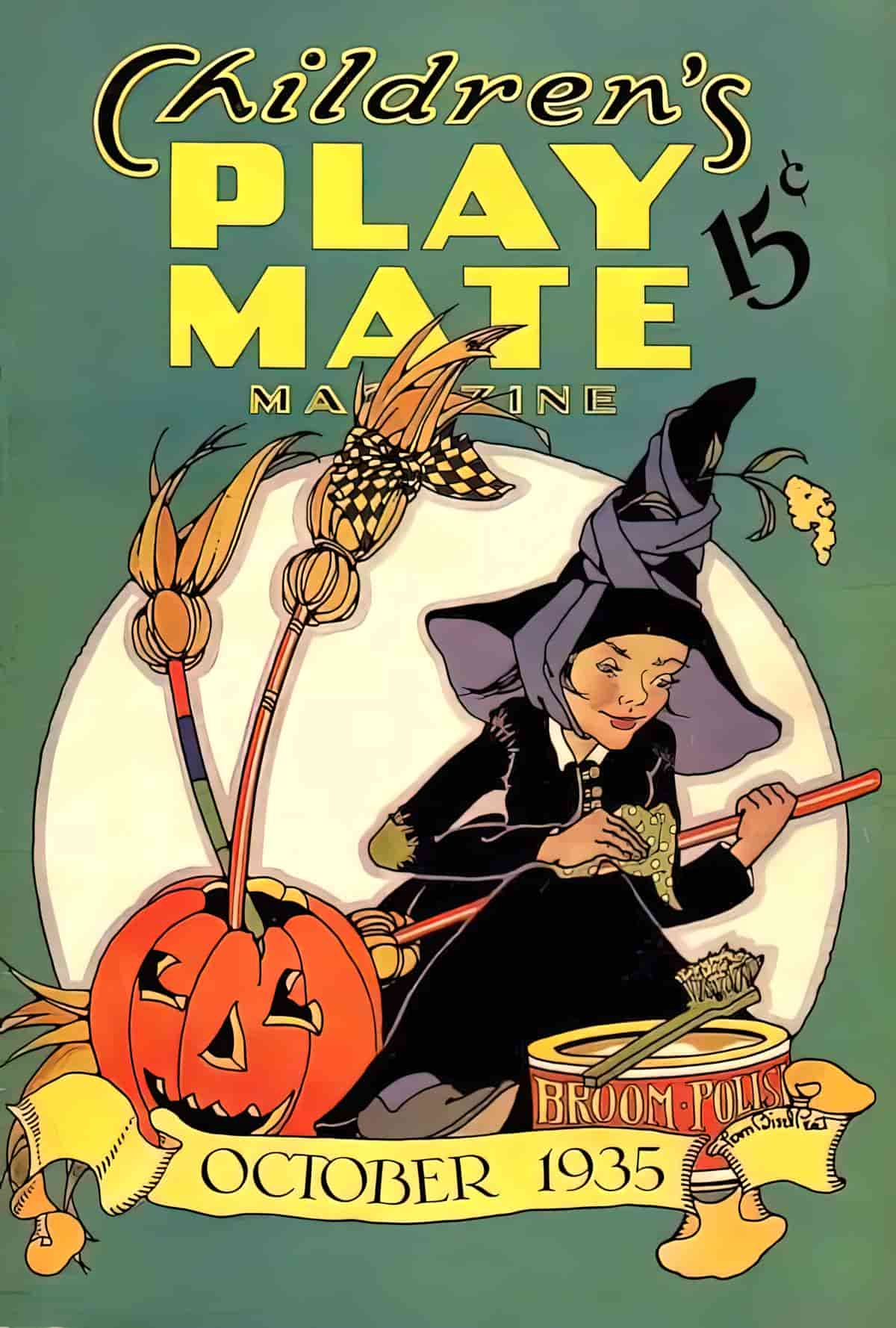

SEE ALSO
Paintings tagged with ‘broom’ at the Tate Online
The Widow’s Broom by Chris Van Allsburg
